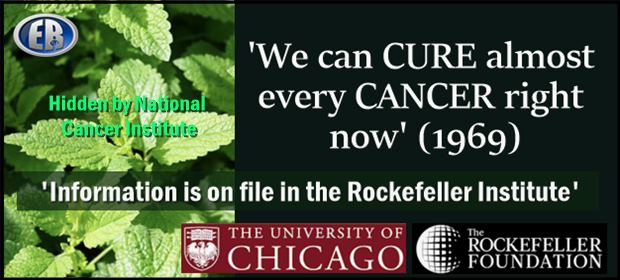
ER Editor: We do recommend poring through this piece, checking out the Amazon link and listening to the video below.
********
Richard Day Tapes on Cancer, and NAPRALERT, where the Rockefeller’s Cancer Cure Database may be hidden
This is speculation, but there’s enough to go on here to report. Dr. Lawrence Dunegan relayed a speech he heard from Planned Parenthood Director Dr. Richard Day where he reported that the Rockefellers maintained a database of cancer cures.
The full tape is hear (Part 1). I think it’s in NAPRALERT, maintained by the University of Chicago, maybe.

The University of Chicago was founded by J.D. Rockefeller in 1889. From University of Chicago – J.D. Rockefeller:
The University of Chicago has long accorded John D. Rockefeller the official designation of “Founder,” and that accolade may offer some historical compensation to Rockefeller’s more conventional and hostile sobriquet of “robber baron.” Simply put, Rockefeller’s enormous contributions, totaling almost $35 million between 1892 and 1910, made possible the creation of a world-renowned research university within the short space of two decades. Although Rockefeller took great pride in the new University, he visited its campus on only two occasions—at the 1896 Quinquennial Celebration and 1901 Decennial Celebration—and each time he kept a very low profile. This modesty was in keeping with his resolute conviction that others — especially the President and the Trustees — needed to accept and to exercise responsibility for the new University. As Rockefeller’s confidant and sometime advisor, Frederick Taylor Gates, put it to William Rainey Harper in 1892, “He would prefer in general not to take active part in the counsels of the management. He prefers to rest the whole weight of the management on the shoulders of the proper officers.”
Pictured below is the uber-creepy Rockefeller Memorial Chapel at the University of Chicago, modeled on a medieval cathedral. This picture should certainly serve to dispel any rumors that the Rockefellers are one of the 13 satanic “Illuminati” families of incestuous inbred pedophile cannibals who believe they are chosen to rule the world by controlling science.

J.D. Rockefeller also founded The Rockefeller University in New York in June 1901 as The Rockefeller Institute for Medical Research—often called simply The Rockefeller Institute. There’s reason to believe that the cancer cures records are kept at Chicago, though. First let’s get to what Dr. Lawrence Dunegan said.
https://www.bitchute.com/video/oDZYui0TEzZU/
Rumble https://rumble.com/v25f0iu-dr-dunegan-recalls-the-richard-day-talk-mar-20-1969.html
ER: We do recommend listening to this for general background to today’s atrocities. It’s all been a long time in coming, but very planned at each step of the way. Go to minute 35:00 for mention of the Rockefellers (brief transcript given below). Remember those attractive running shoes we used to buy?
“Cancer. He said we can cure almost every cancer right now. Information is on file in Rockefeller Institute if it’s ever decided that it should be released. But consider if people stop dying of cancer, how rapidly we would become overpopulated. You may as well die of cancer as something else. Efforts at cancer treatment would be geared more toward comfort than toward the cure. There’s some statement that ultimately the cancer cures which were being hidden in Rockefeller Institute would come to light because independent researchers might bring them out despite these efforts to suppress them. That at least for the time being letting people die of cancer was a good thing to do because it would slow down the problem of overpopulation.
Another very interesting thing was heart attacks. He said there is now a way to simulate a real heart attack. It can be used as a means of assassination. Only a very skilled pathologist who knew exactly what to look for in an autopsy could distinguish this from the real thing. I thought that was a very surprising and shocking thing to hear from this particular man at this particular time. This and the business of the cancer cure really still stand out sharply in my memory because they were so shocking and at that time seemed to be out of character.”
So why do I think the cures are at Chicago instead of New York?
The first thing I thought of when I heard this was the National Cancer Institutes plant research program led by Jonathan Hartwell that identified over 3,000 plants with anti-cancer properties. I wrote about it 3 years ago. It’s not a great article, but does have a lot of information in it, such as Sloan Kettering was involved in the NCI study. Sloan Kettering is associated with the Rockefellers.
The NCI found 3,000 plants with anti-cancer properties.
CHARLES WRIGHT
Introduction/Summary. The NCI was established in 1937. They began to screen plants for anti-cancer compounds in 1955. Jonathan Hartwell was the lead scientist in the plant program. The private institute of Sloan-Kettering screened plants as well in this time period. The exact relationship between Sloan Kettering and the NCI is not clear.
Richard Day’s 1969 statement that “independent researchers might bring them out despite these efforts to suppress them” fits with what Jonathan Hartwell was doing between 1967-1971.
The NCI tested almost every plant in the world for anti-cancer properties between 1955 and 1981 when the program was ended. Jonathan Hartwell Hartwell published a lot of what he knew in a Lloydia, a Quarterly Journal of Biological Science. Later they were bound in a book “Plants Used Against Cancer,” published in 1982. Quarterman Publications, the company that published the book is a shell company.
ER: note the price. As of today, it is almost $2,000. Abebooks, almost $4,000.
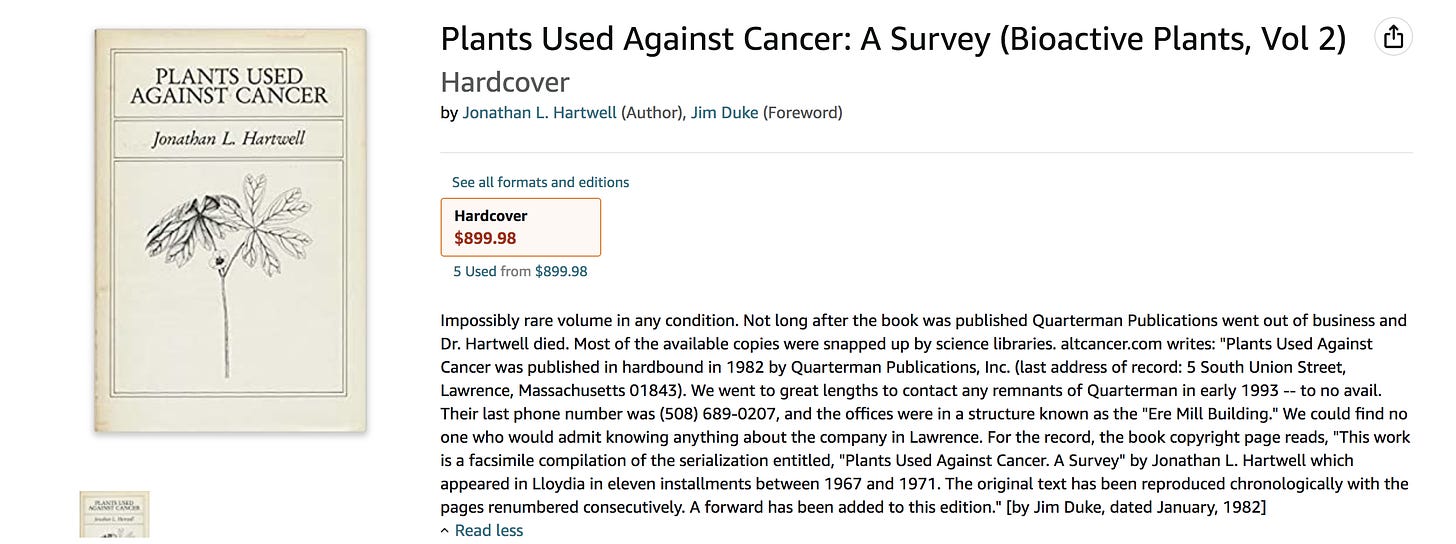
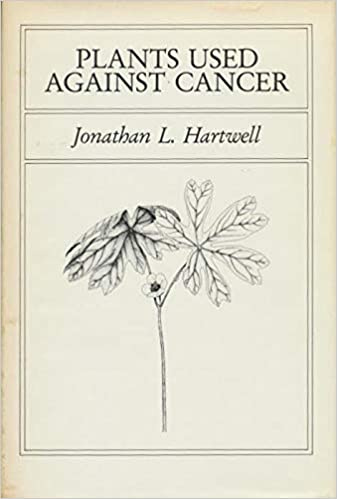
In 1975, Norman Farnsworth set up NAPRALERT.
NAtural PRoducts ALERT or NAPRALERT® is a relational database of natural products. Ethnomedical, pharmacological, and biochemical information on extracts of organisms from in vitro, in situ, in vivo, in humans (case reports, non-clinical trials) and clinical studies are included. In addition, similar information is available for metabolites from natural sources.
Data from more than 200,000 scientific papers and reviews are included in NAPRALERT with about 25% of the database derived from abstracts and 75% from original articles. Organisms from all countries of the world are represented, including marine and microorganisms. In the past we have had the occasion to acquire complete literature on about 250 genera of plants and these data appear in NAPRALERT. The earliest papers date to the late 1800’s. The database was conceived of and developed by the late Norman R. Farnsworth, distinguished professor of pharmacognosy at UIC and first director of the UIC Botanical Center.
Farnsworth made a survey of Hartwell’s journals and published a supplement to Hartwell in the Journal of Ethnopharmacology in 2000: Plants used against cancer – an extension of the work of Jonathan Hartwell. In this paper, Farnsworth described the NAPRALERT database at the University of Chicago, which contained Hartwell’s journals.
A survey of plants used ethnomedically against cancer was undertaken, using the NAPRALERT database currently maintained by the Program for Collaborative Research in the Pharmaceutical Sciences, College of Pharmacy, University of Illinois-Chicago. We report over 350 species which are reported to be used against cancer and not cited in the work of Jonathan Hartwell, “Plants used against cancer: a survey”, including previously unrepresented genera and families.
Below are the papers from the collection of Norman Farnsworth on file at NAPRALERT. I don’t think it’s everything in there, just his own collection. His Hartwell collection is on page 19. There are some other very interesting items in there. Turns out that there was probably more testing of these plants than just for anti-cancer properties. They would have likely searched them for bioweapons (think Ricin), truth serums, etc. The last thing they gave a damn about was fighting cancer because the NCI hid the results. I suspect that the Rockefellers would have the complete testing results of the NCI. One of Farnsworth’s entries is “National Cancer Institute Anti-Cancer Data – DR & D. 47T-043075 1974-1975.”
Someone tested plants for their ability to regulate fertility, beginning in 1955, when the NCI program began.
Series X. World Health Organization 1955- 2005, 4 Boxes. Dr. Farnsworth’s was involved in two separate programs related to WHO: the WHO Special Programme on Research, Development and Research Training, Task Force on Plants for Fertility Regulation
Sub-Series X.C. Fertility Research (1857-1996), 14 Boxes. These subject files were labeled by Dr. Farnsworth and are related to his work with WHO. Additionally, parts of this collection of fertility research were not specified to projects he was working on and were most likely used for reference. Included are scholarly papers, lab results, and booklets.
Aside: Data mining to determine diets that affect birth rates is the type of research that the “father of clinical trials,” Austin Bradford Hill, was involved in. First he used regression models in an effort to determine how foods affected birth rates in London. The data was unclear in the London population because there was ample food and the foods were all generally healthy enough then that there was no significant variance in birth rates based on diet. Hill designed more restrictive clinical trials using mice to determine what affected birth rates.
Another aside: One of these “fertility regulating” plants would have certainly been Maytenus ilicifolia, likely due to the high amount of epifriedelanol in its leaves. It is a good candidate to cure estrogen-negative cancer in women. It is used by people in South America to both fight cancer and for birth control.
Epifriedelanol, a “phytoestrogen” with anti-cancer applications
CHARLES WRIGHT
BACKGROUND – National Cancer Institute anti-Cancer Plant Program. The National Cancer Institute was founded in 1935. In 1955, the NCI began a Manhattan-style project to collect all the plants of the world to test them for anti-cancer properties. By 1977, the Office of Technology Assessment (OTA), (a now-shuttered research branch of Congress tasked with r…
I have proposed to use regression analysis of plant compounds and antibiotics to determine what cures cancer. I’m sure they found some obscure ones we aren’t aware of, but there are plenty of well-known ones.
Continuing with the Farnsworth papers in NAPRALERT at the University of Chicago. Looks like Farnsworth rated the “antifertility plants.”
Six-Centre Programme – Antifertility Plants Rated 200 Points of Over (A-D) – Priority Categories A-C. (1-4) 1978
Vaccines are listed on page 56 with a host of other “fertility” papers.
- Reproductive Endocrinology Research 1971
- Contraceptive Development Research 1973
- Human Fertility Regulation 1976
- Fertility Regulation Advances 1980
- Human Fertility Control Issues 1974
- Fertility Vaccines Development and Regulation 1975
- Ovum Transport and Fertility Regulation 1975
- Human Fertility Regulation Research 1976
- Immunological Response of the Female Reproductive Tract 1976
- Human Reproduction Research and Development Programme 1980
The Rockefellers are listed once.
Population and Health Program of The Rockefeller Foundation – “Possible Contraceptive Drugs of Plant Origin” 1974
Complete pages are below. It’s easier to click on the .pdf to search the document.
Norman R. Farnsworth Papers 1930-2011
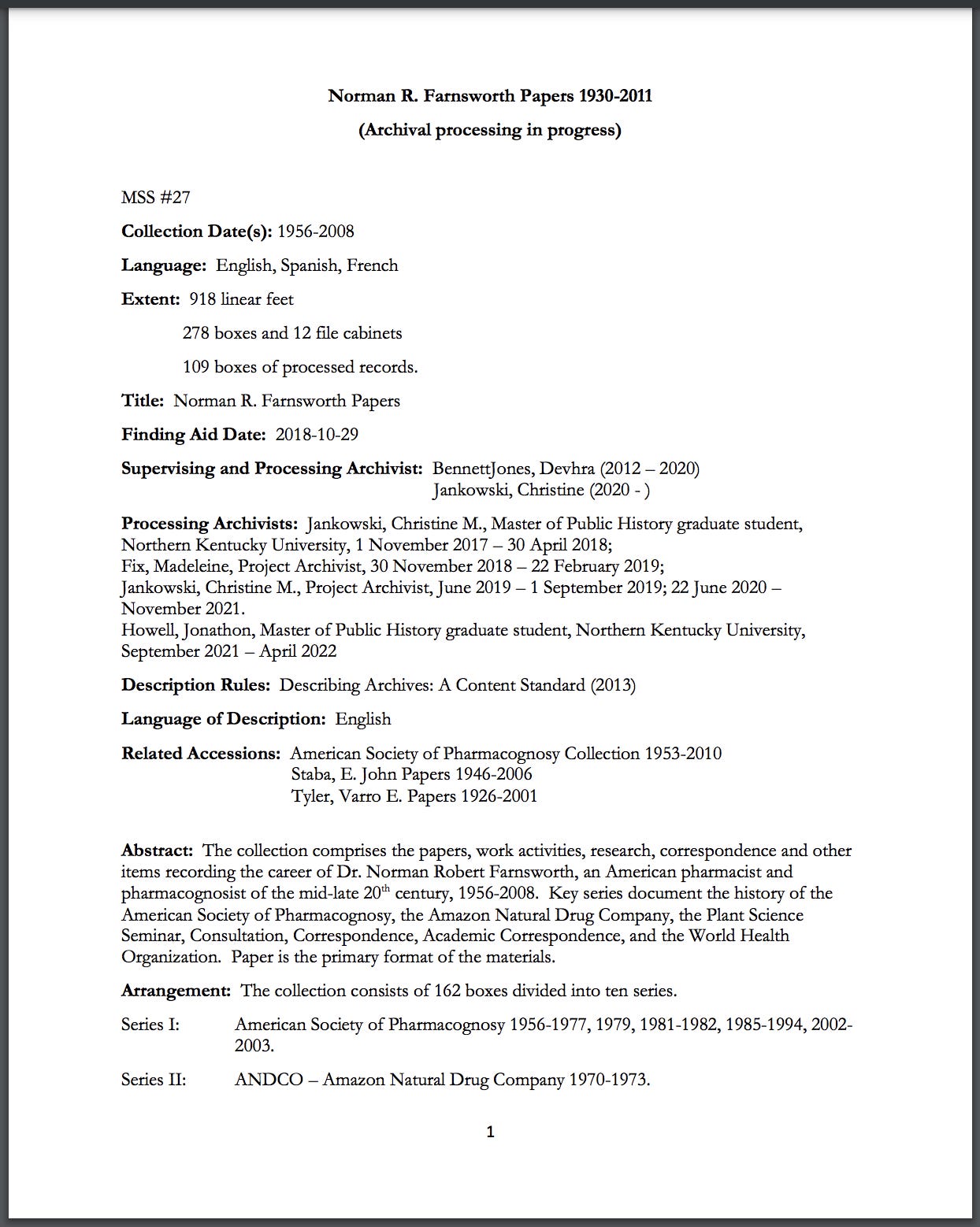
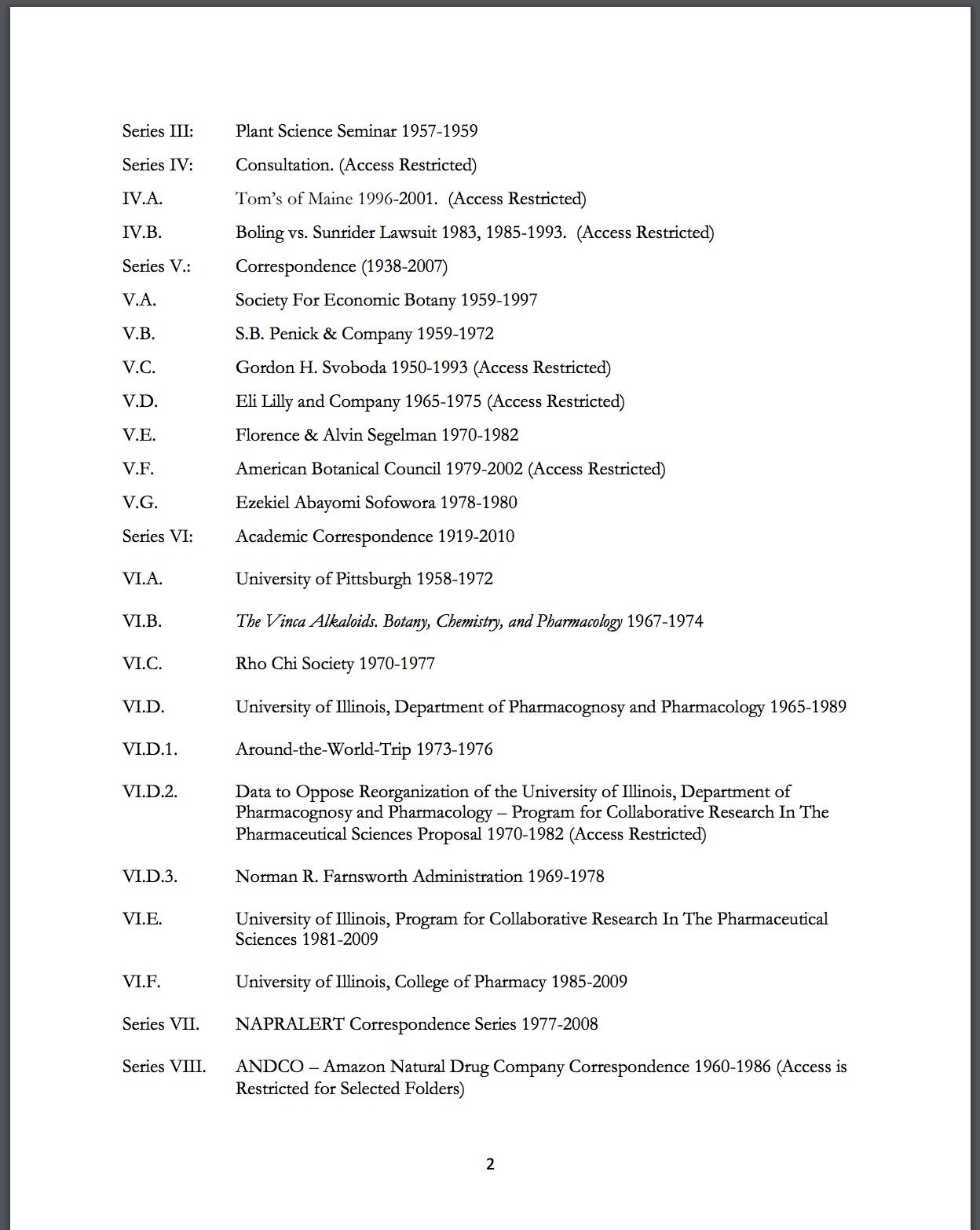
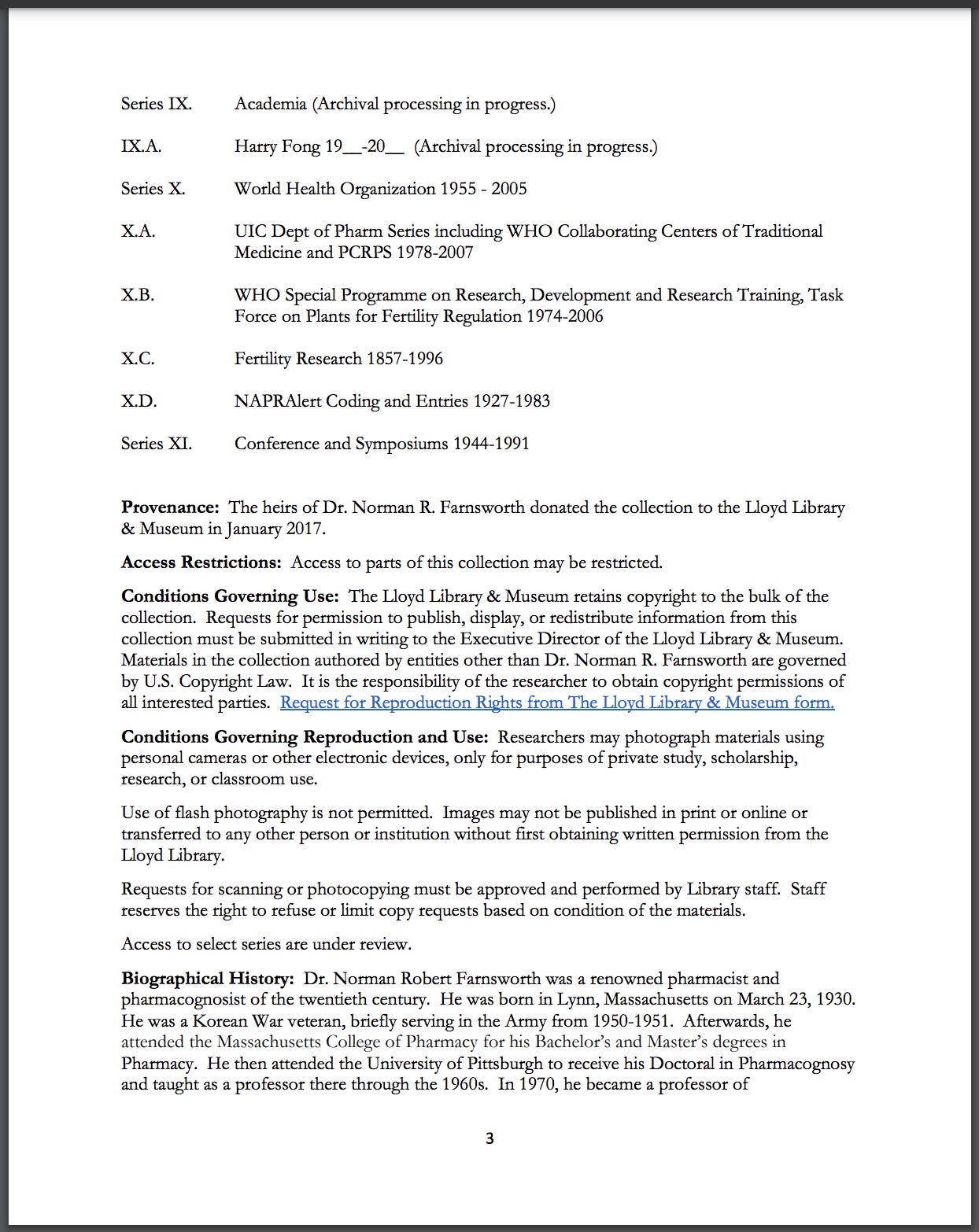
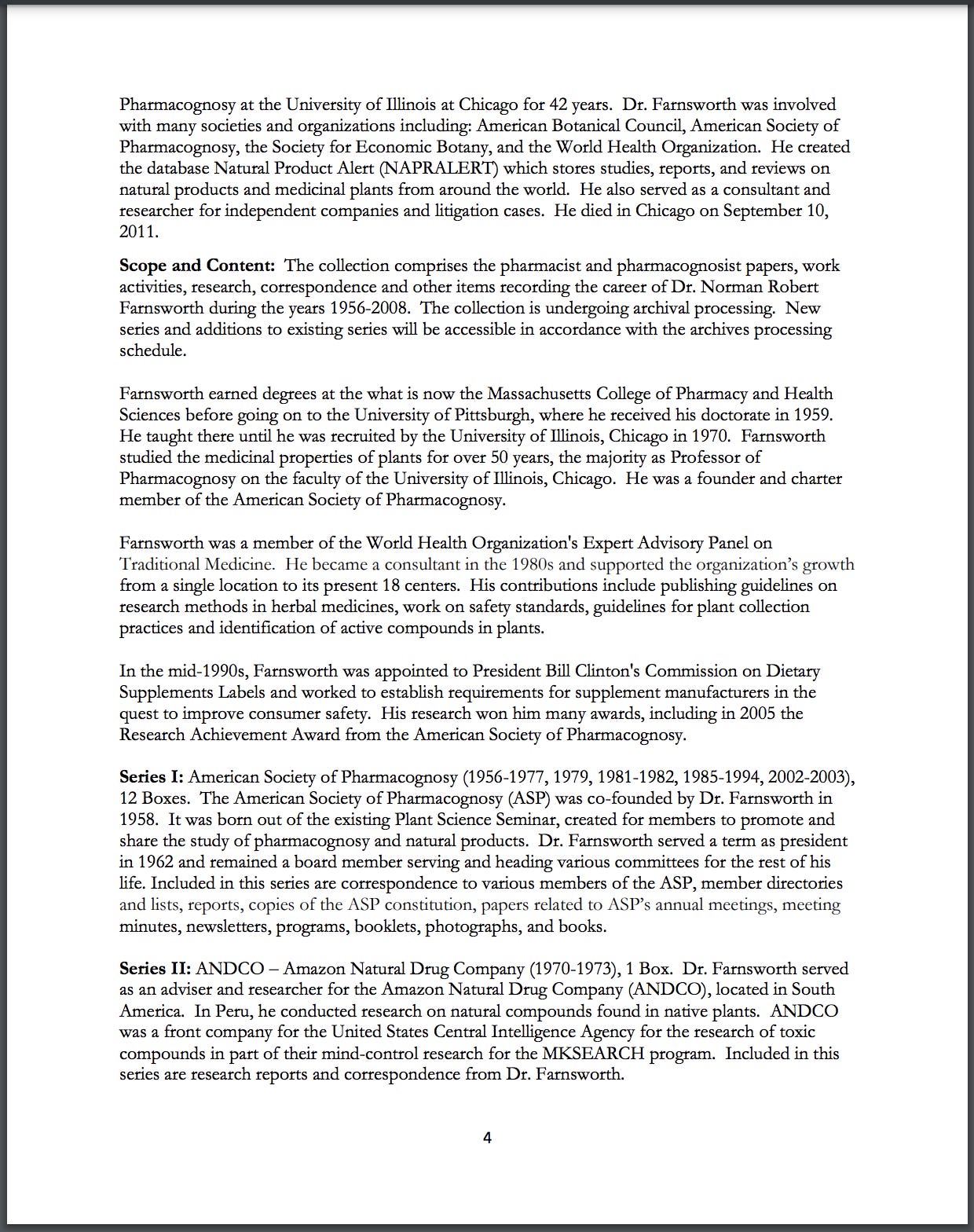
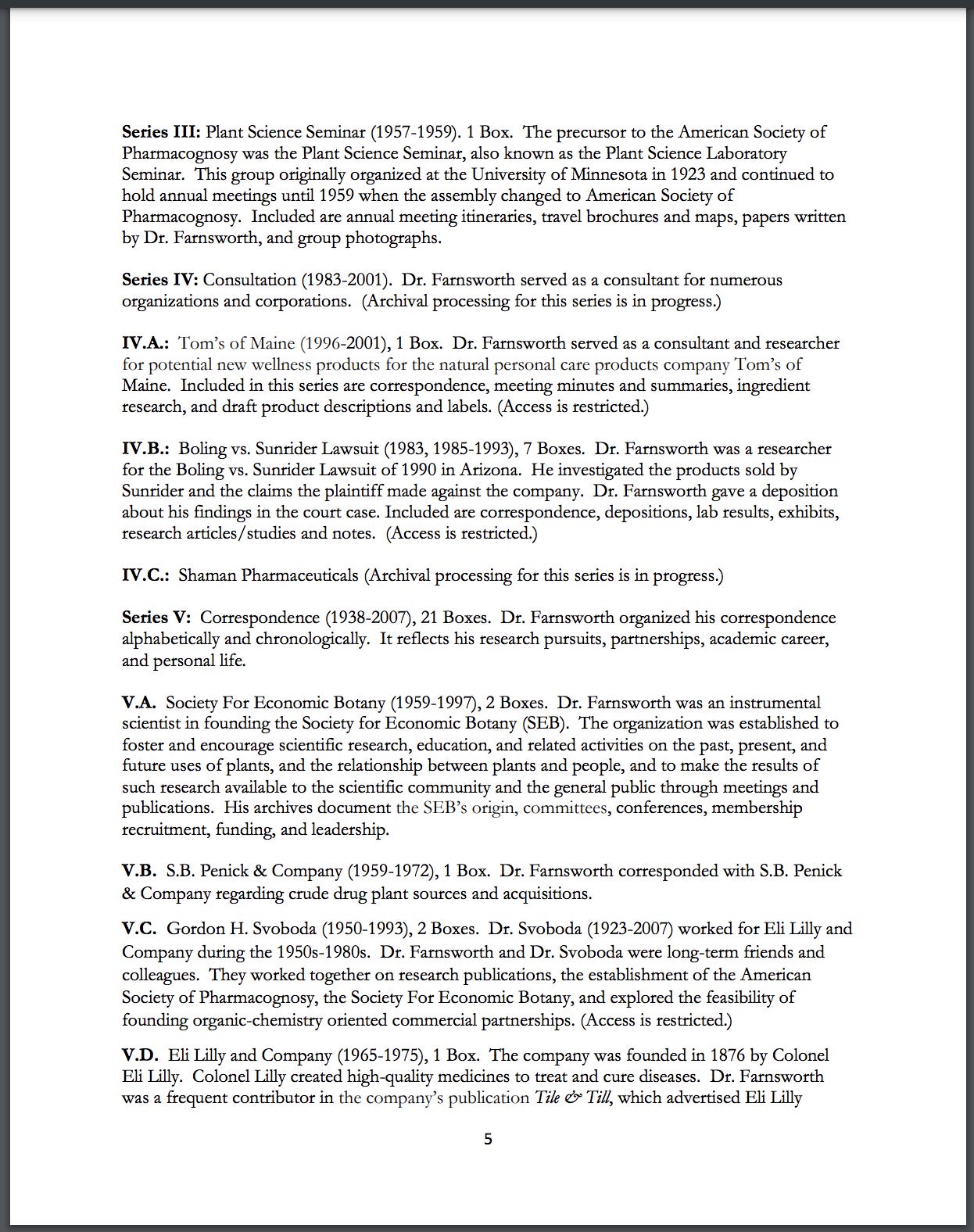
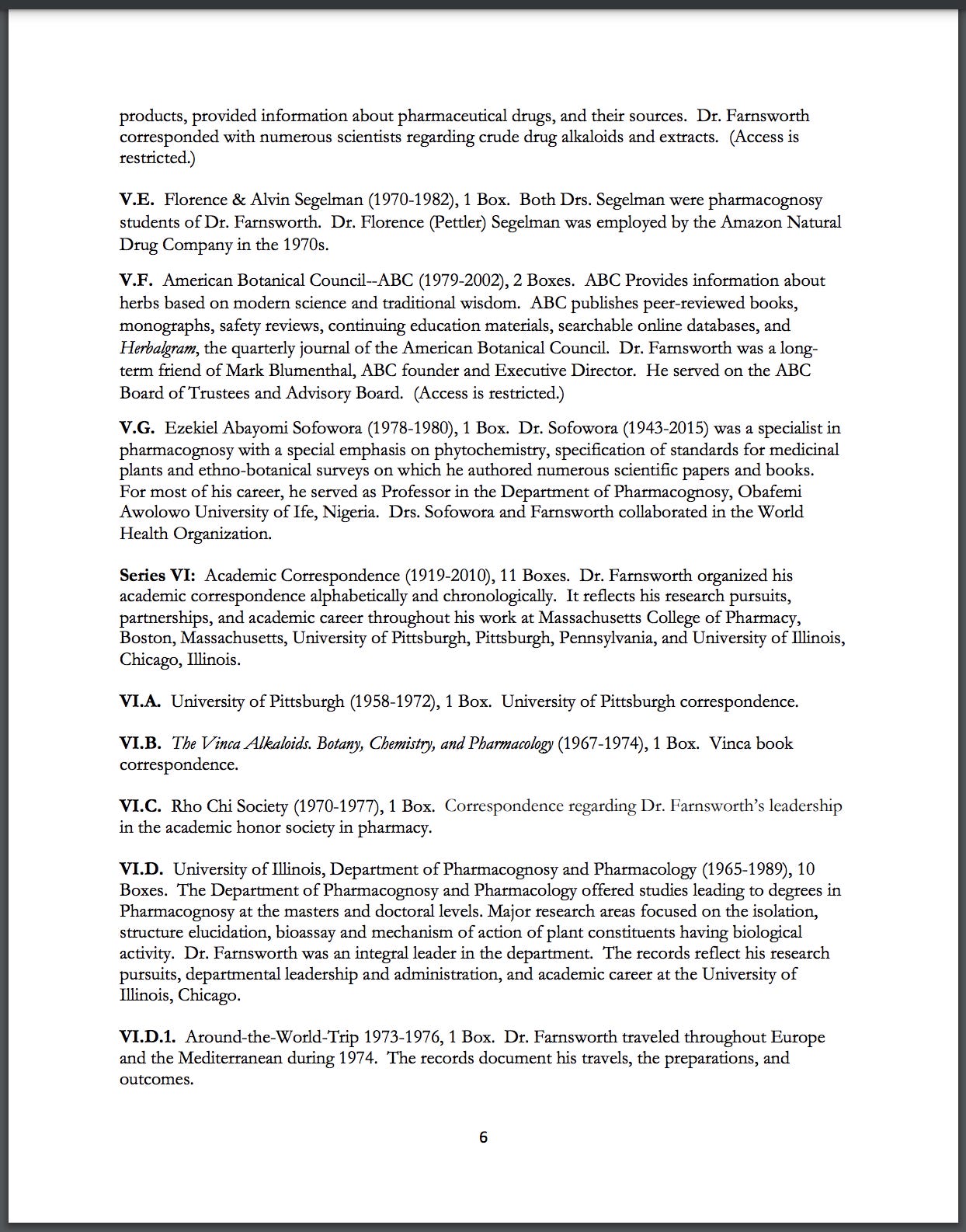
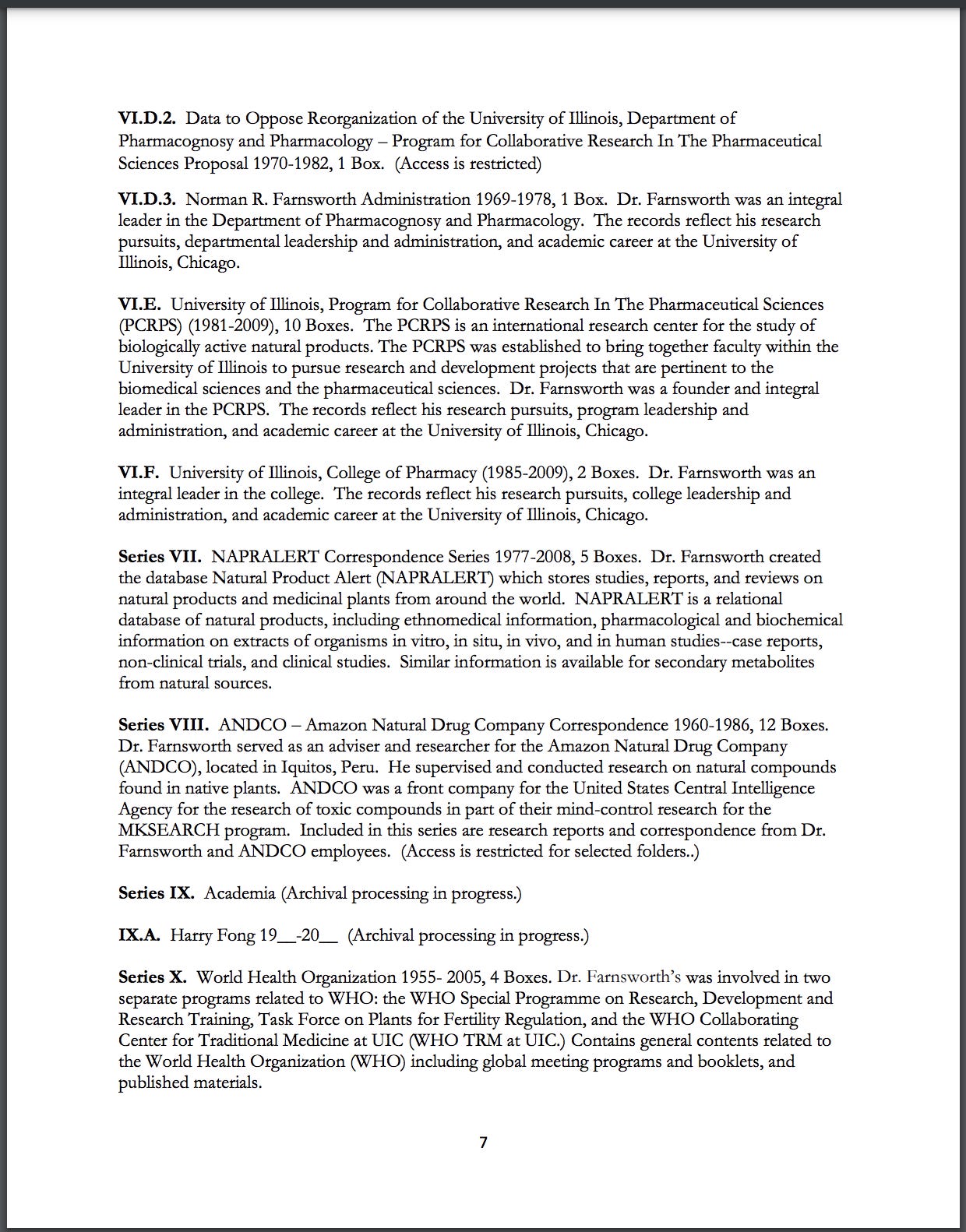
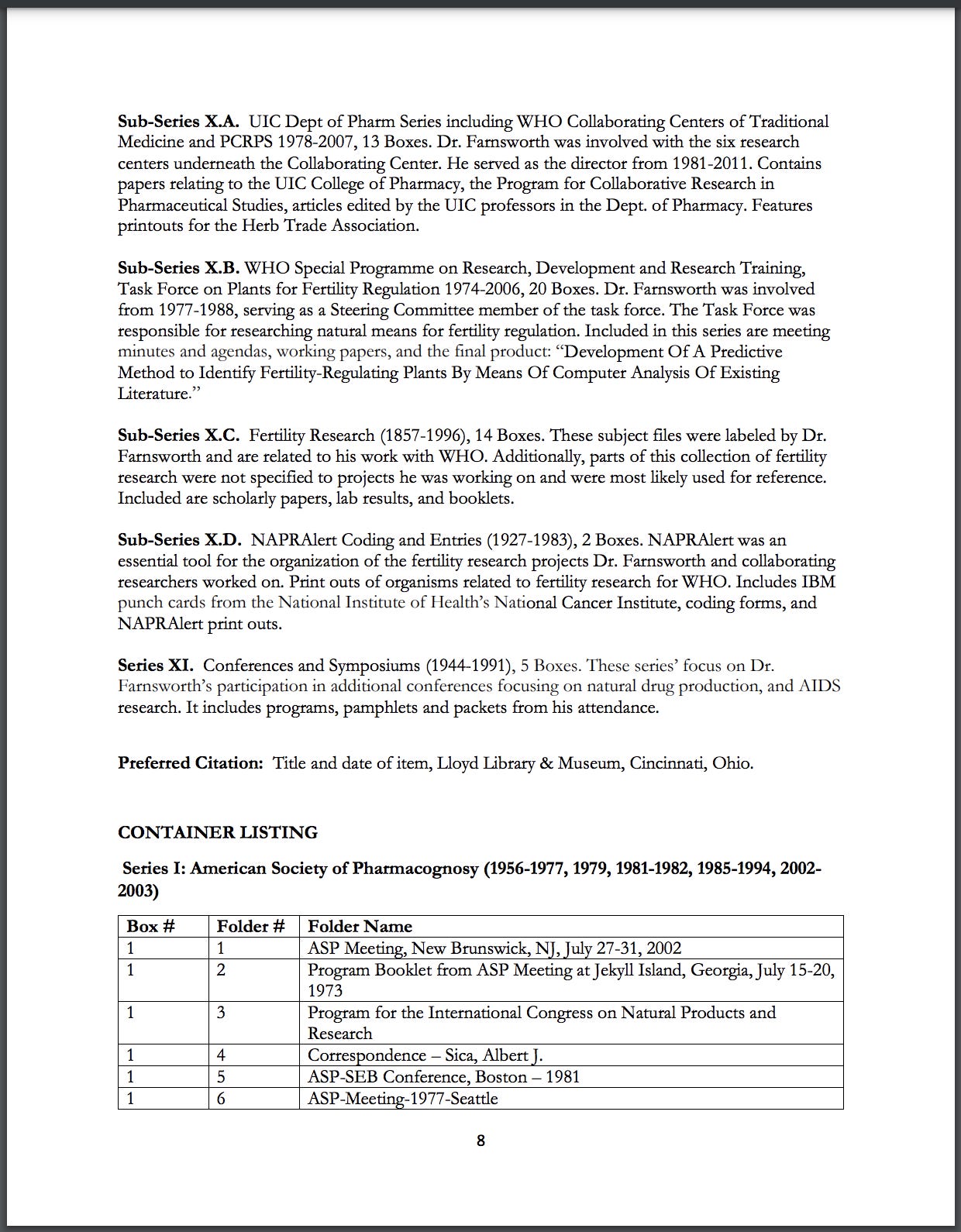
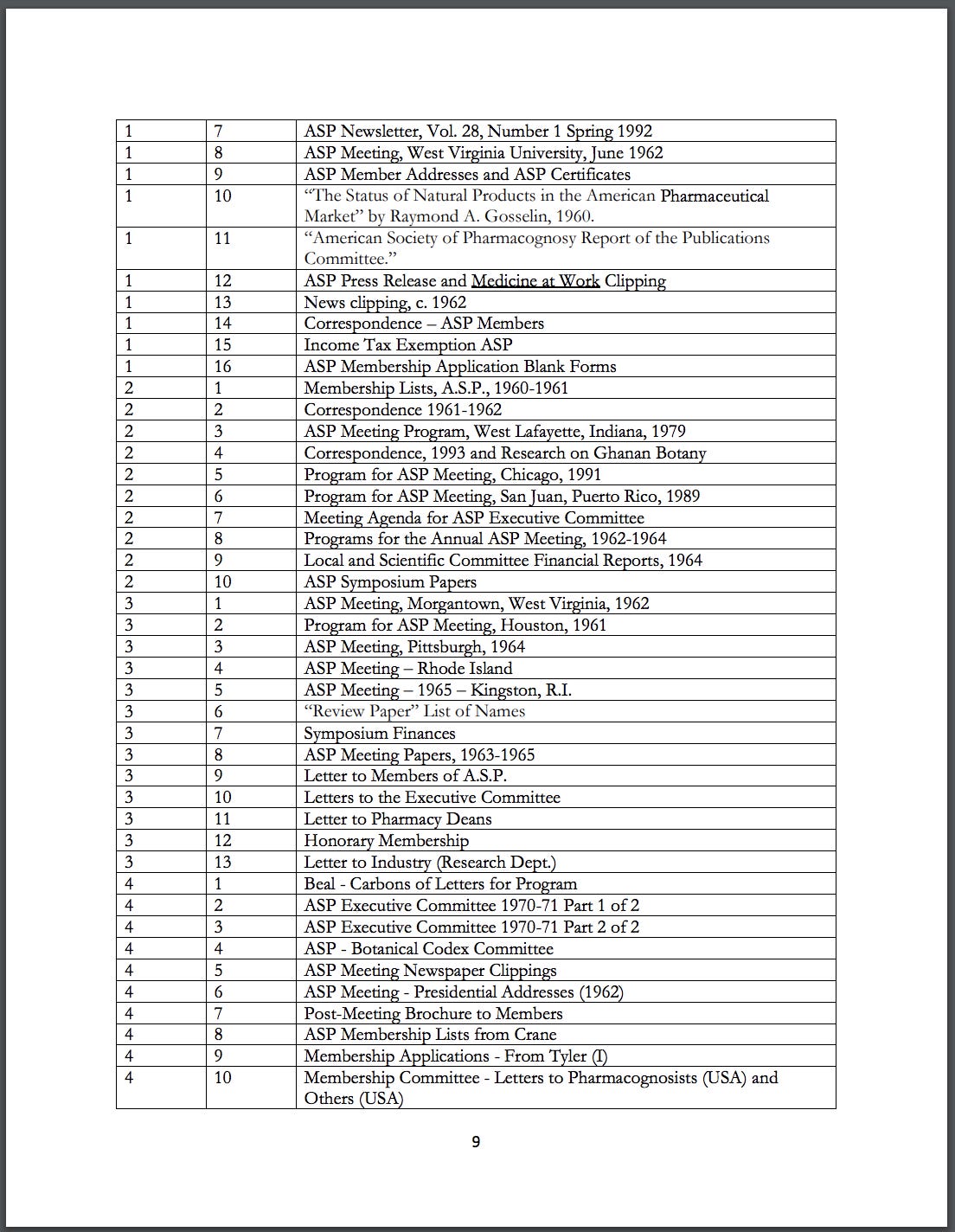
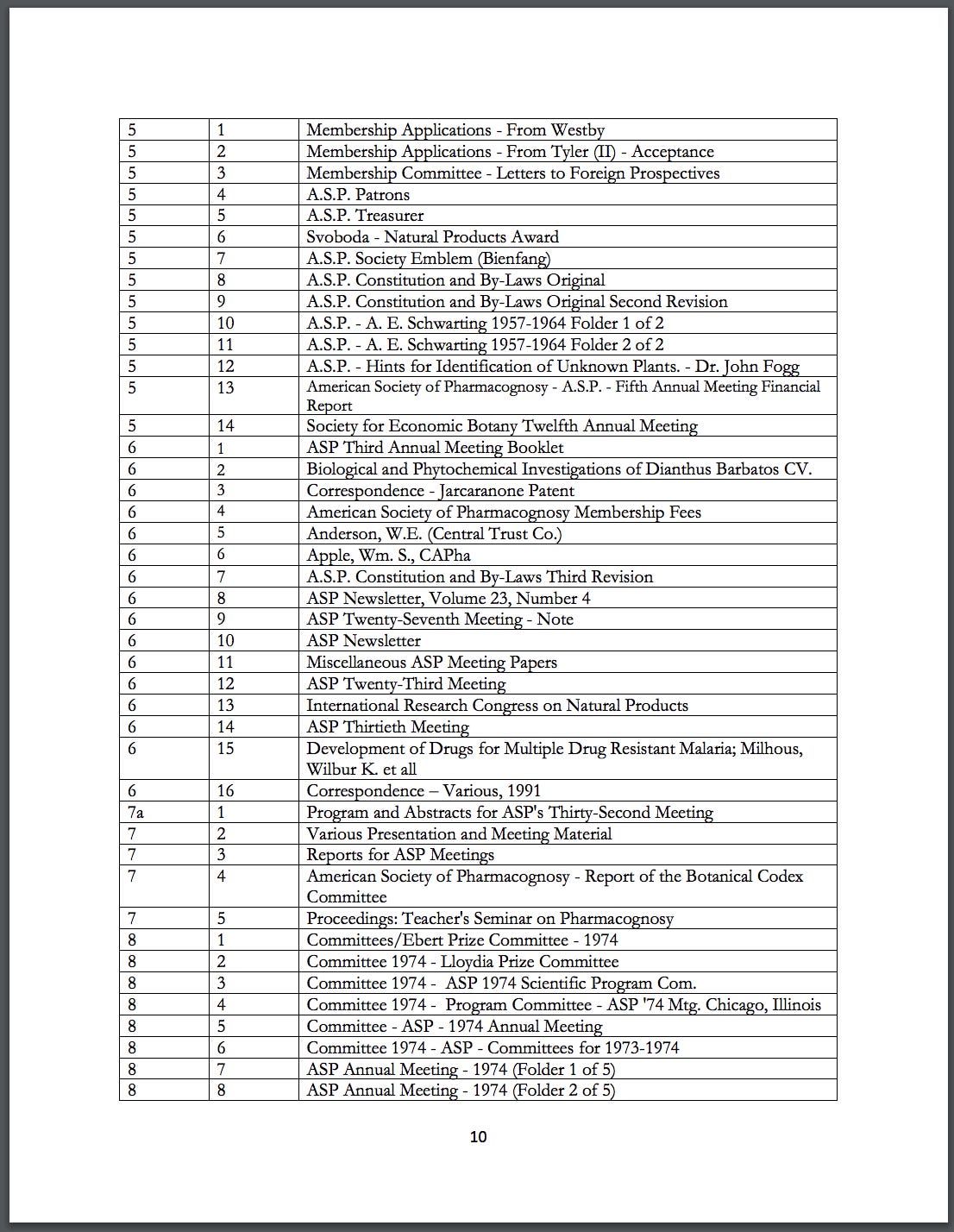
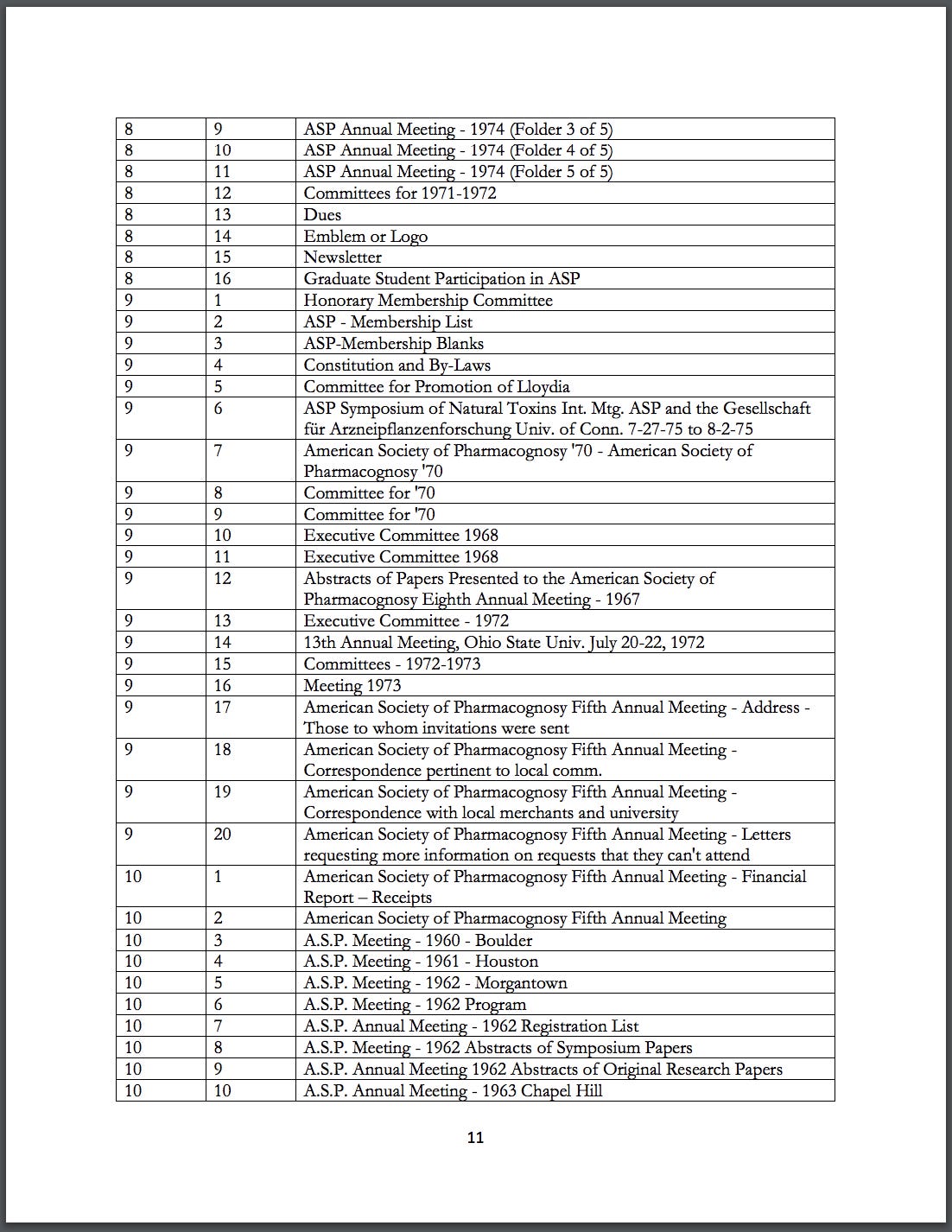
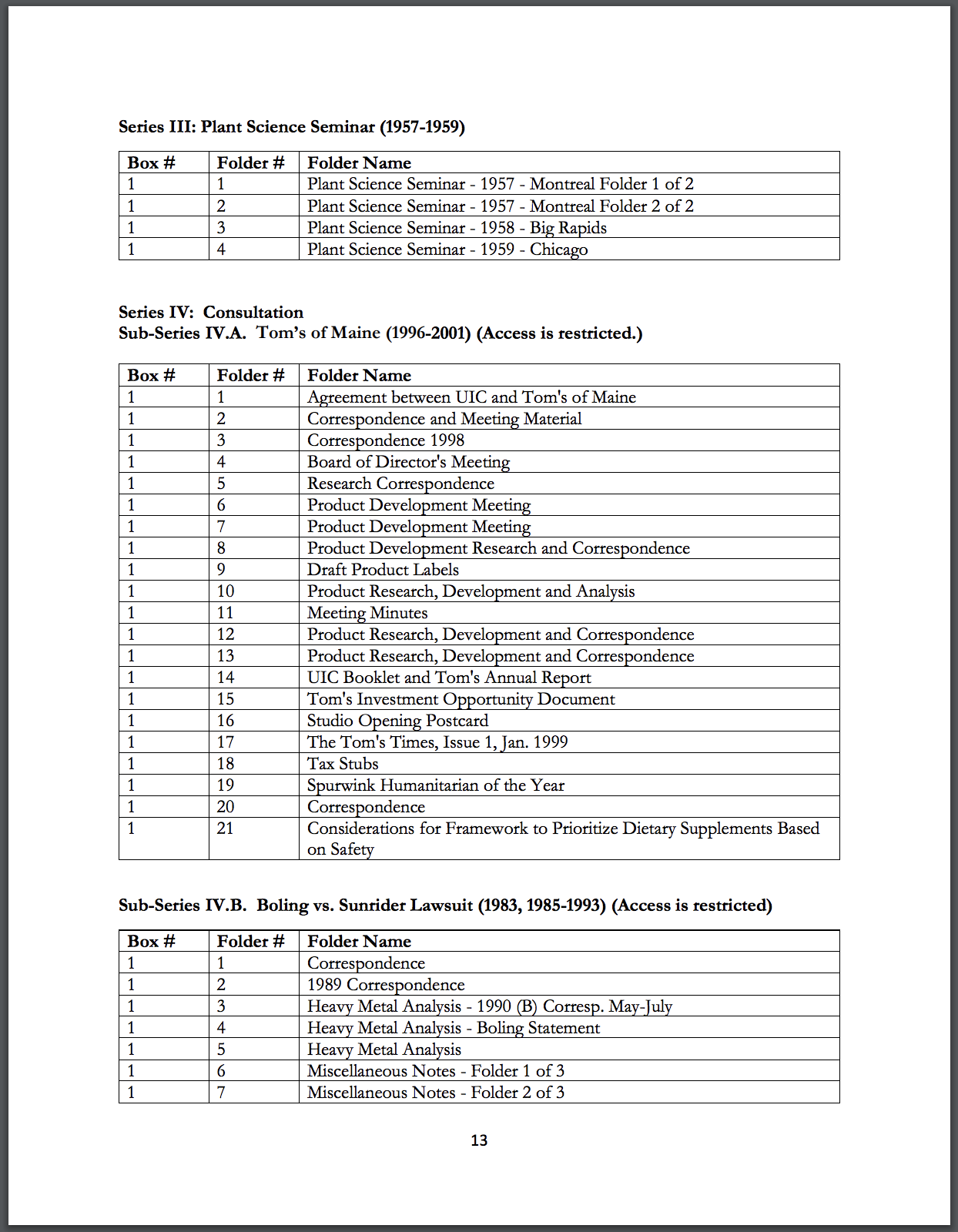
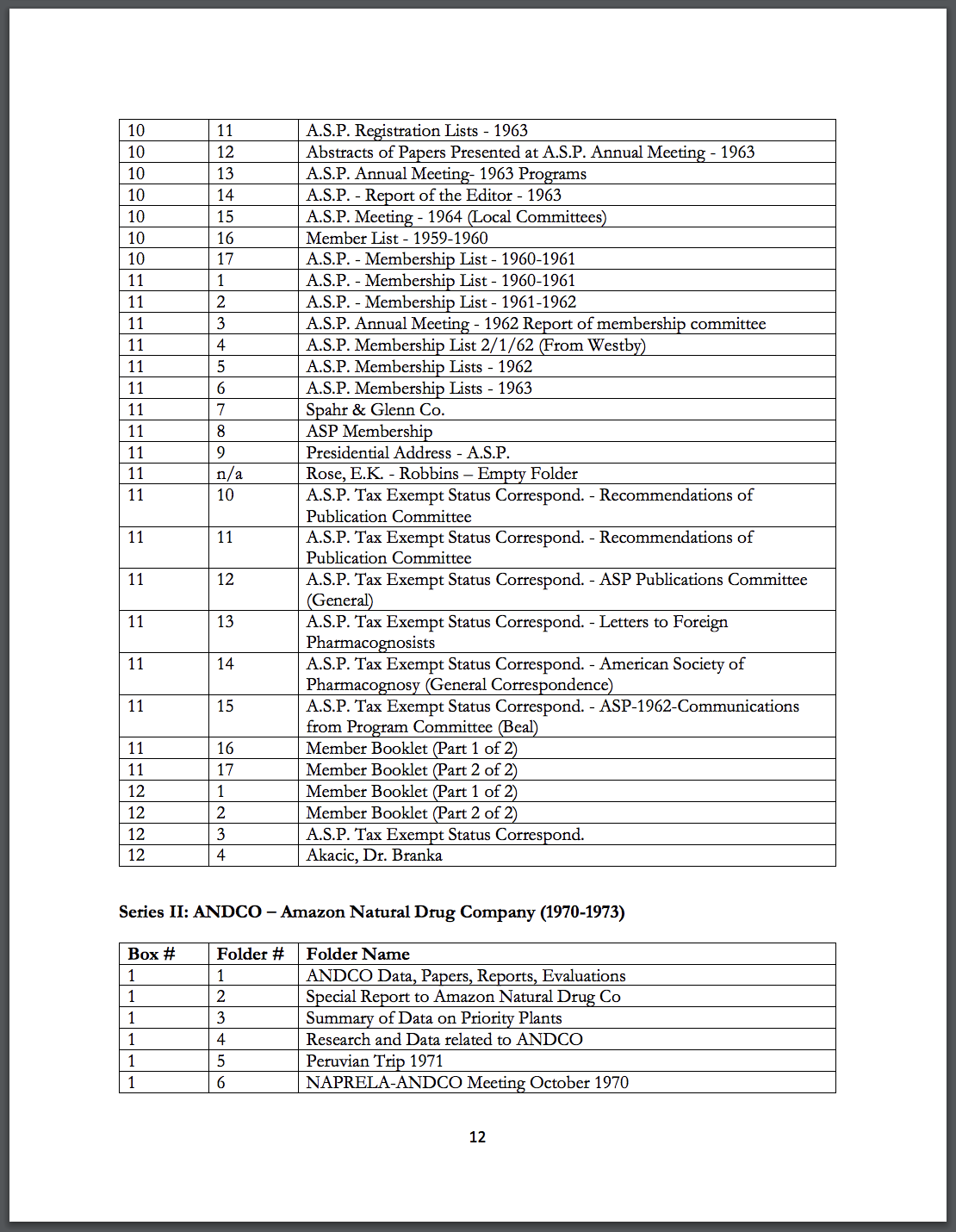
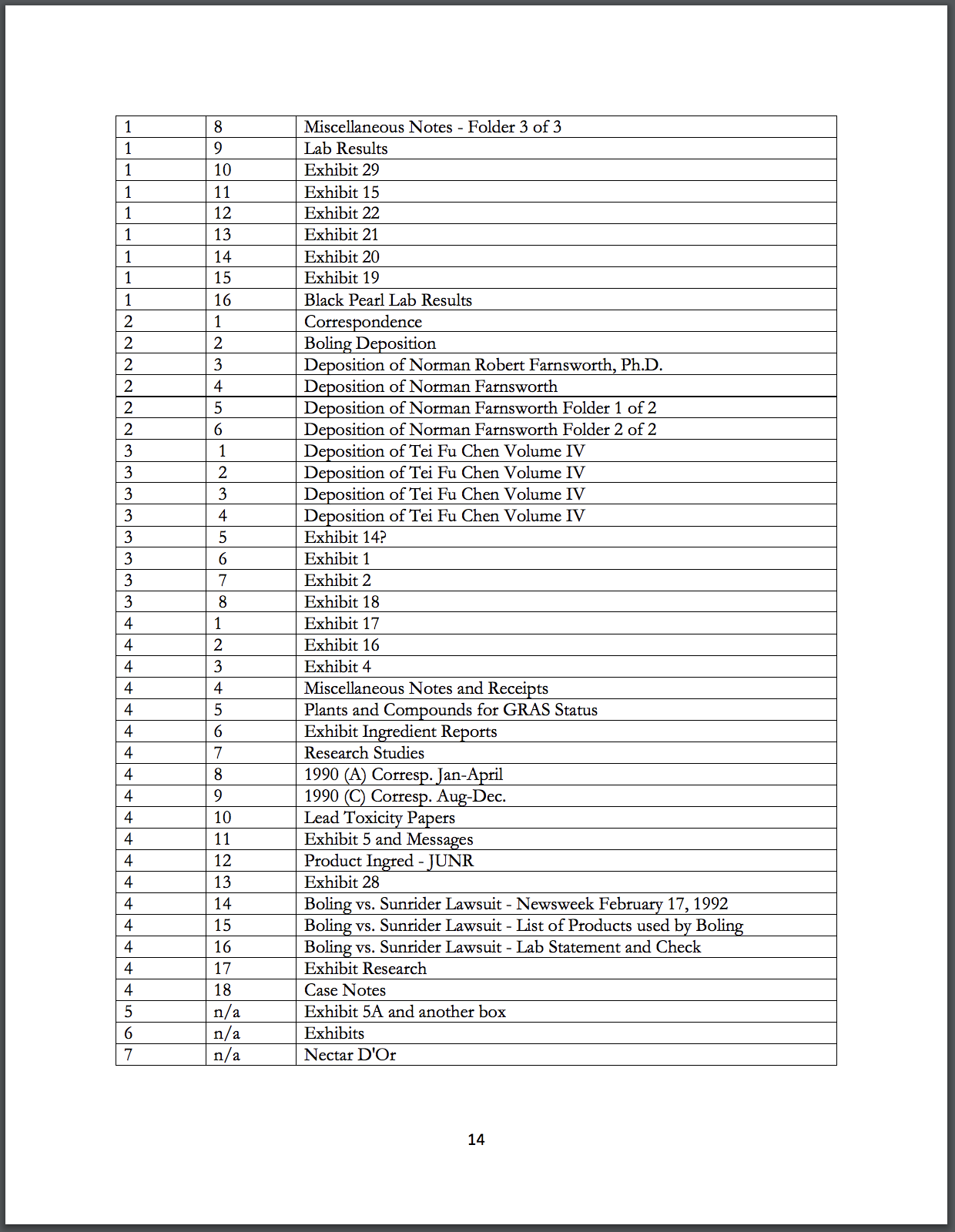
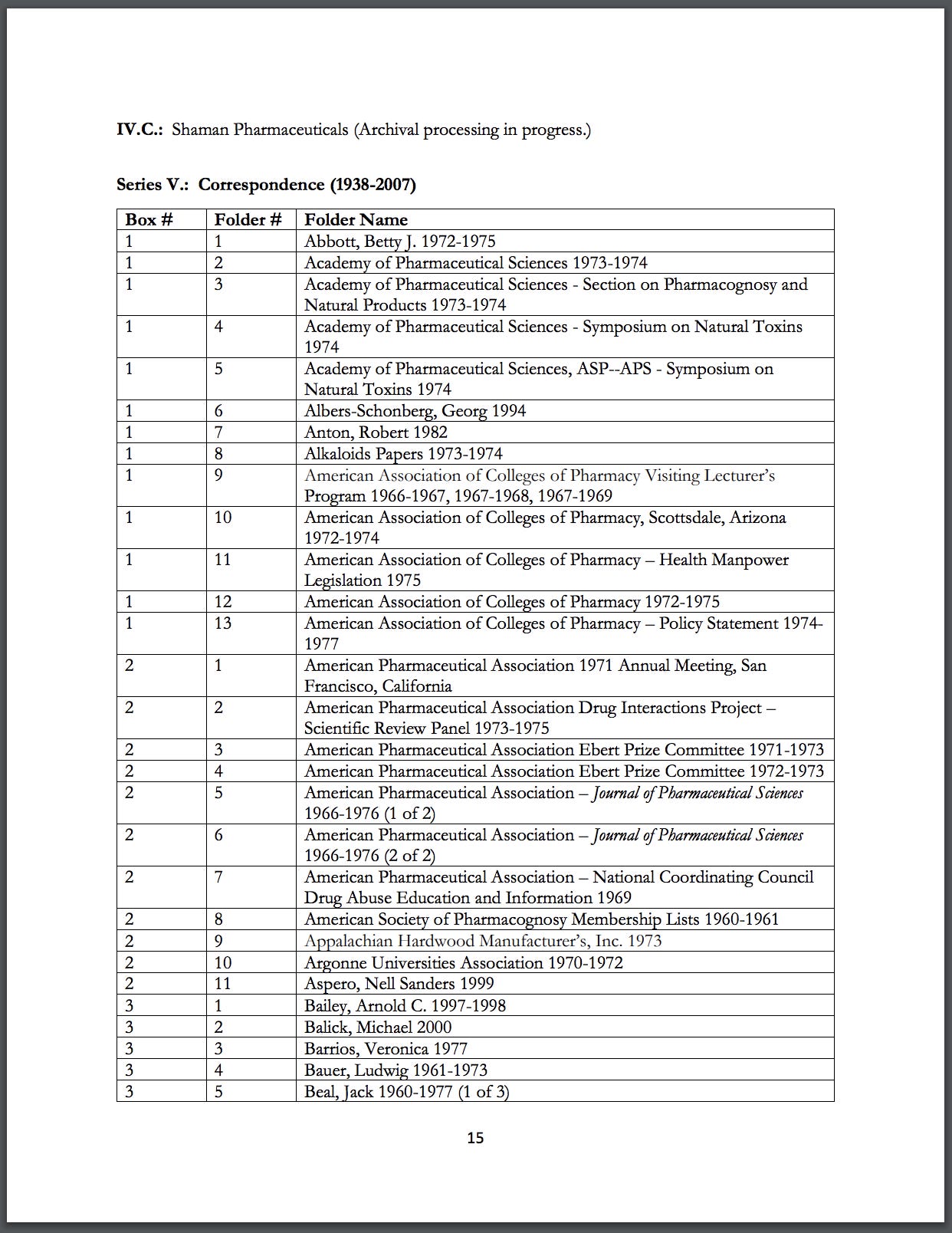
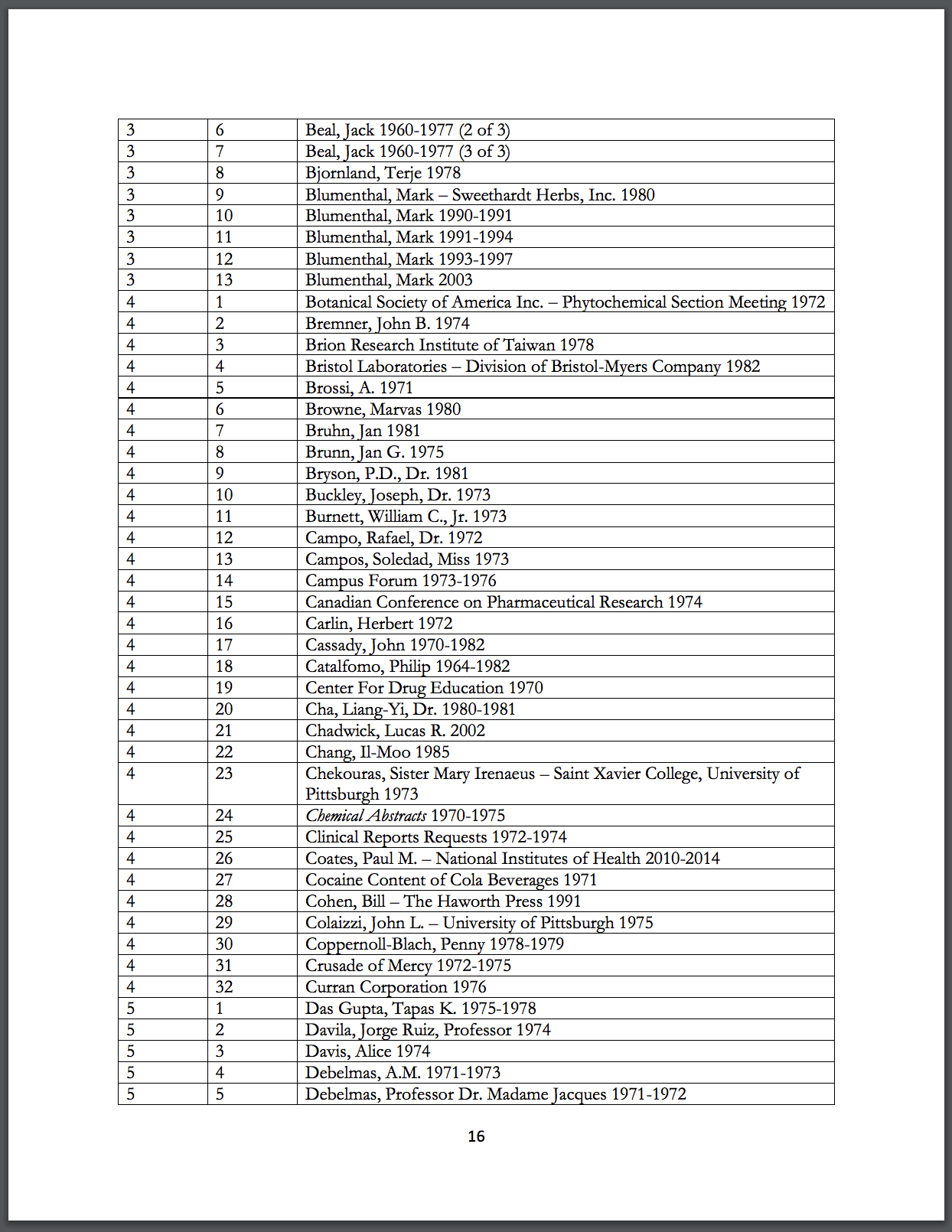

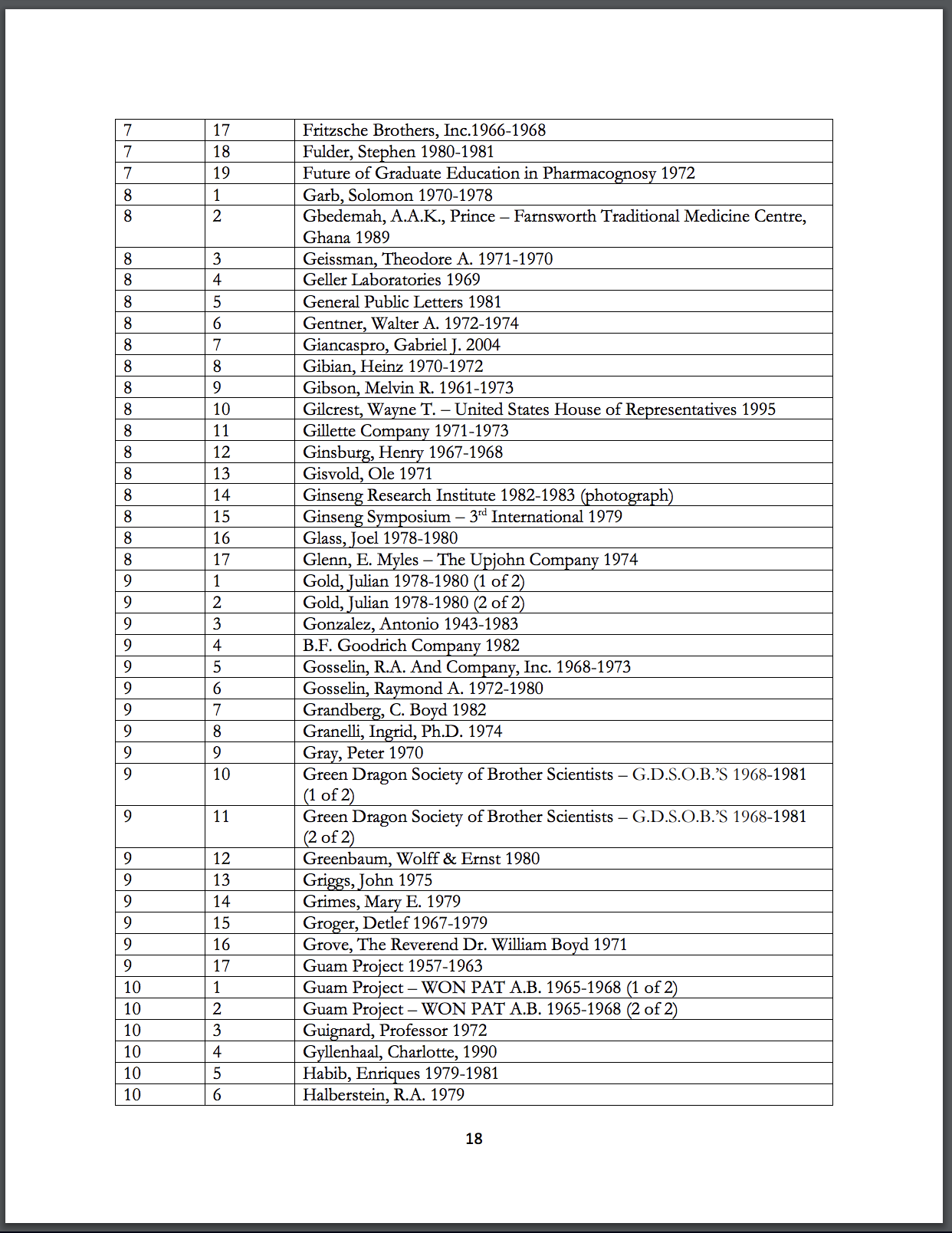
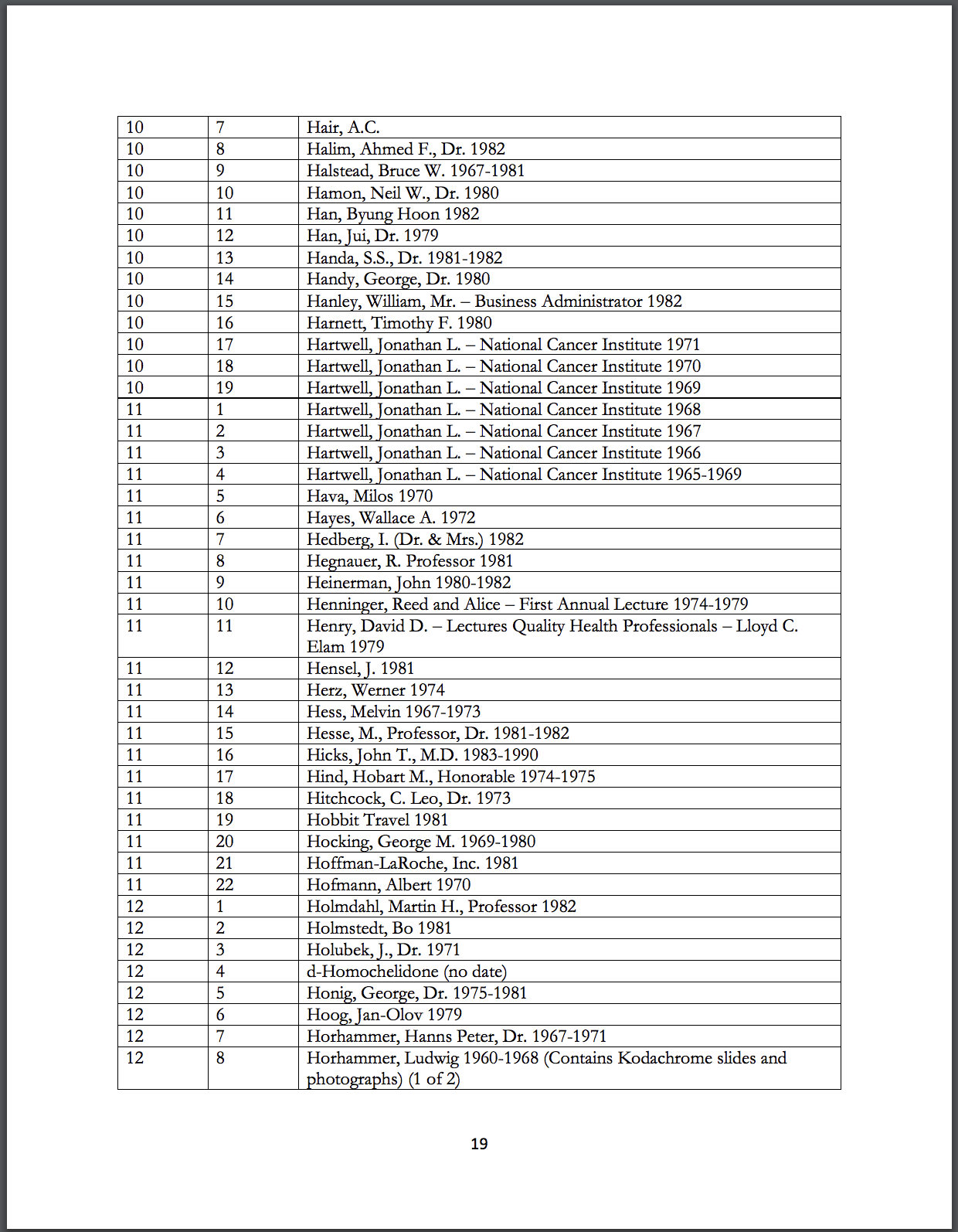
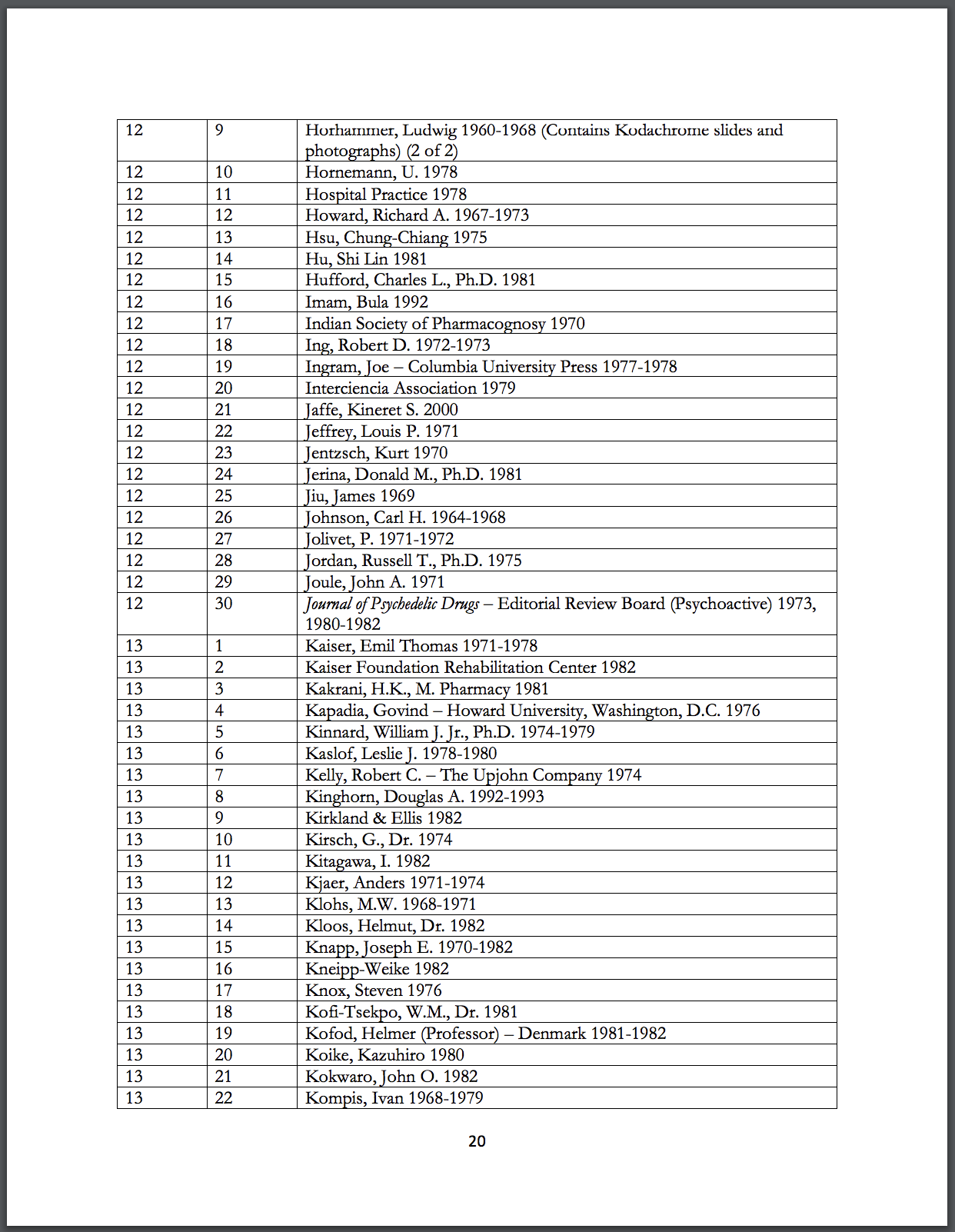
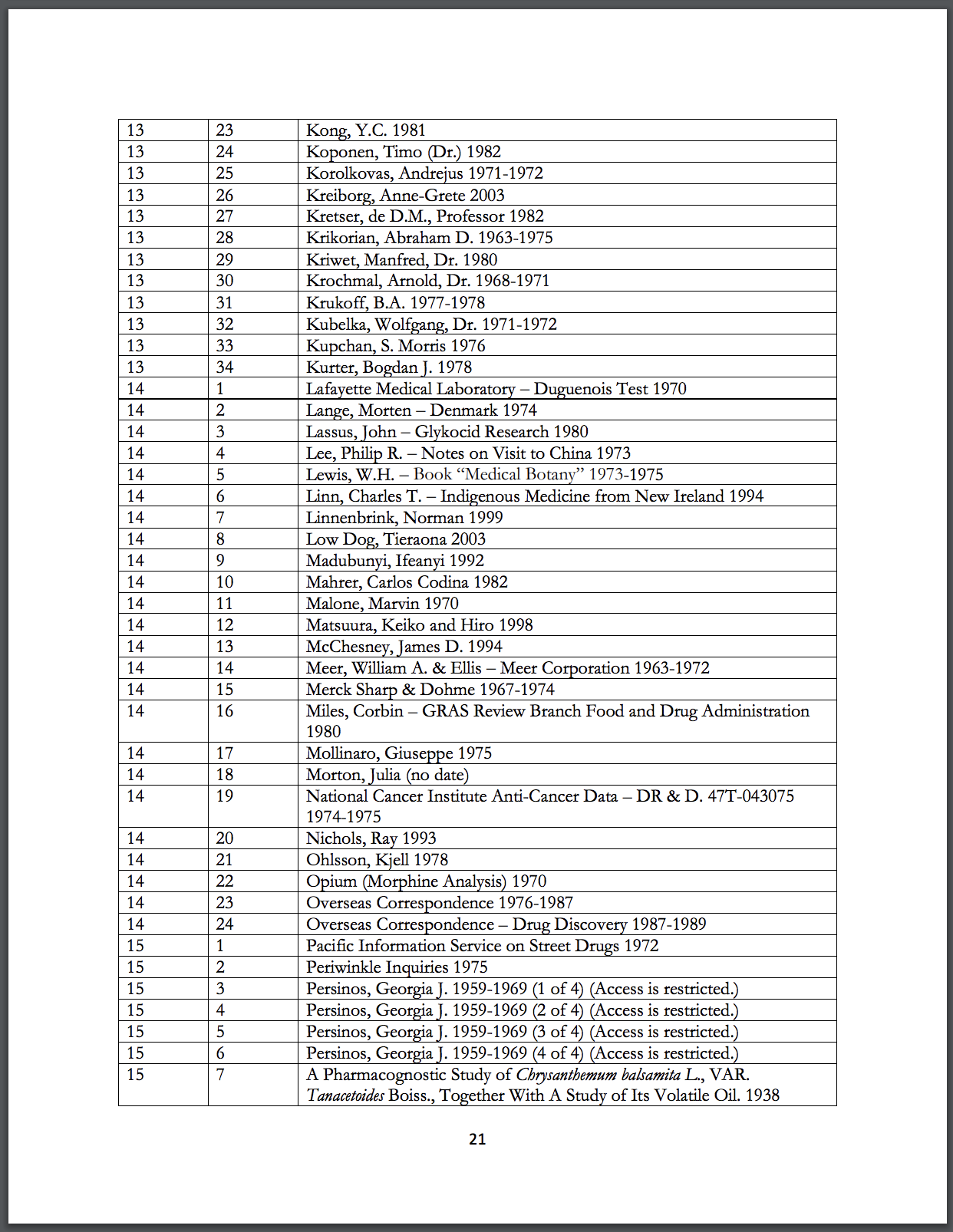
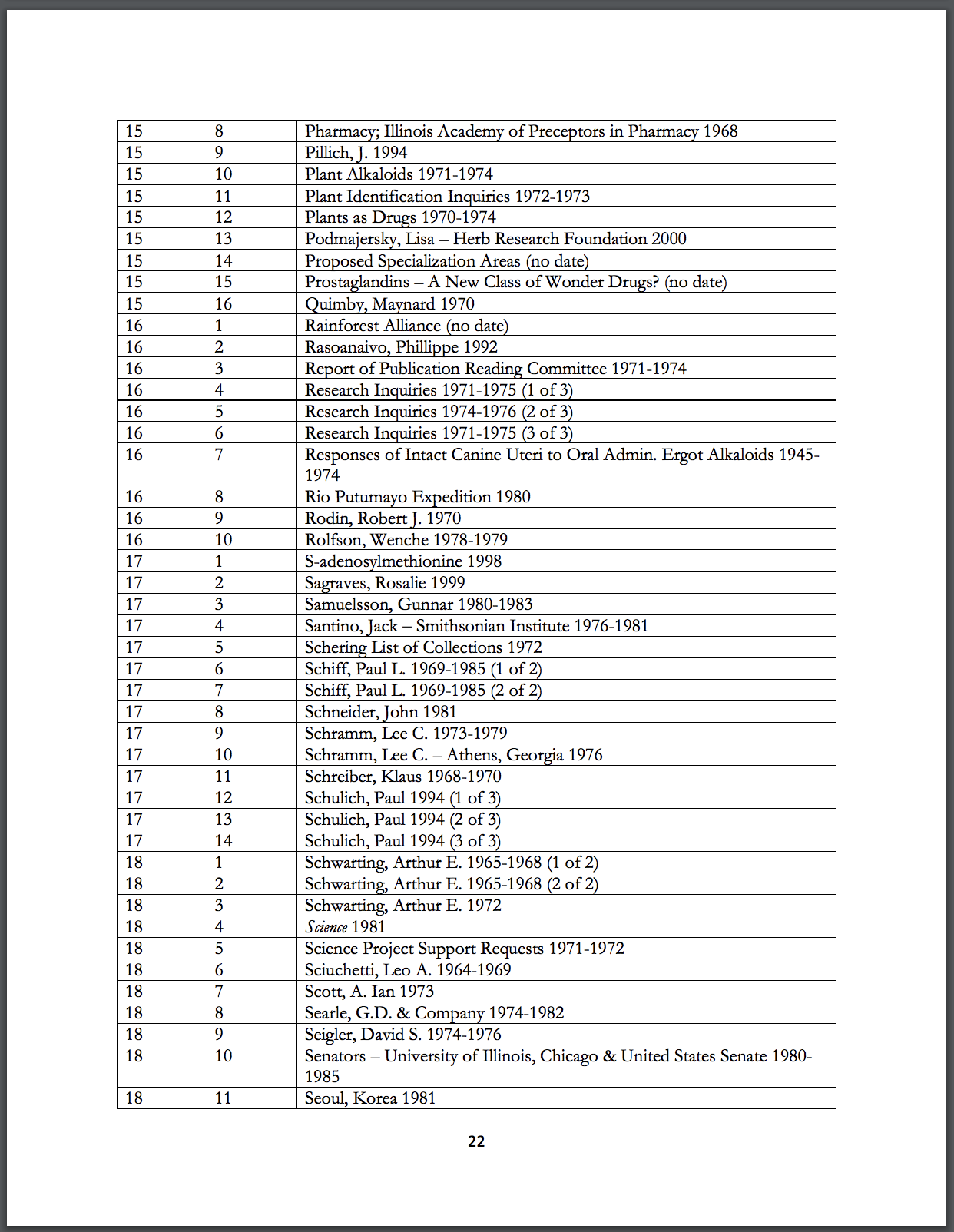
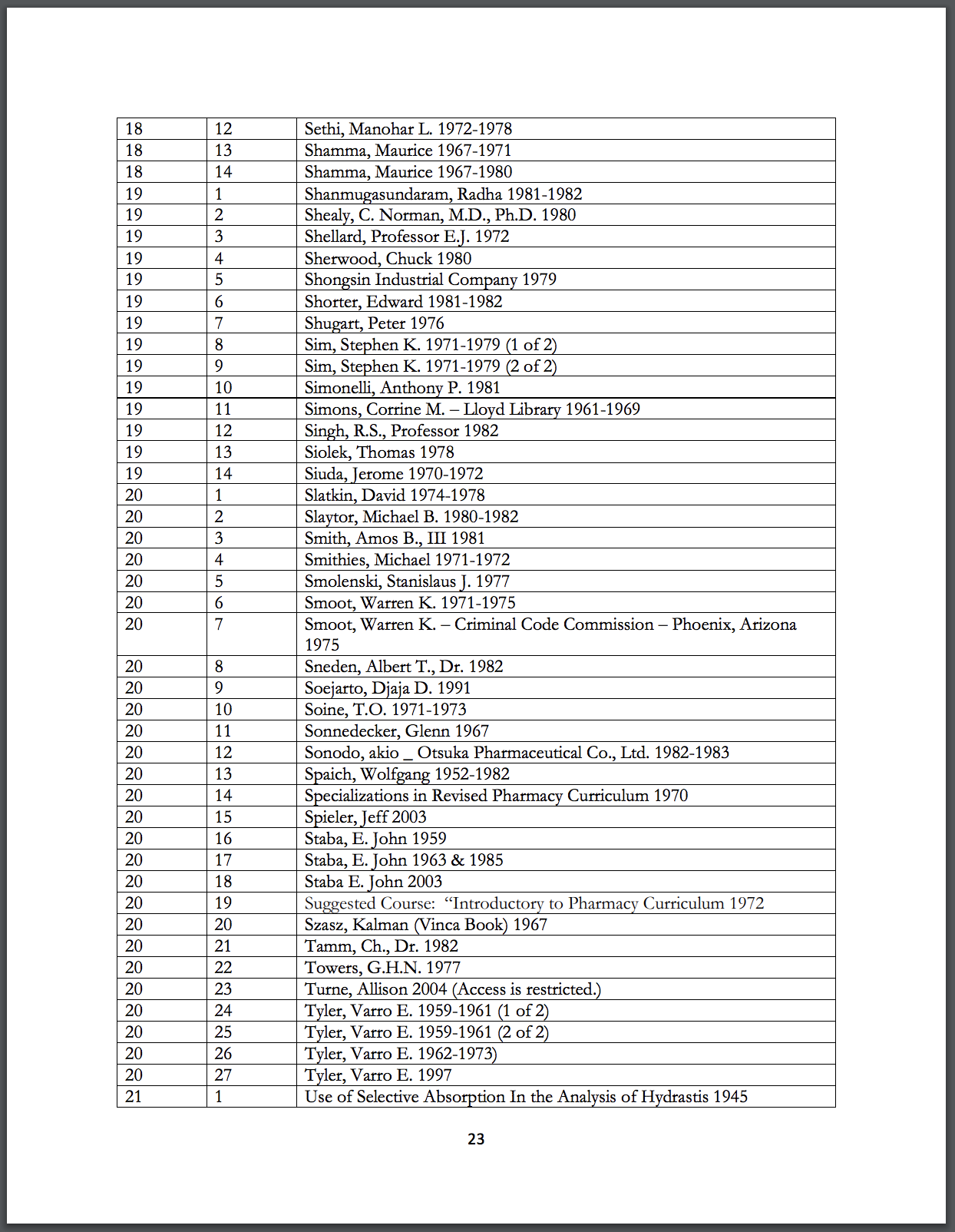
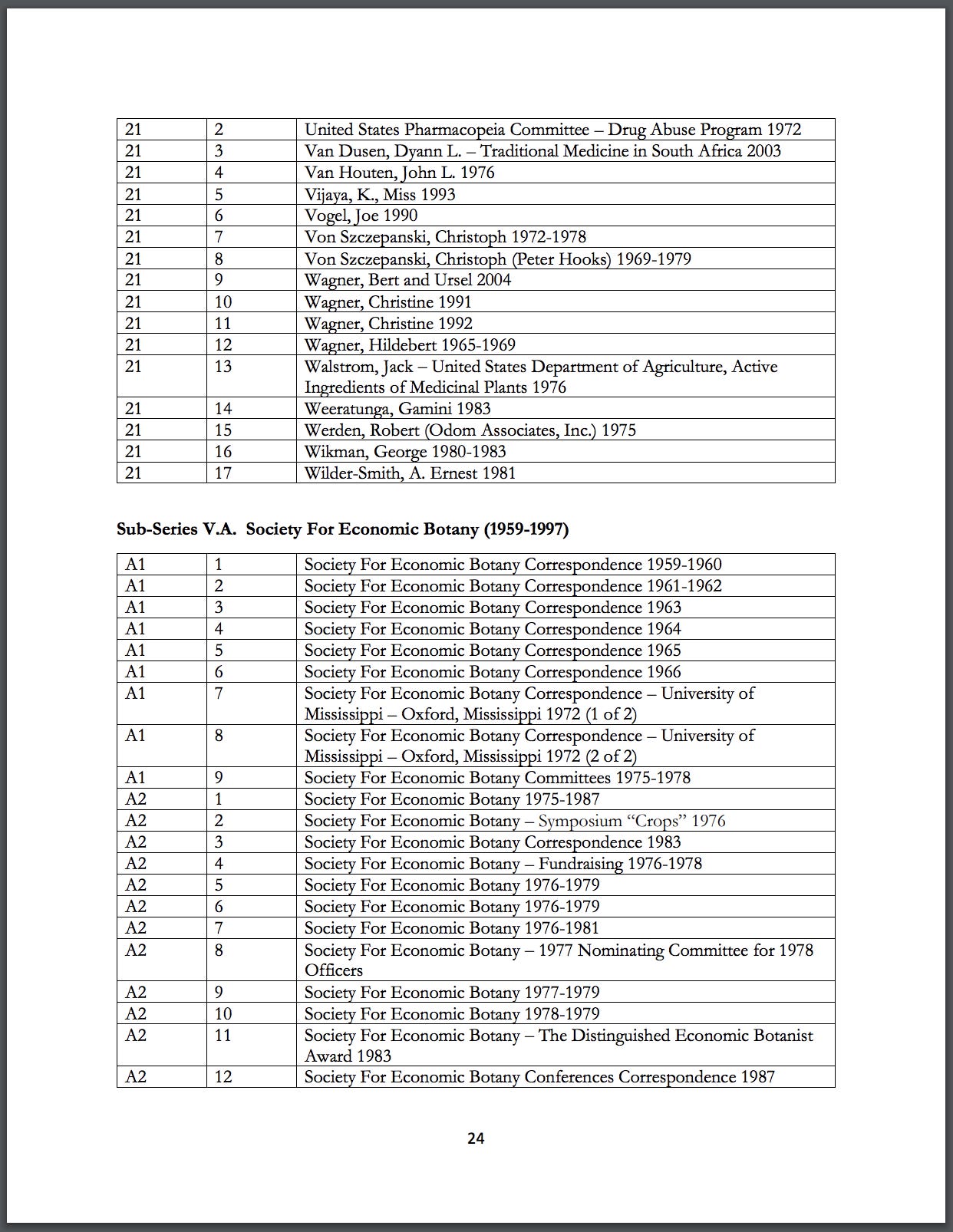
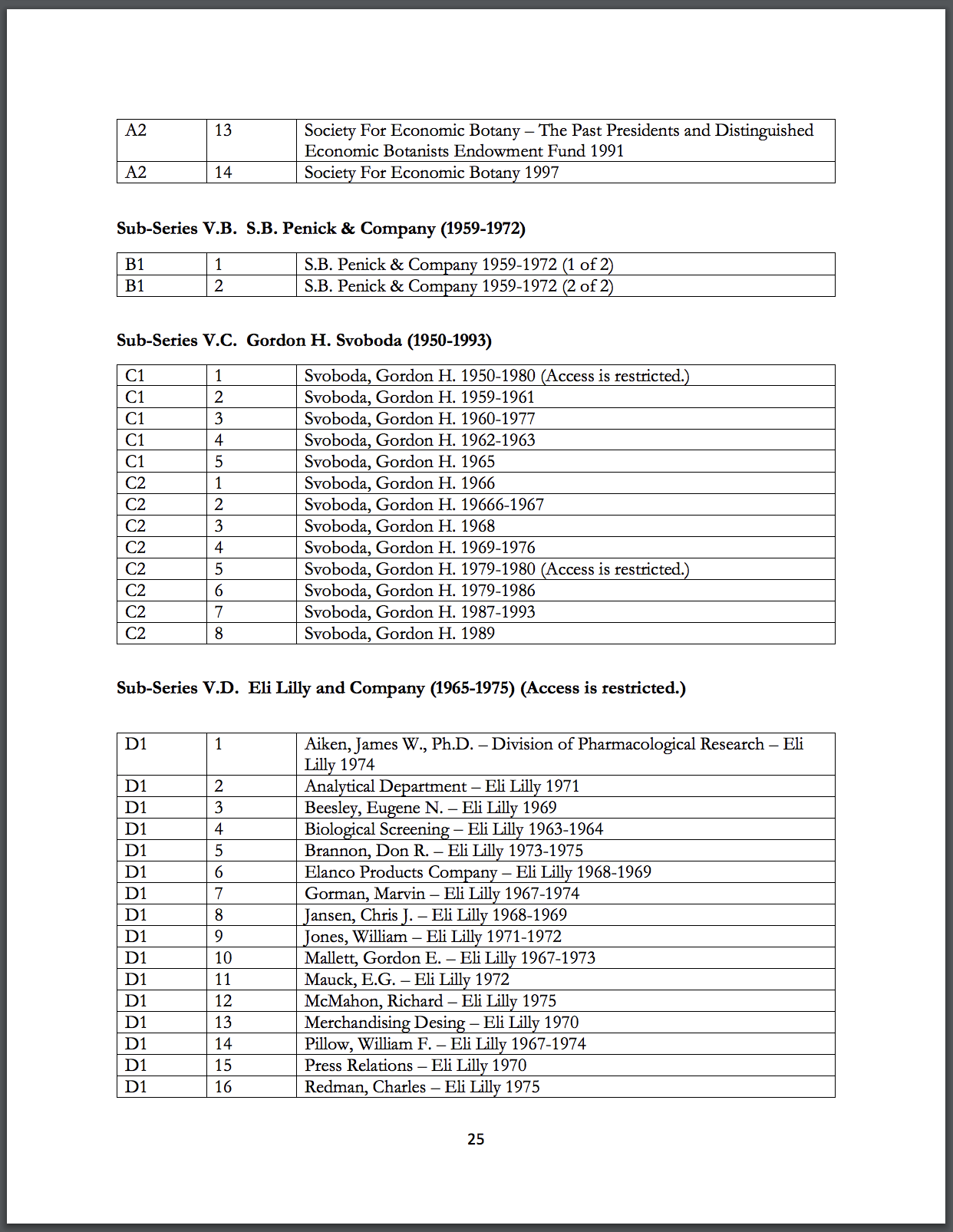
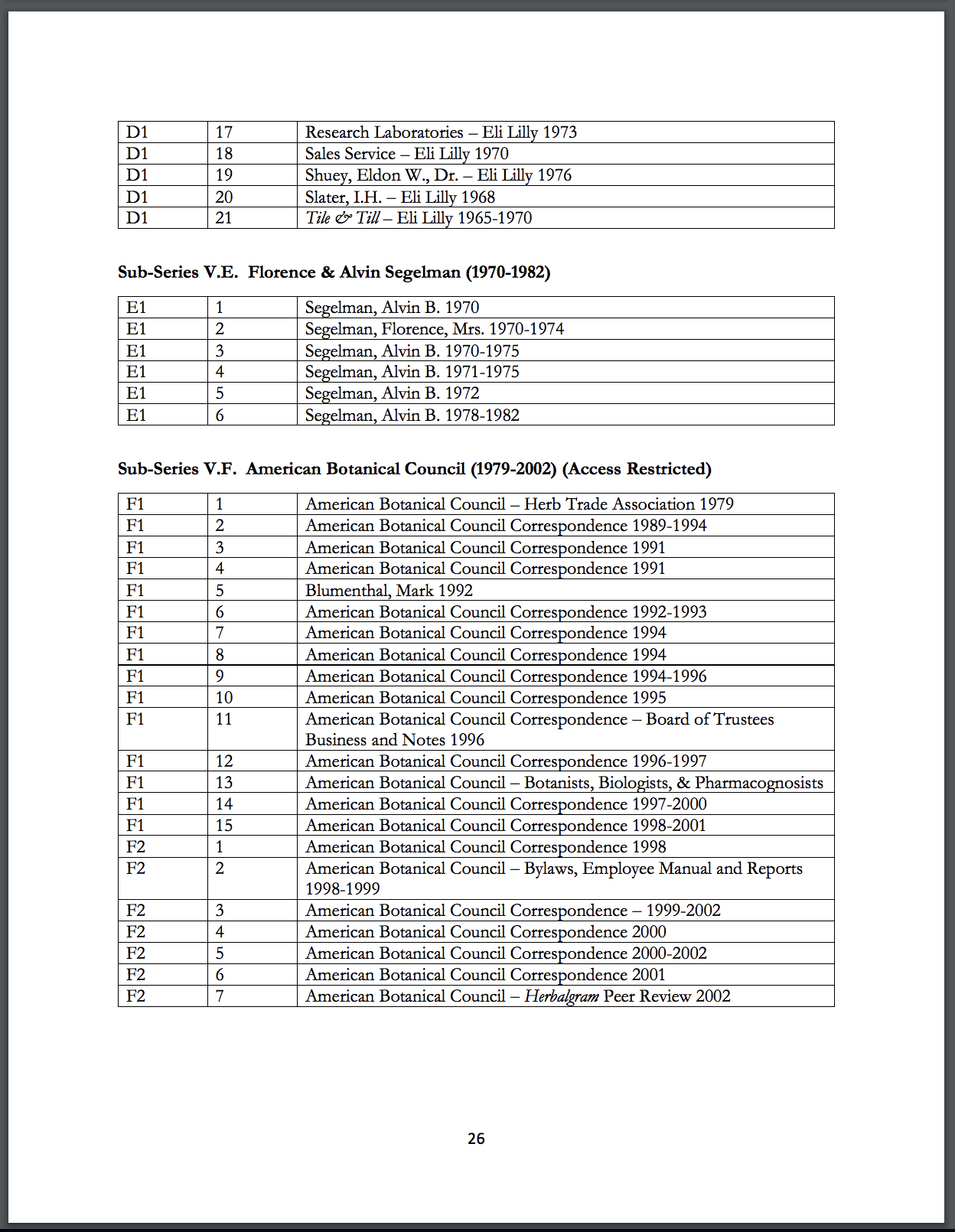
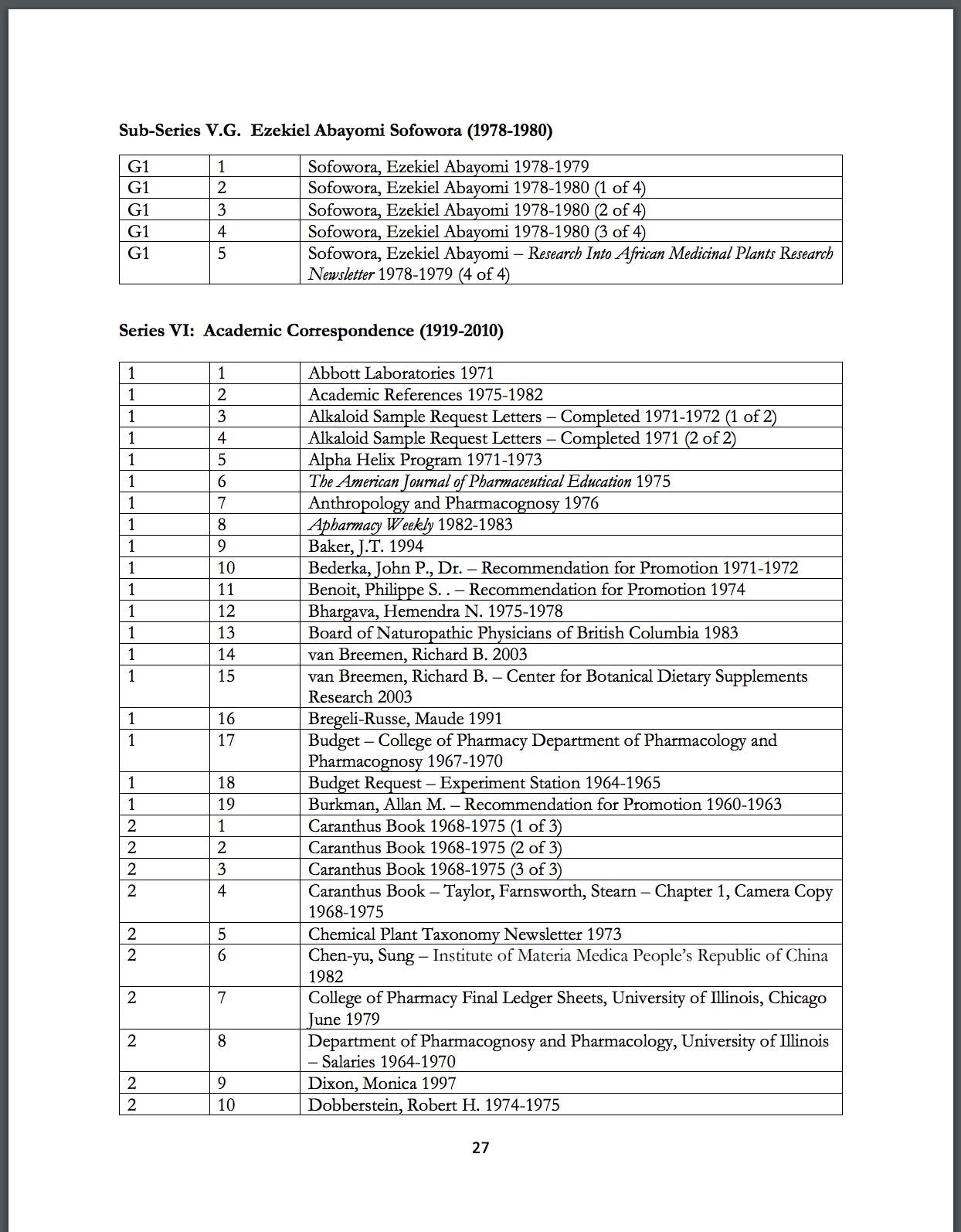
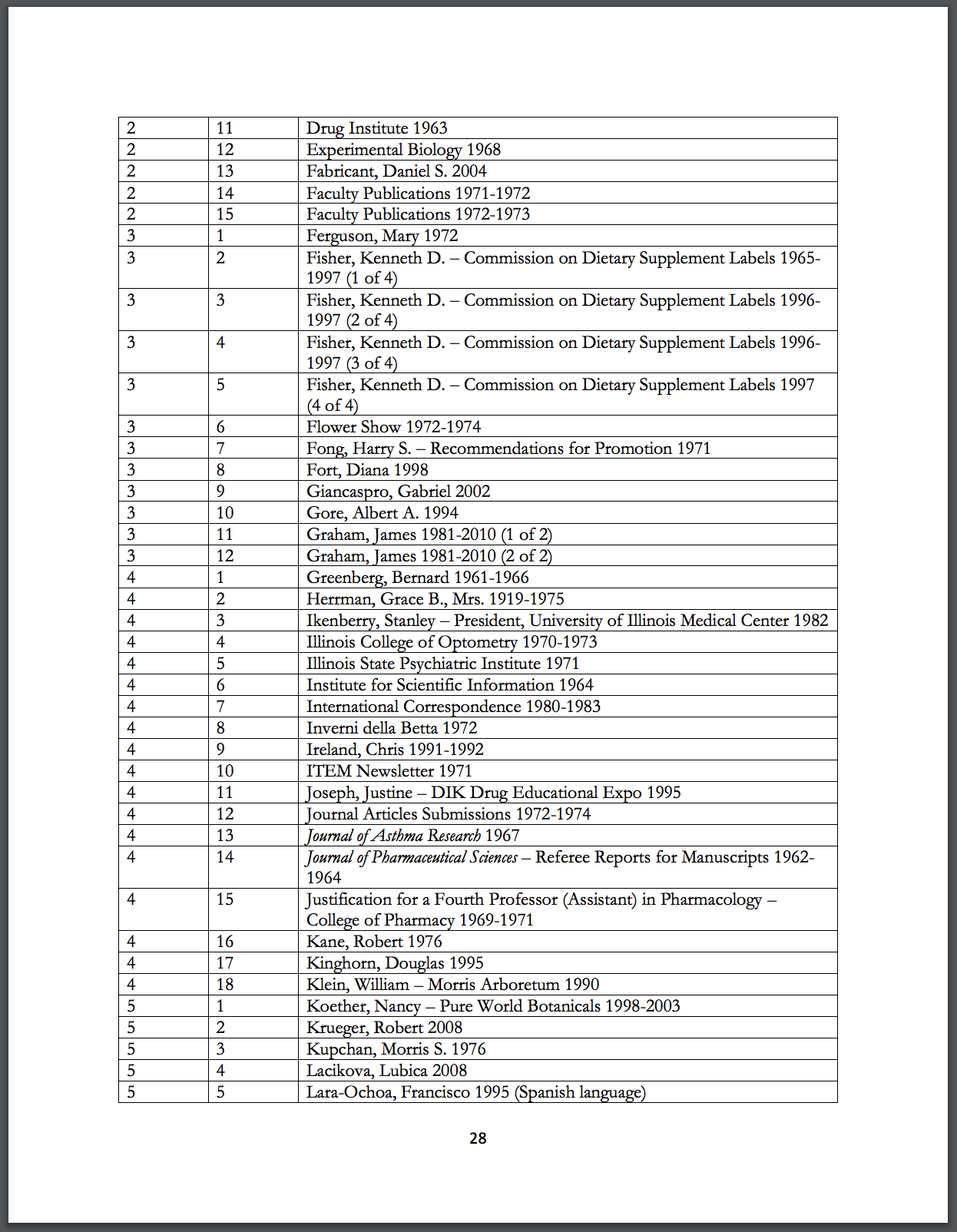
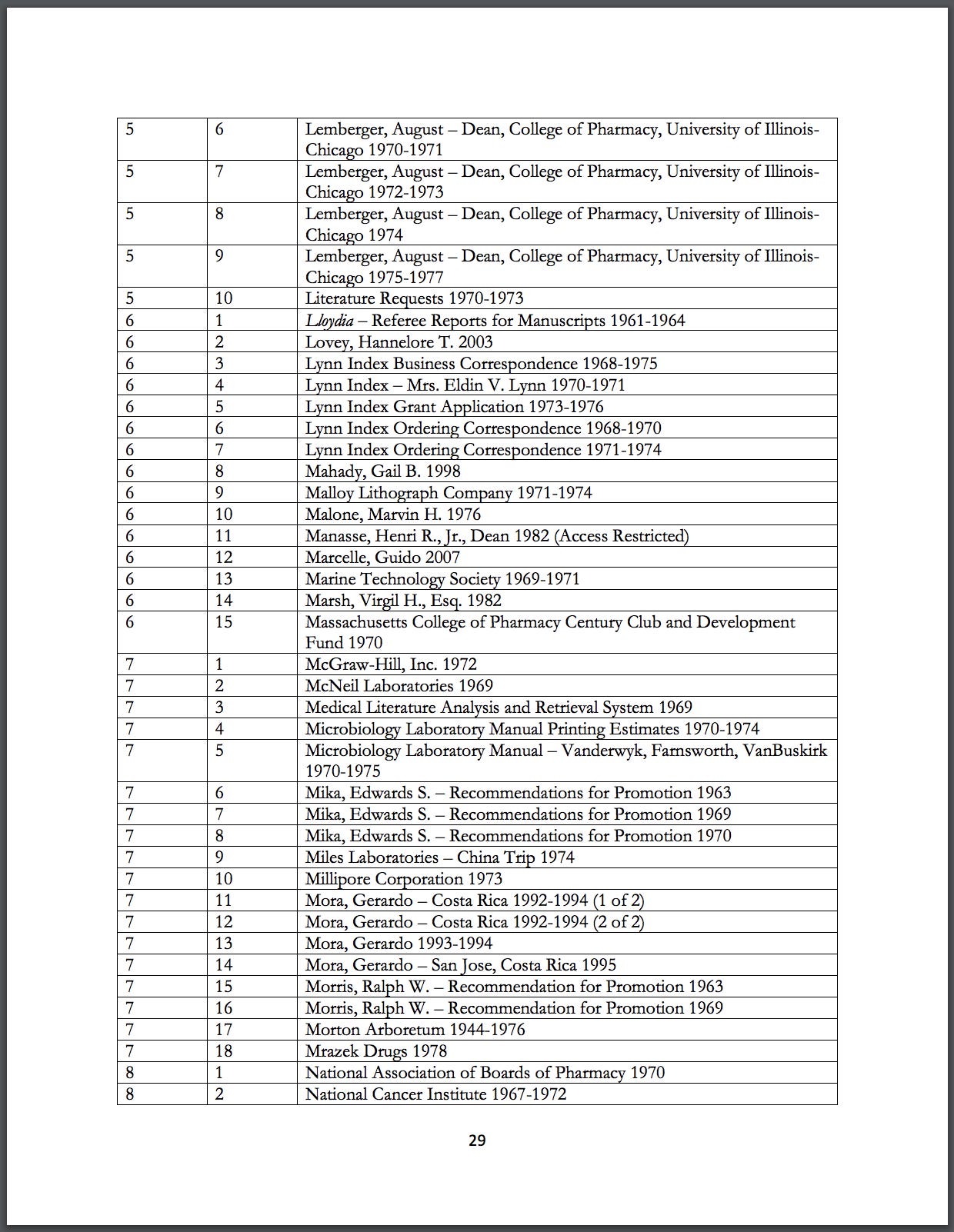
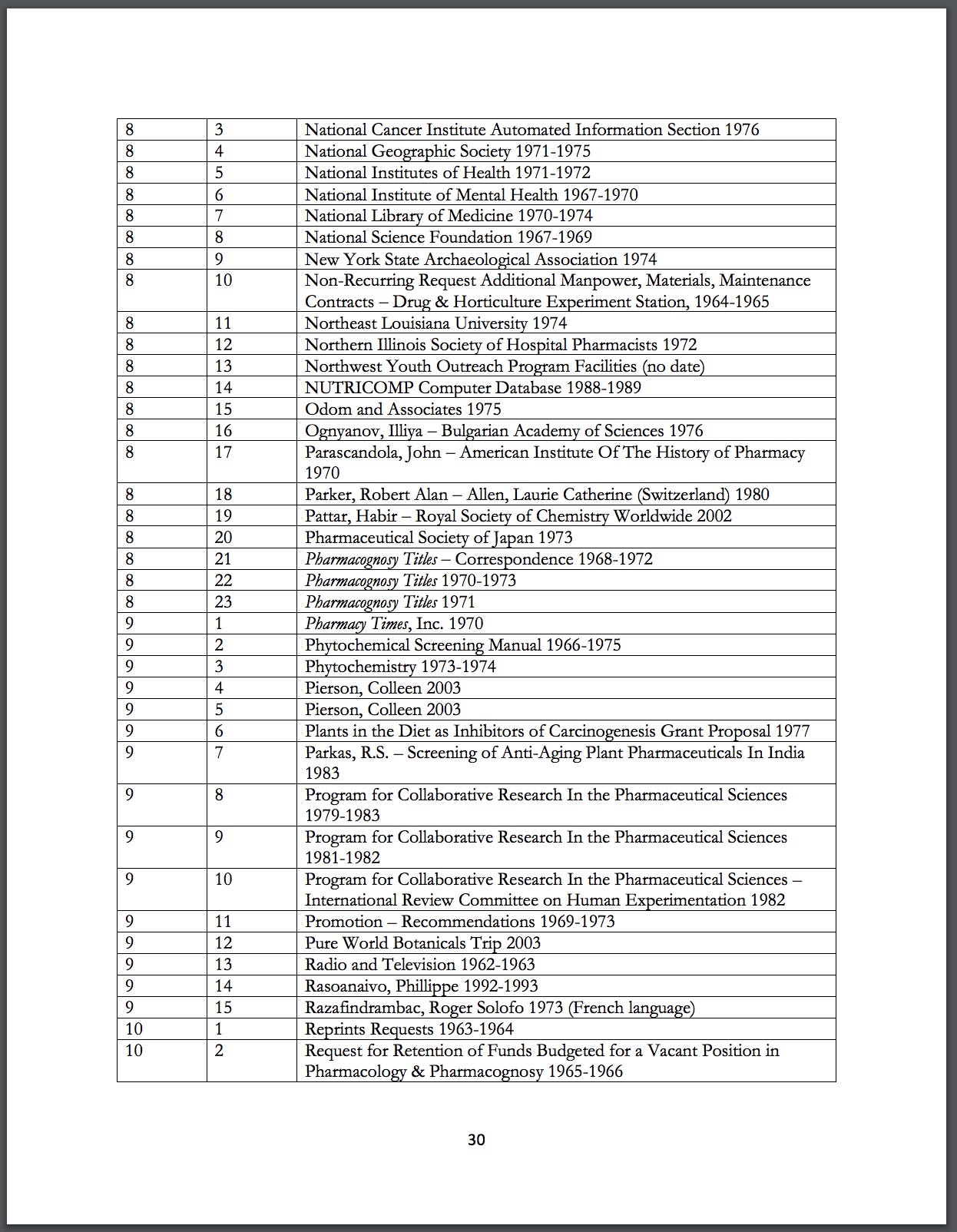
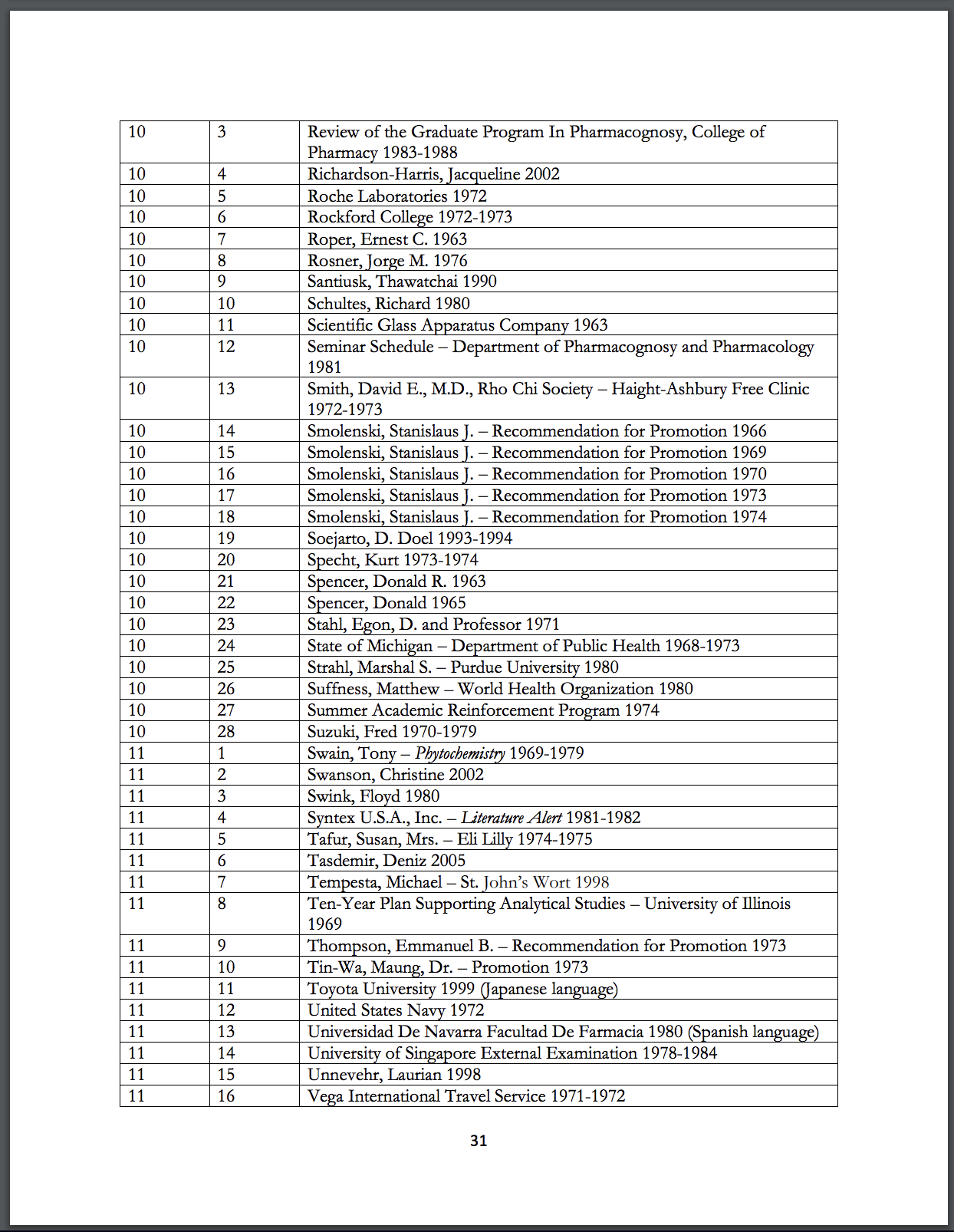
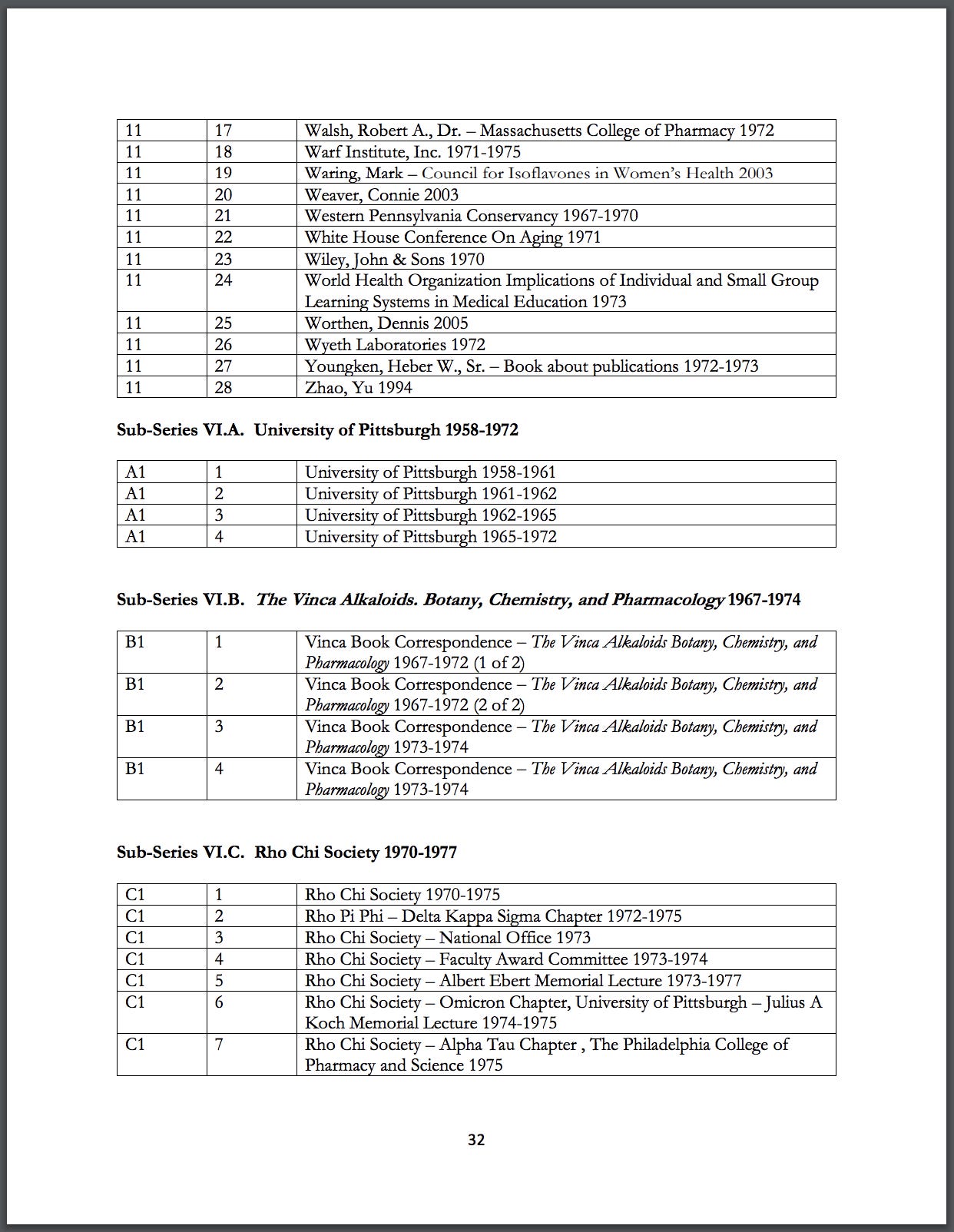
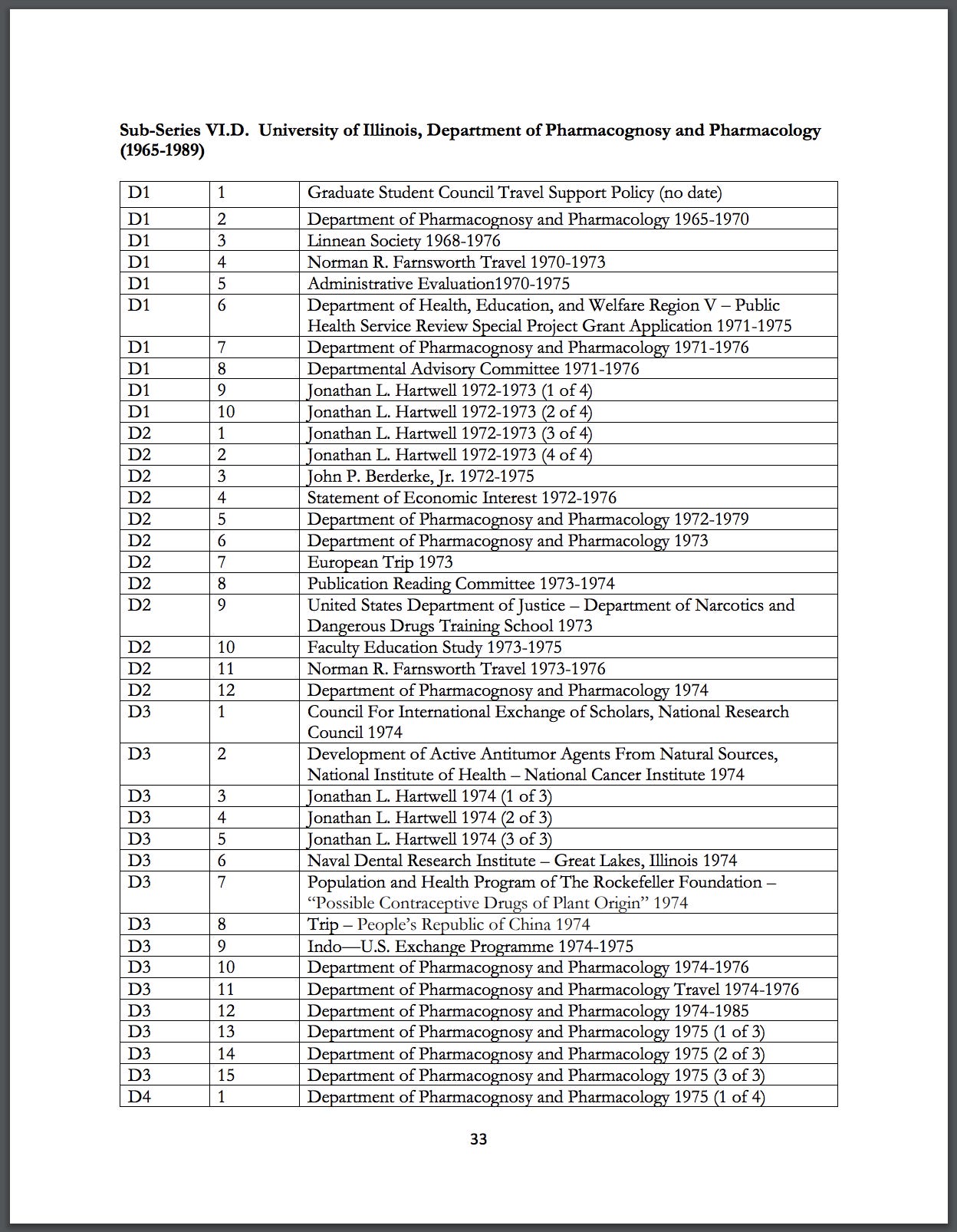
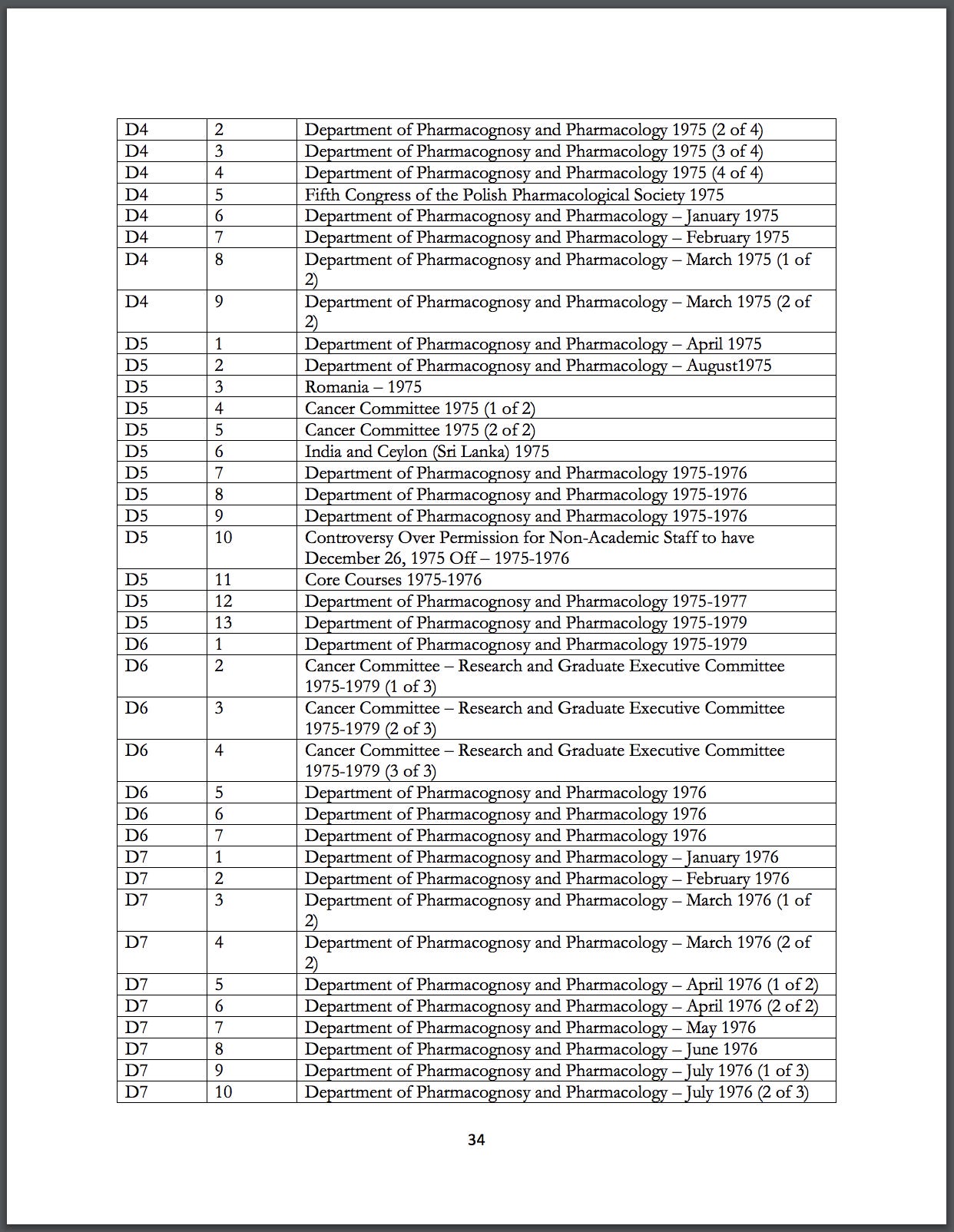

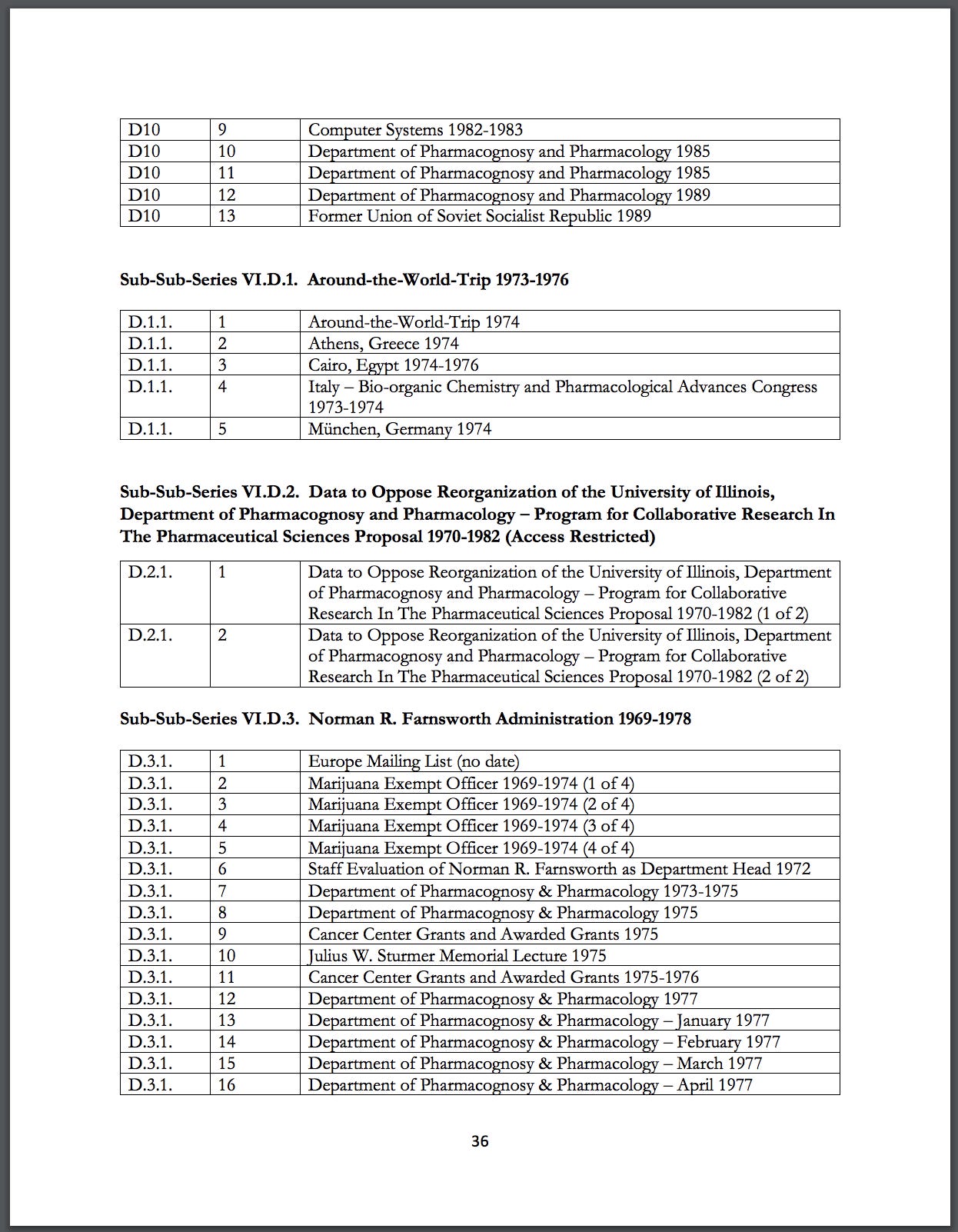
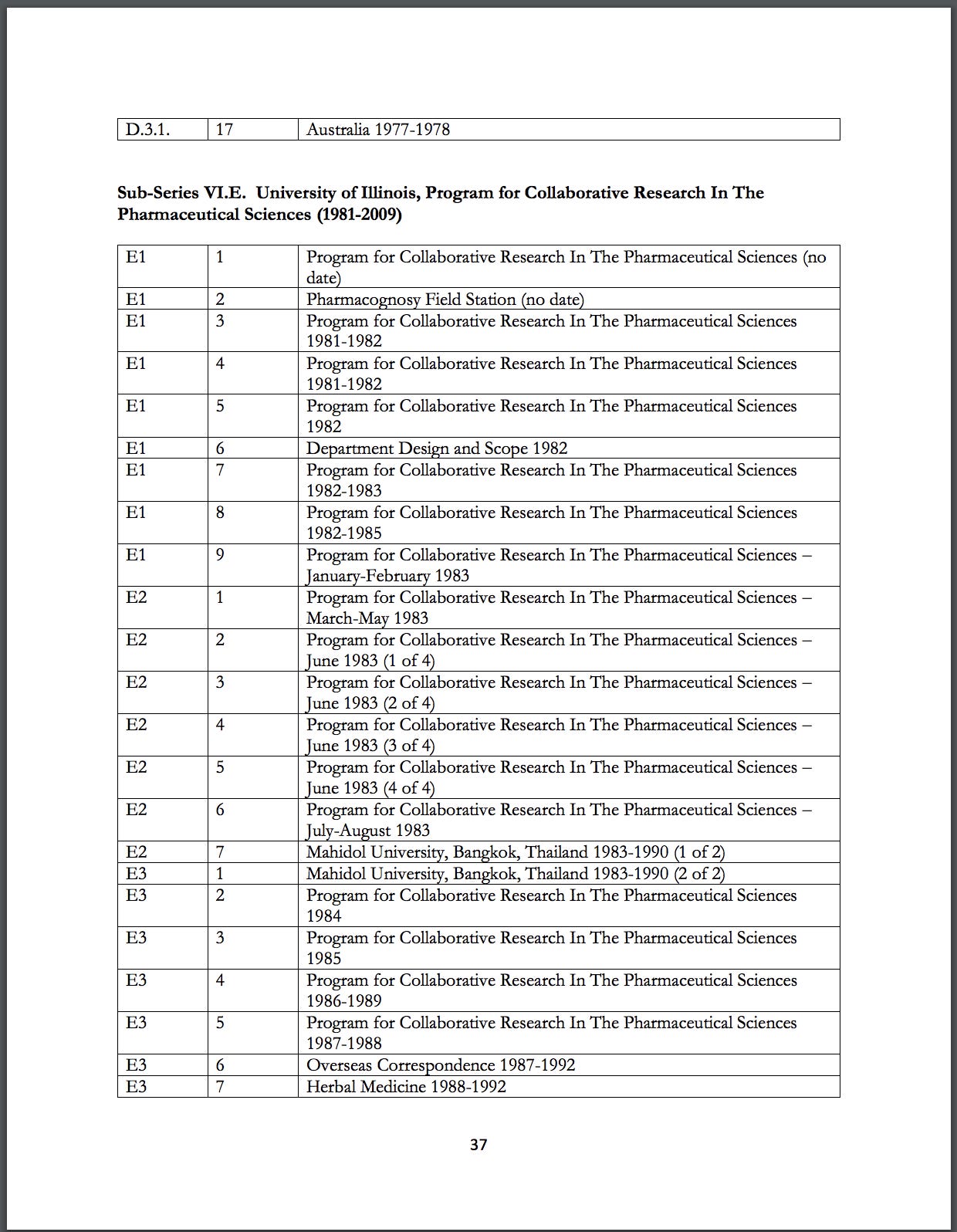
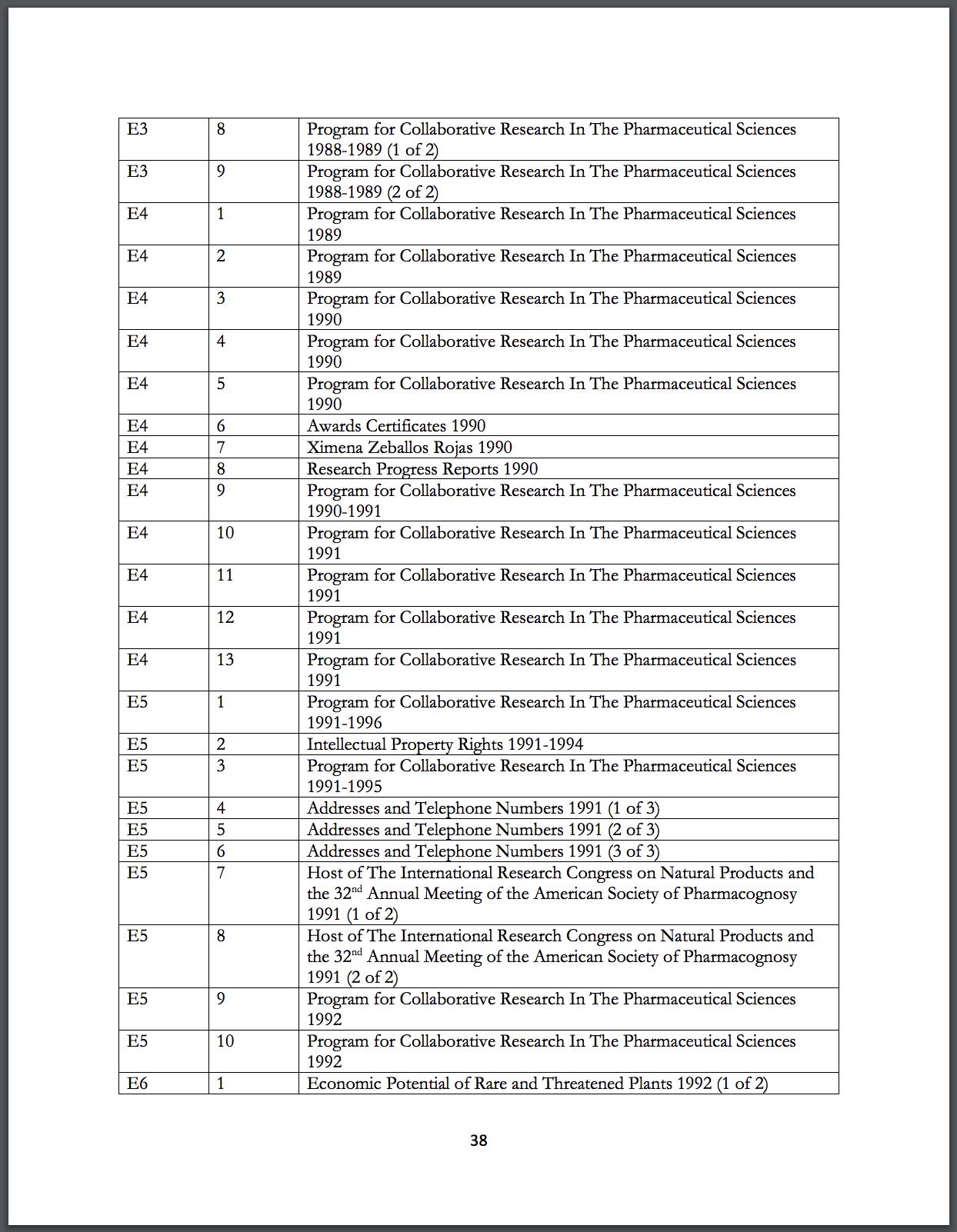
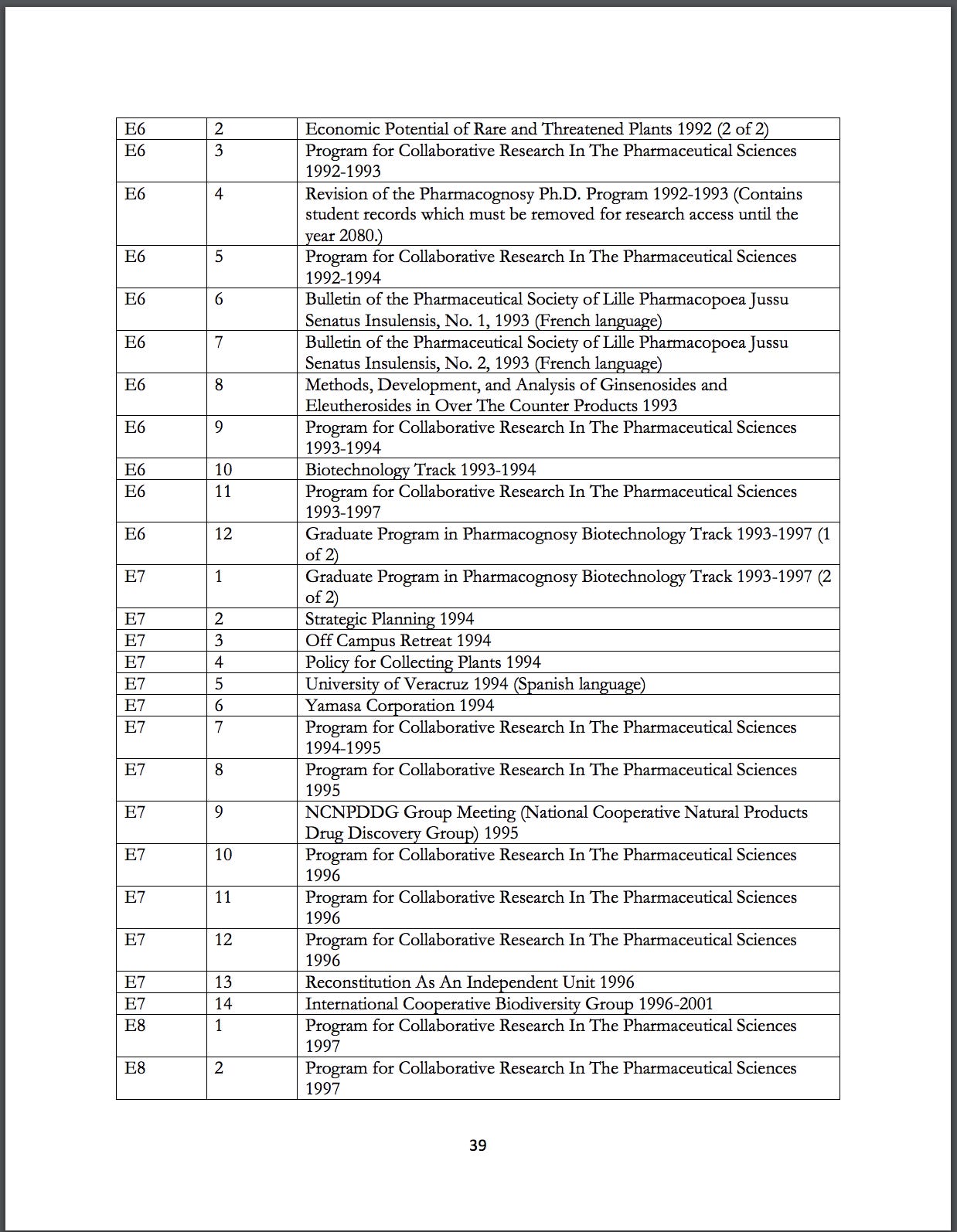
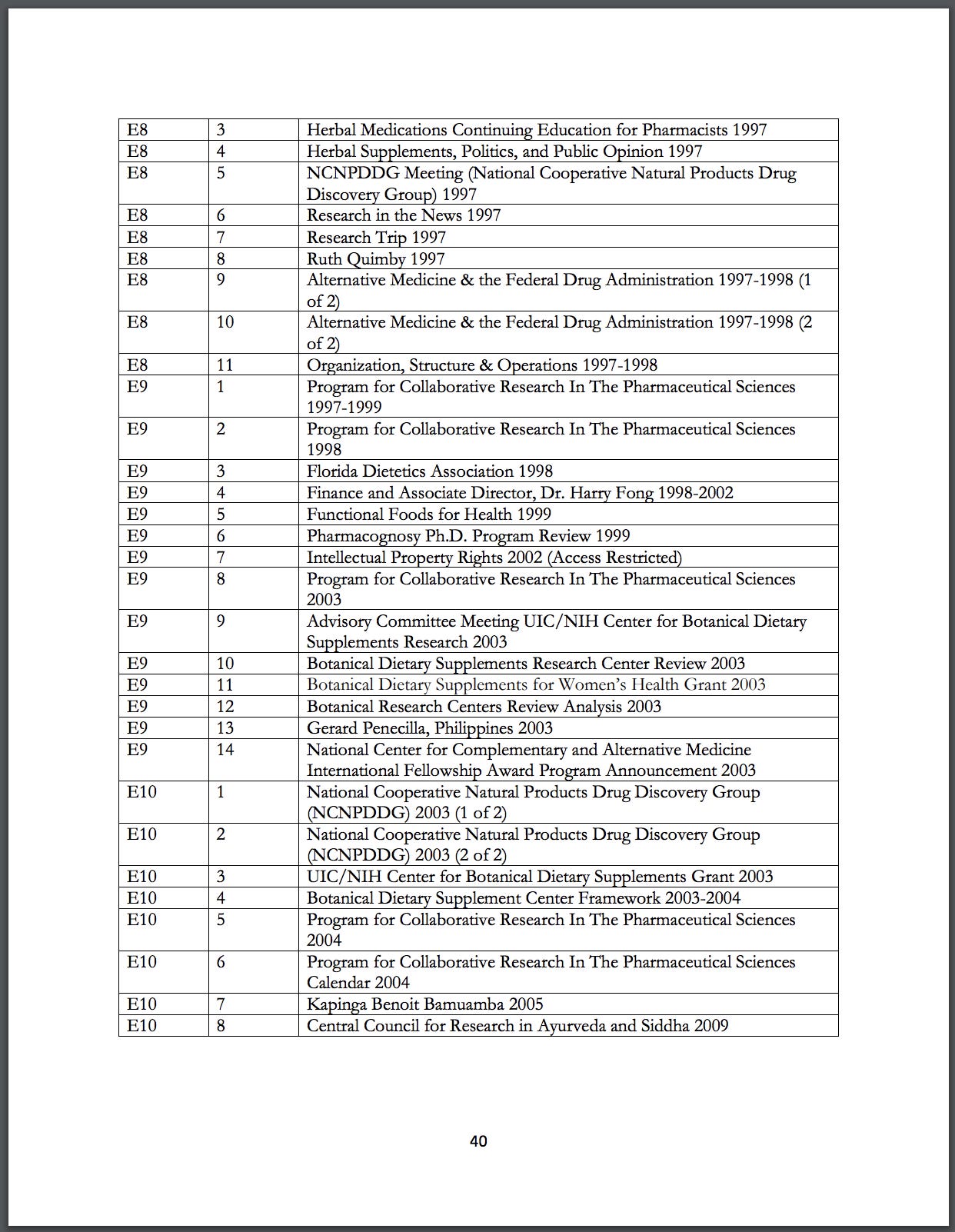
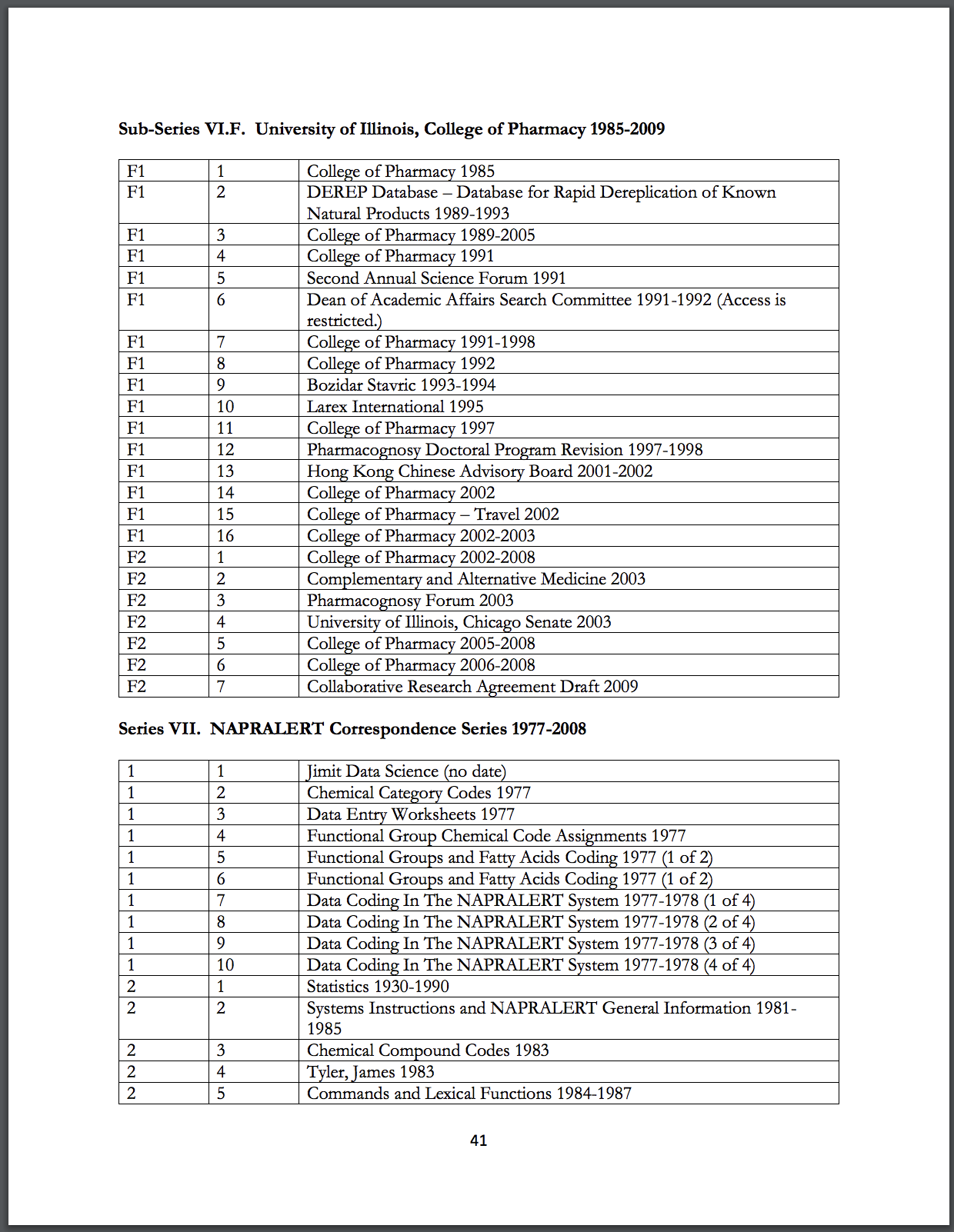
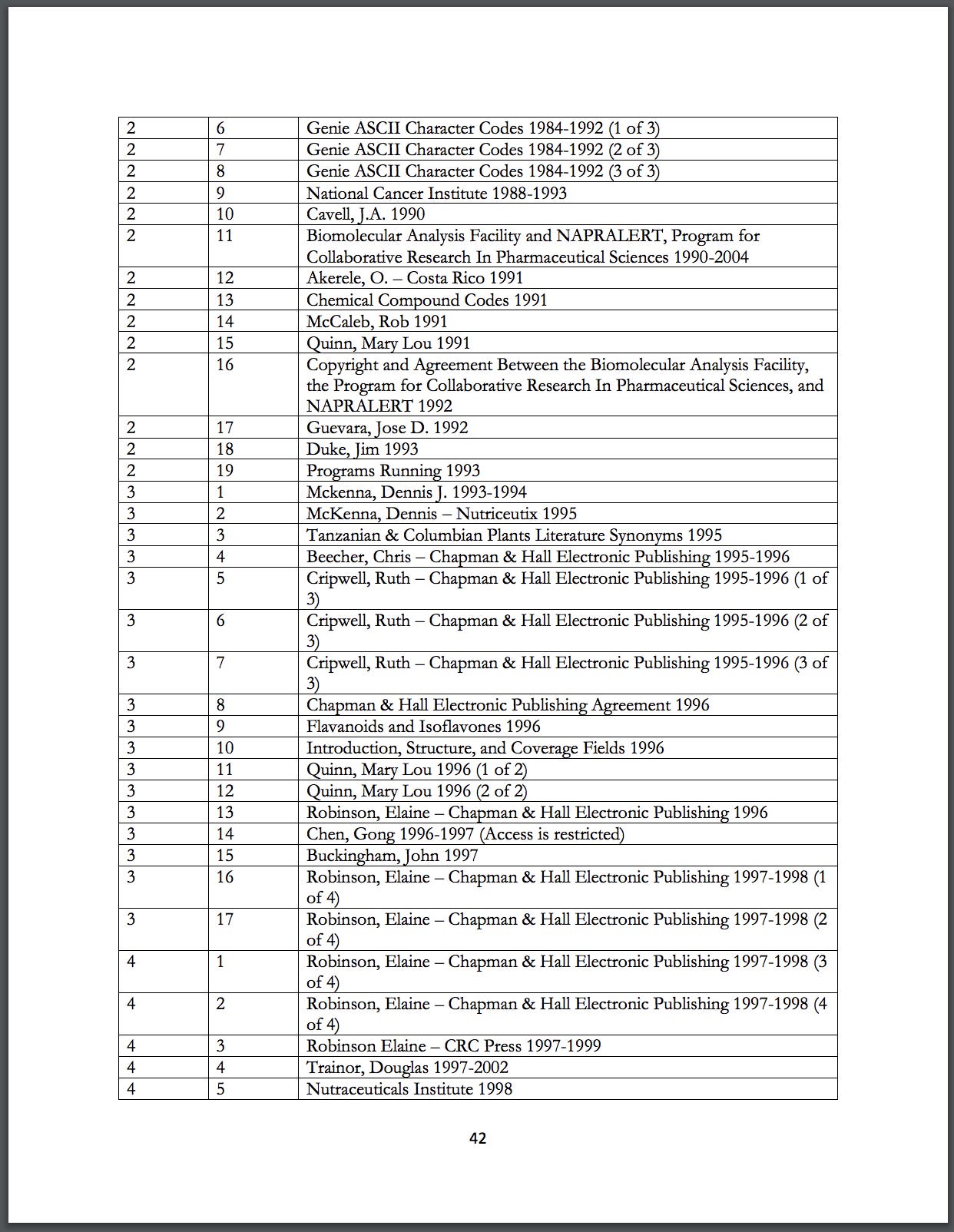
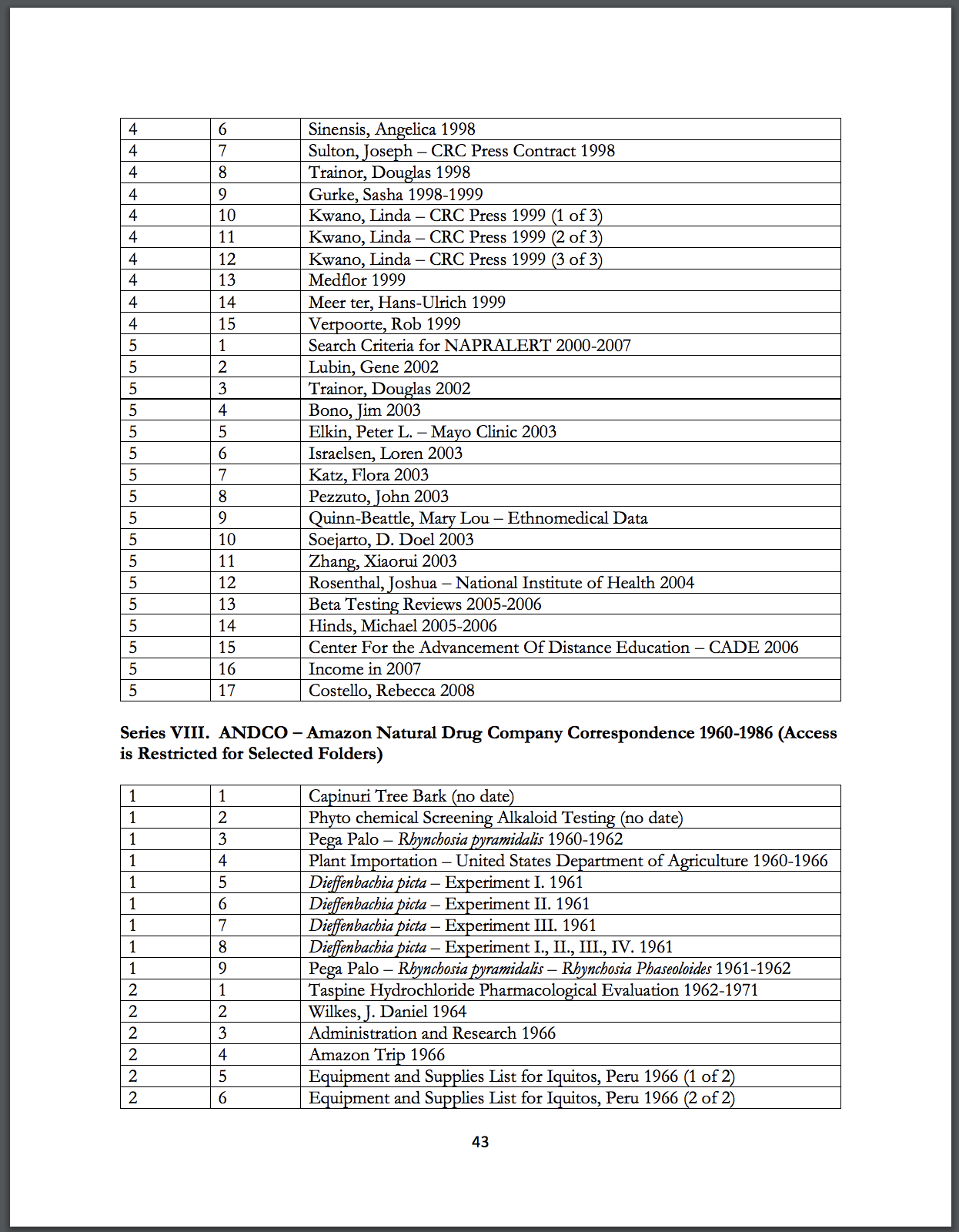
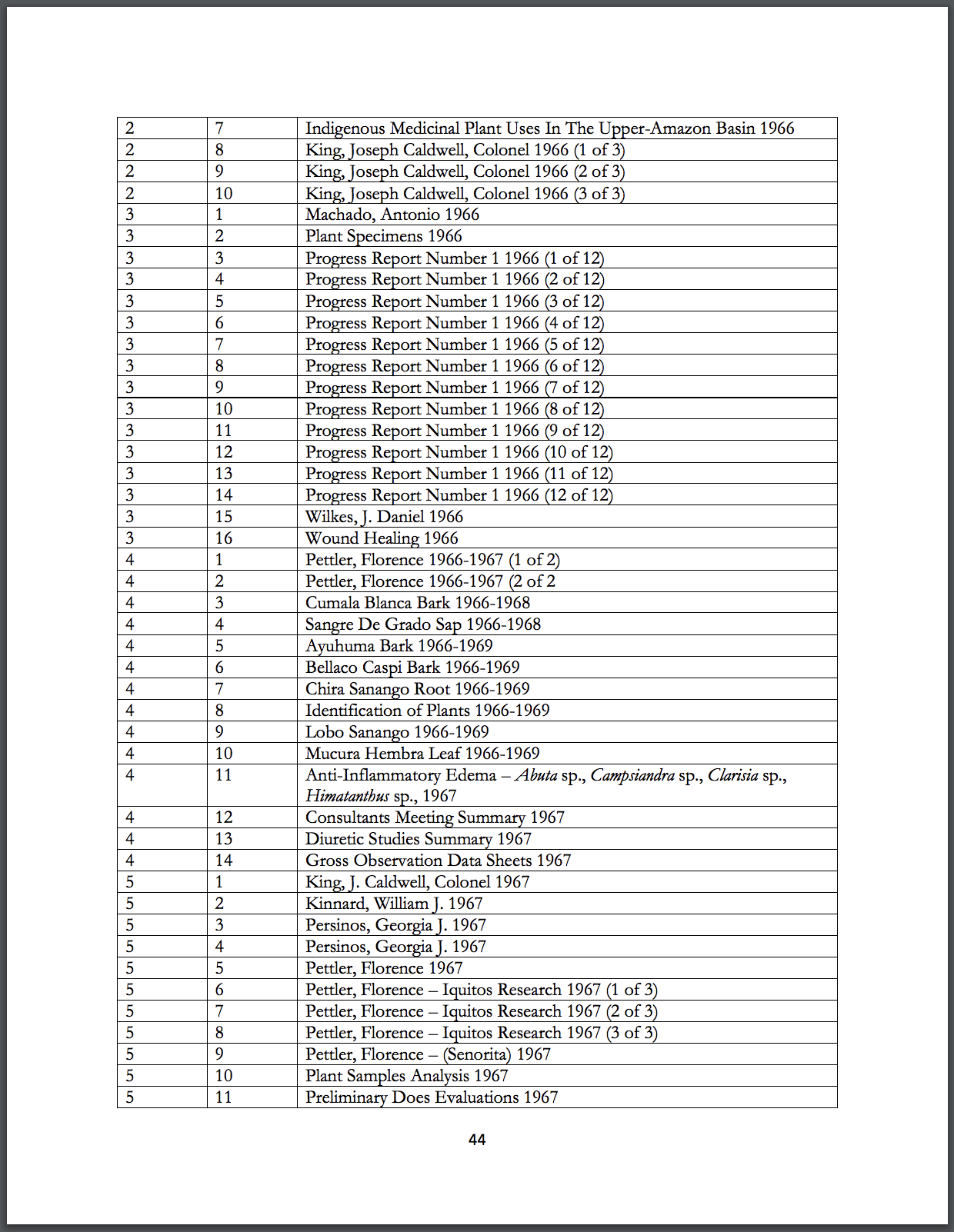
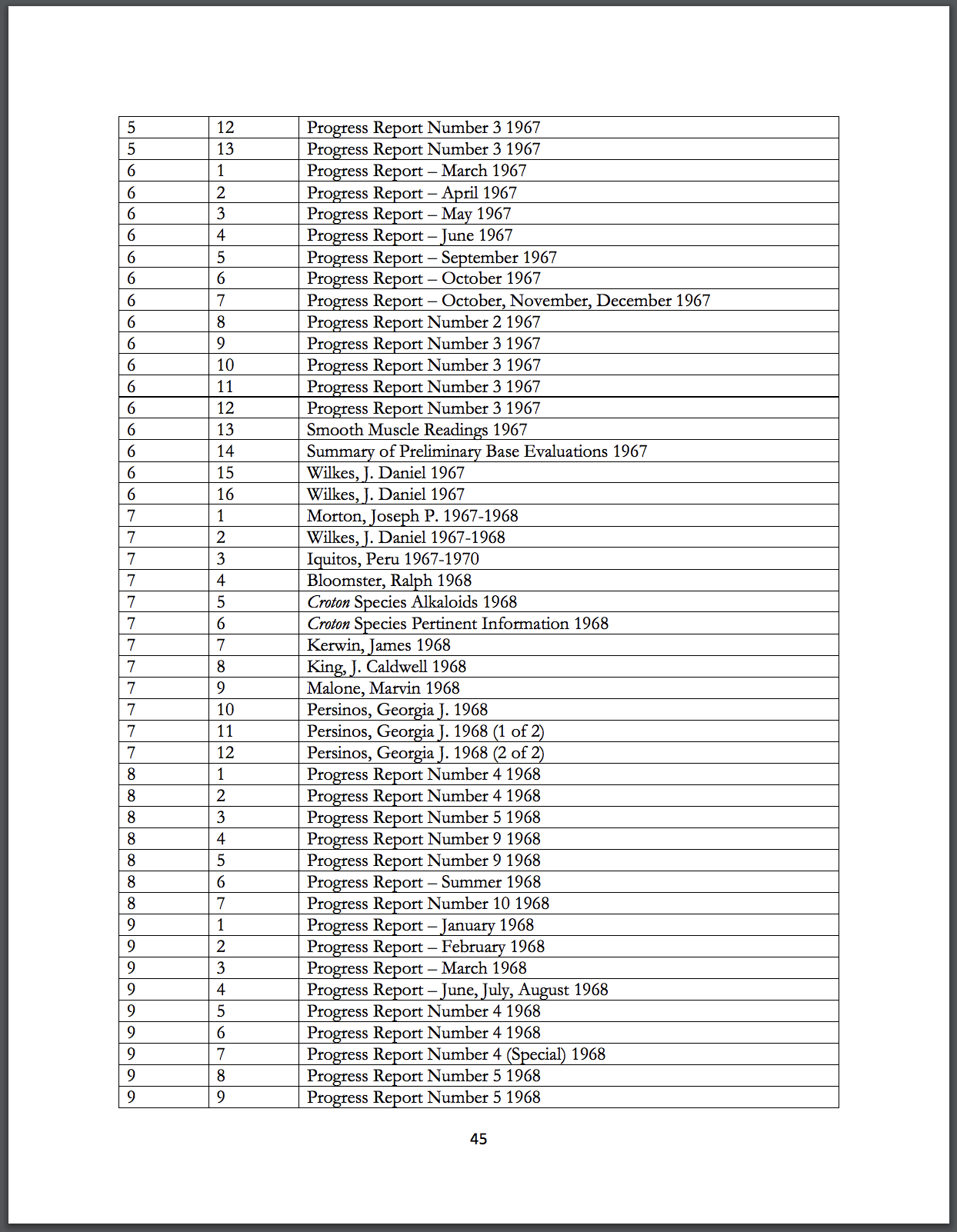
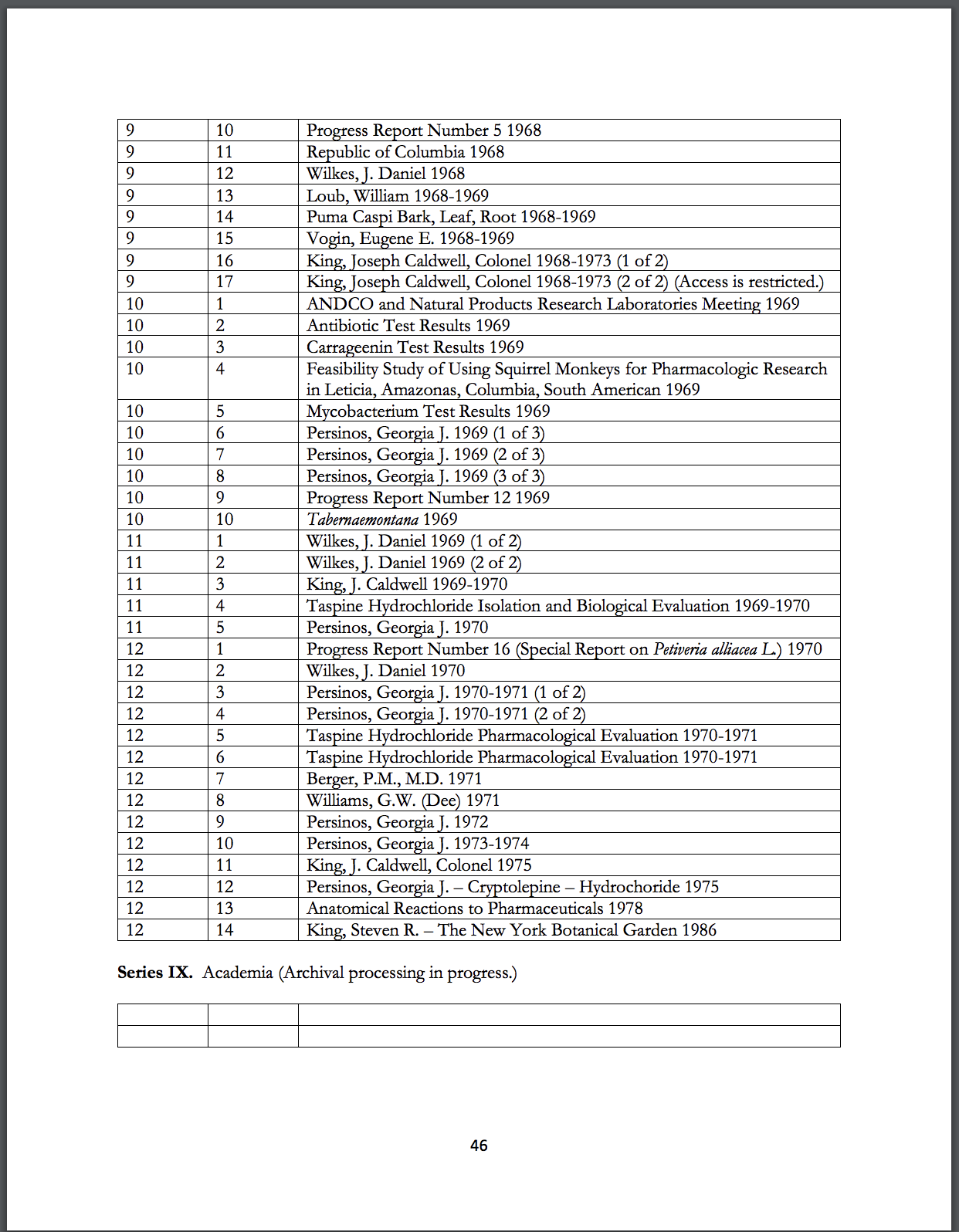
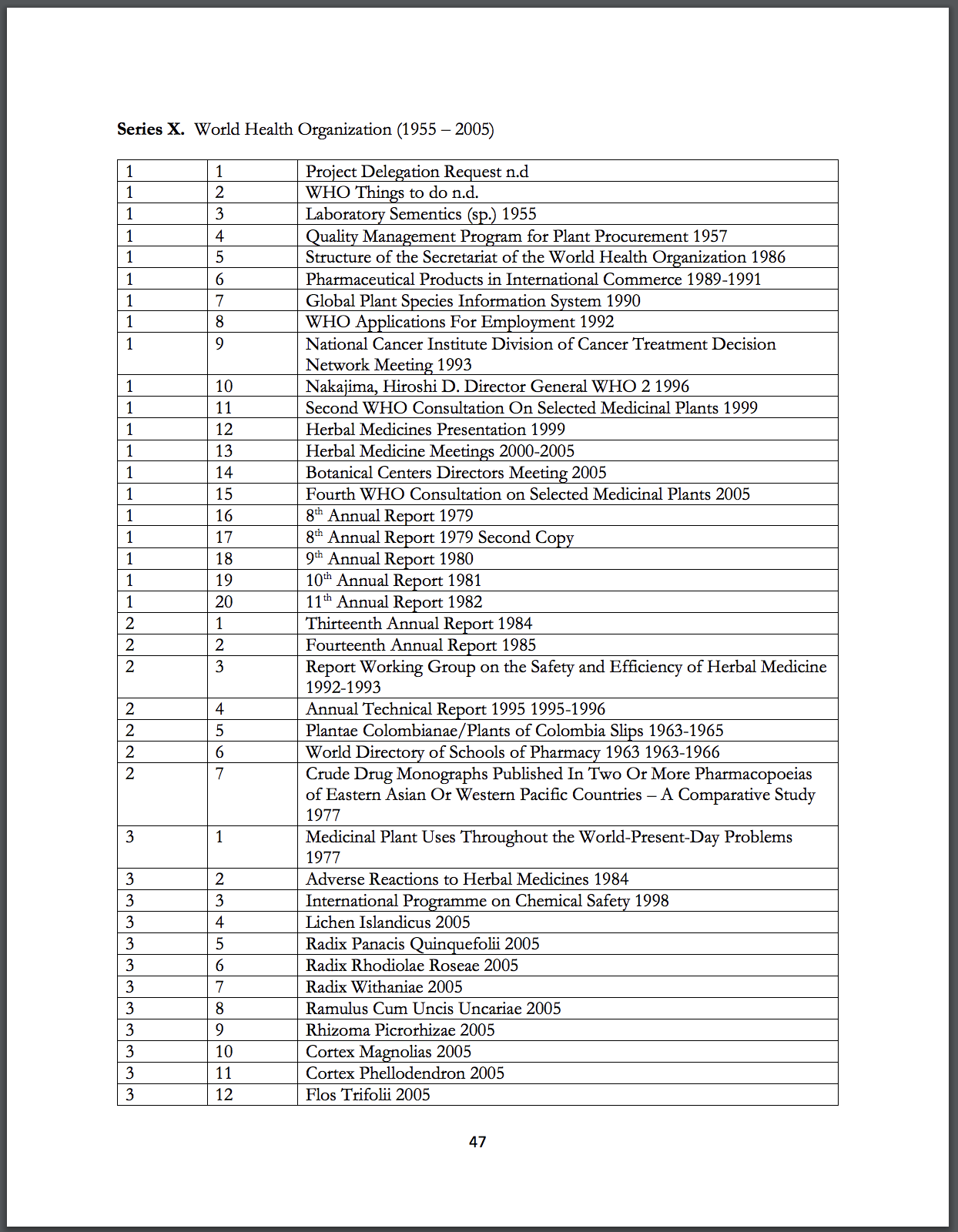
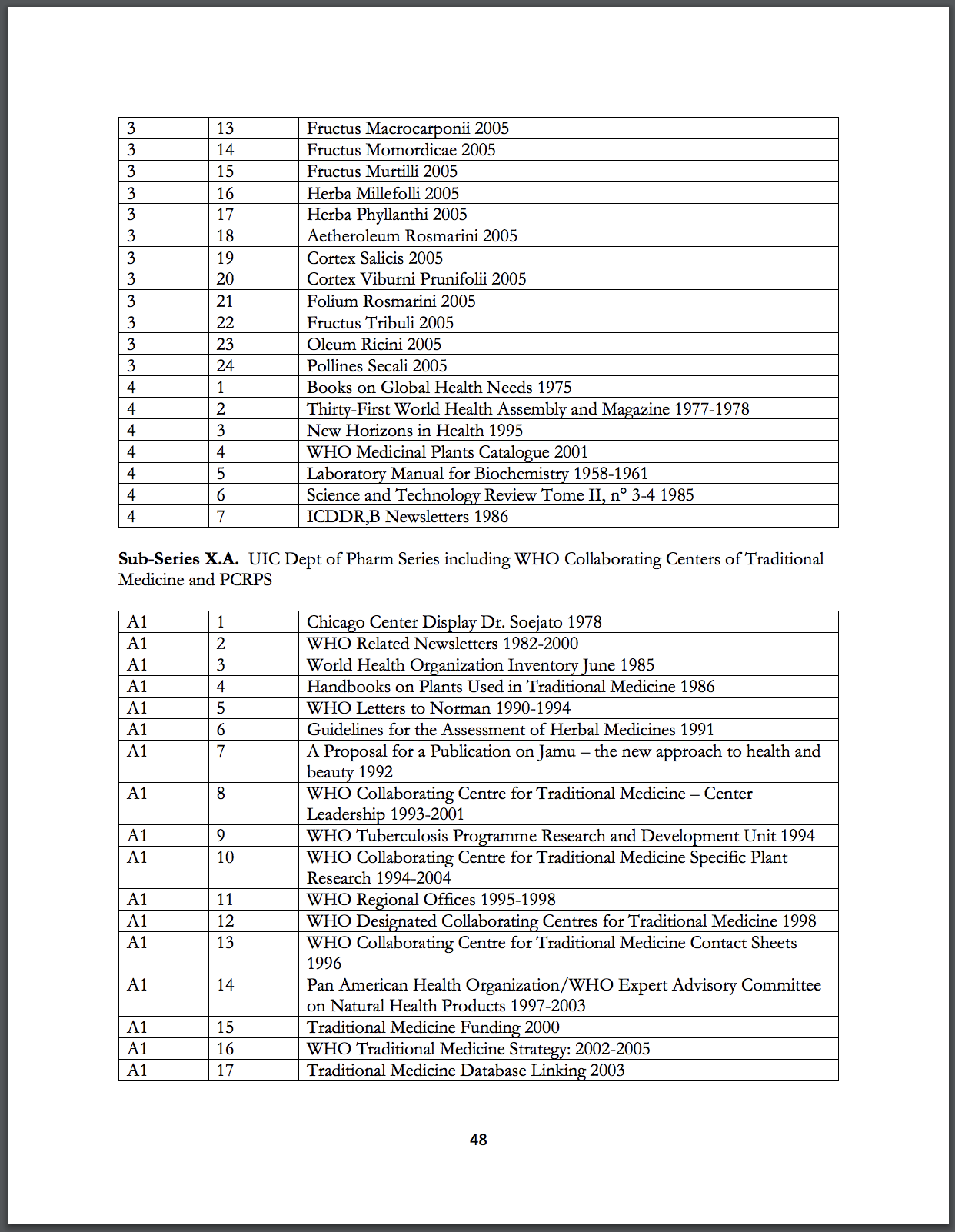
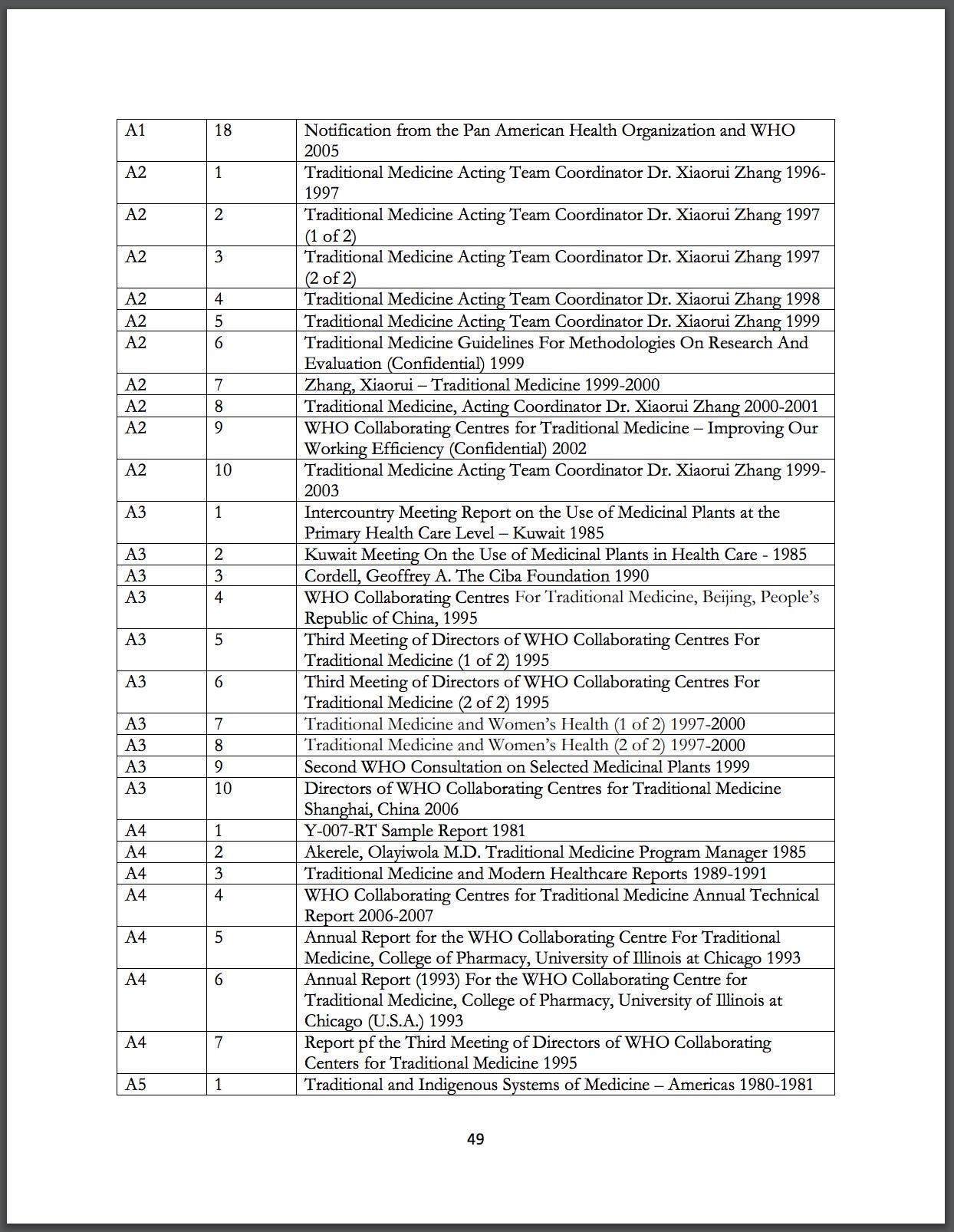
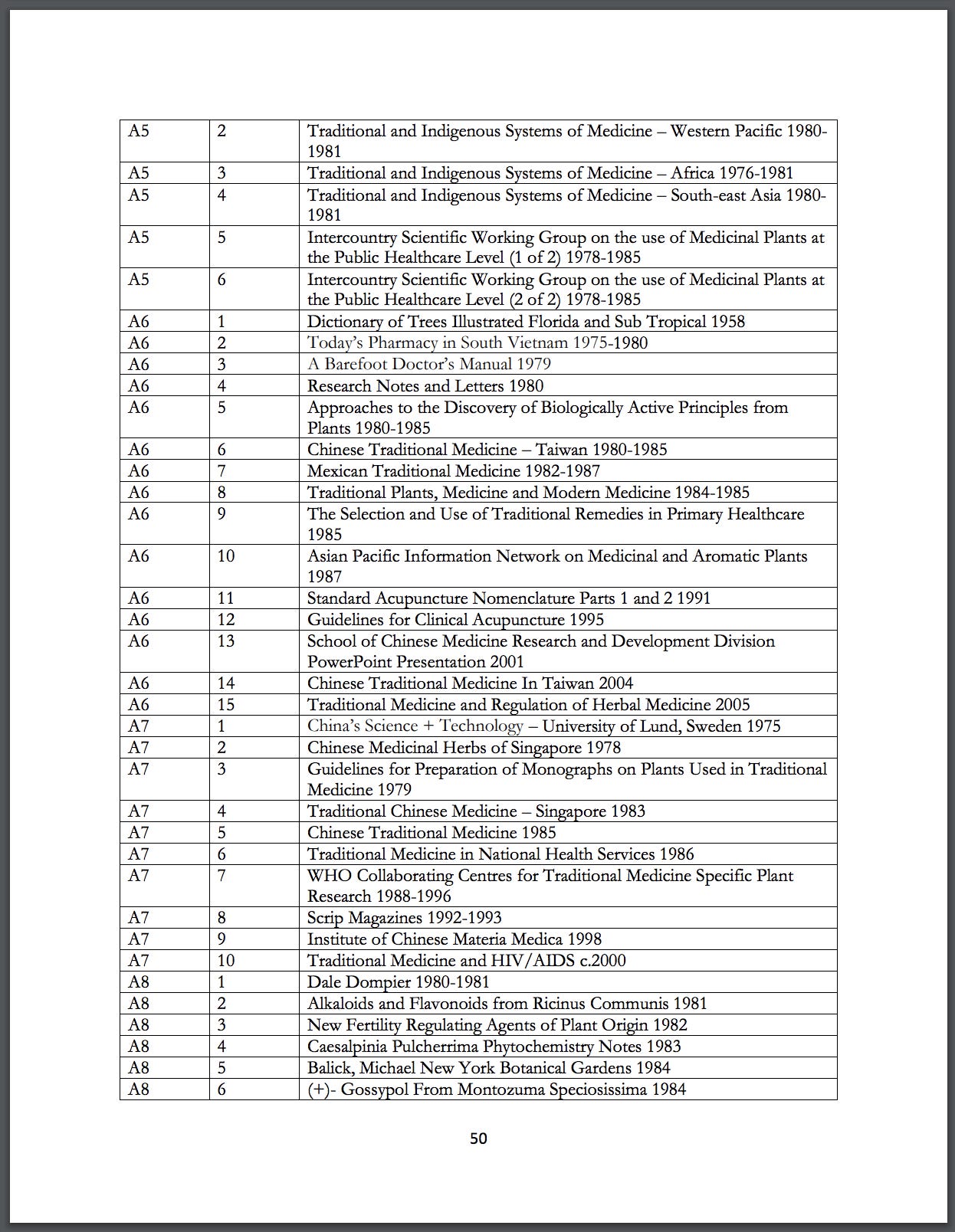
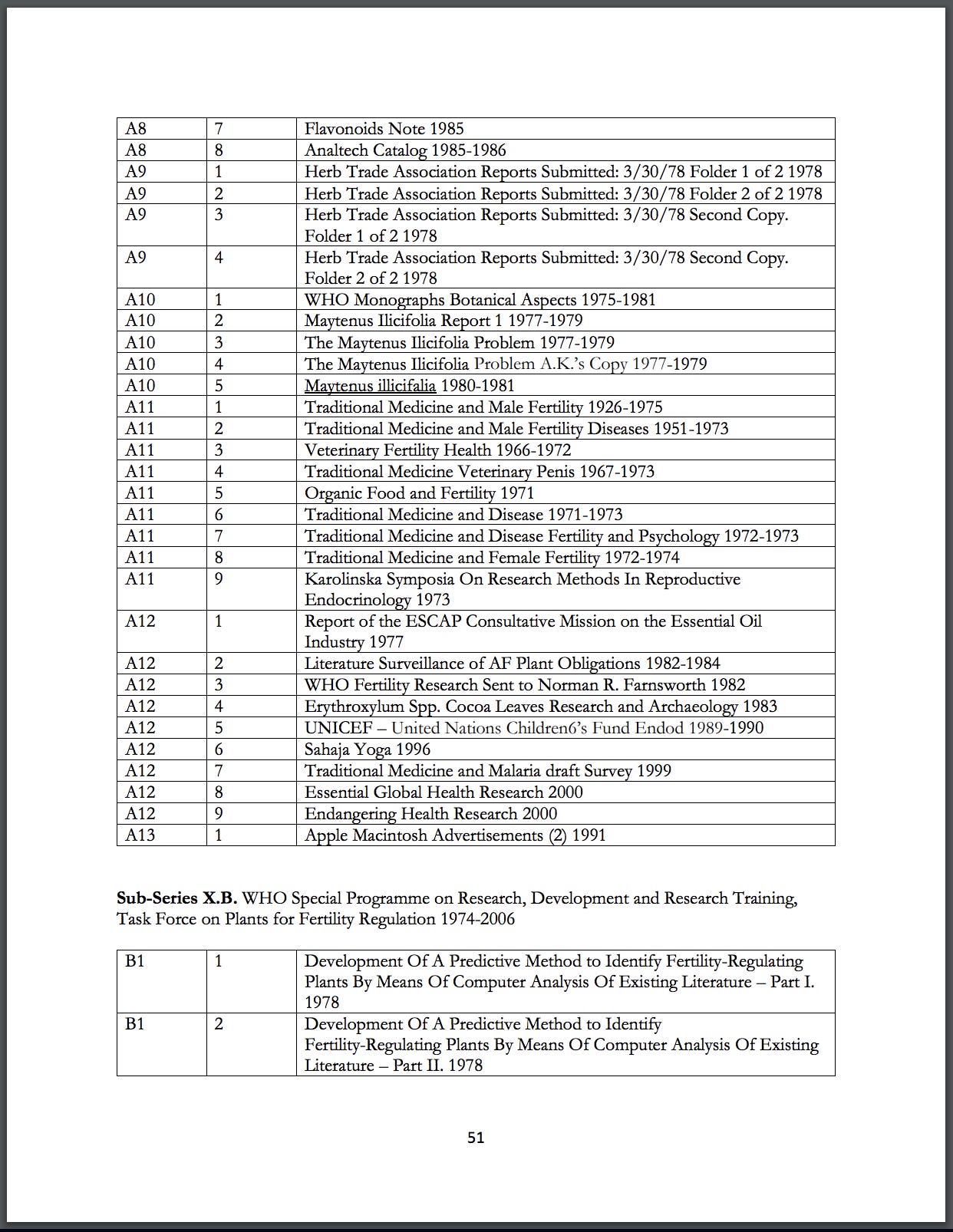
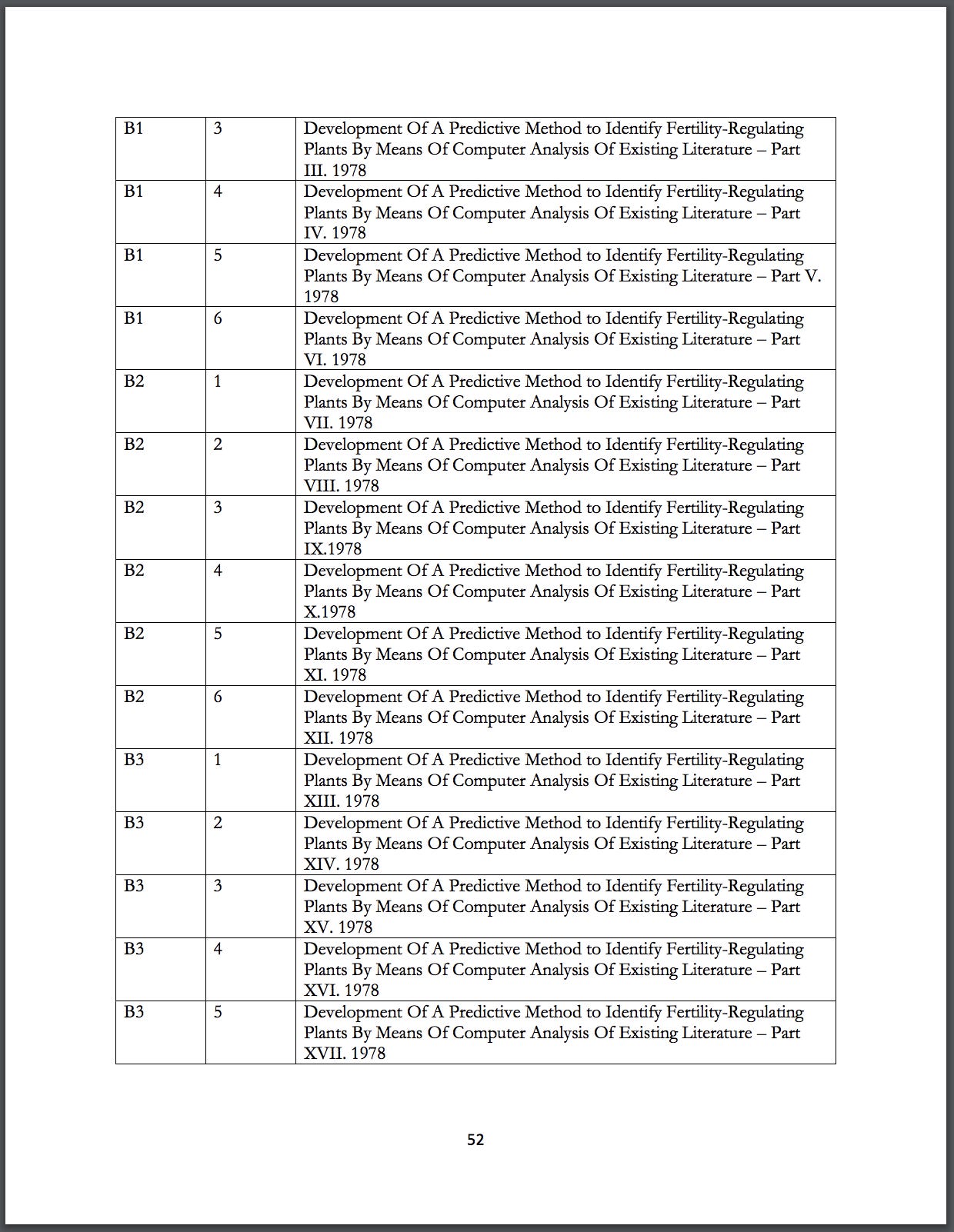
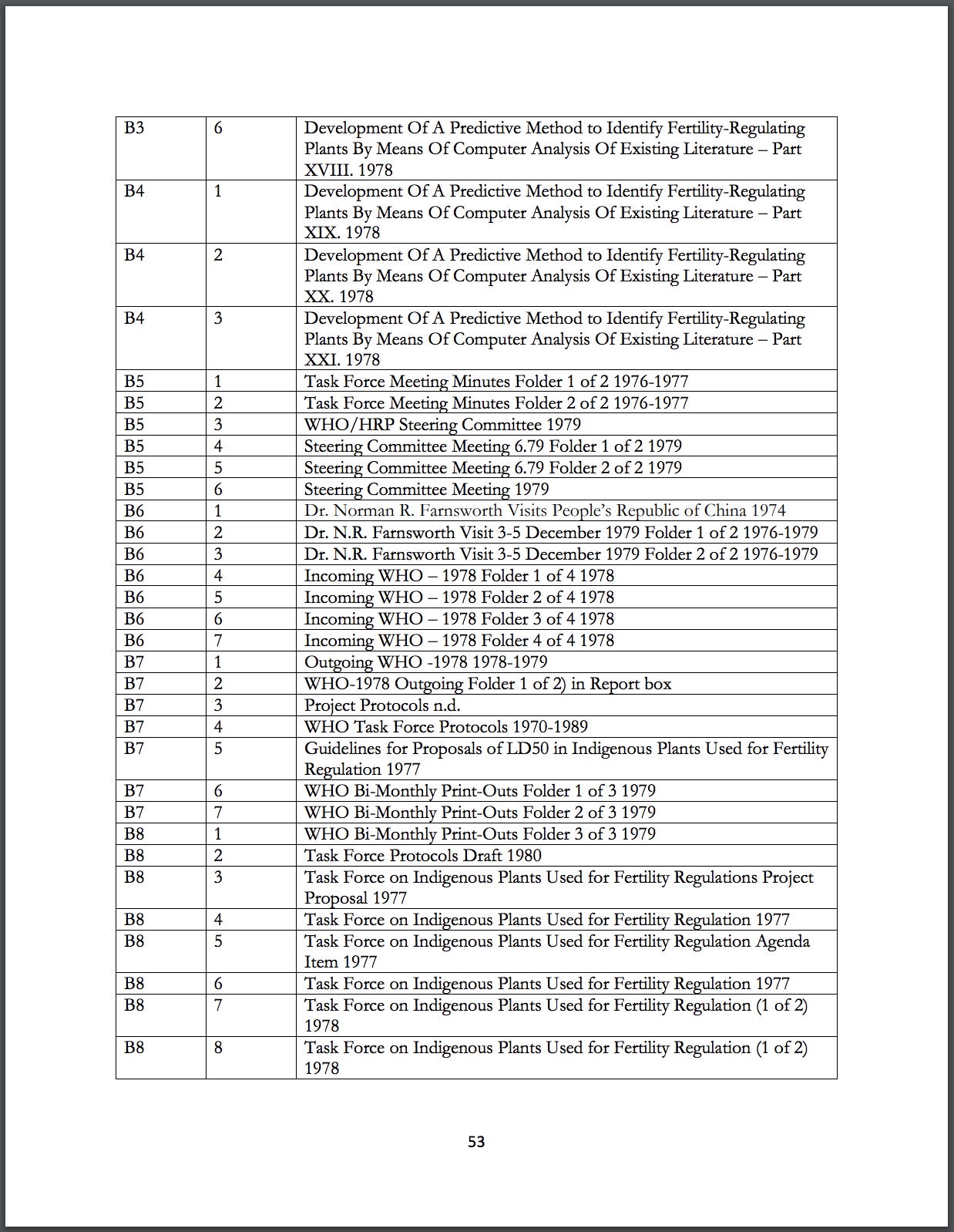
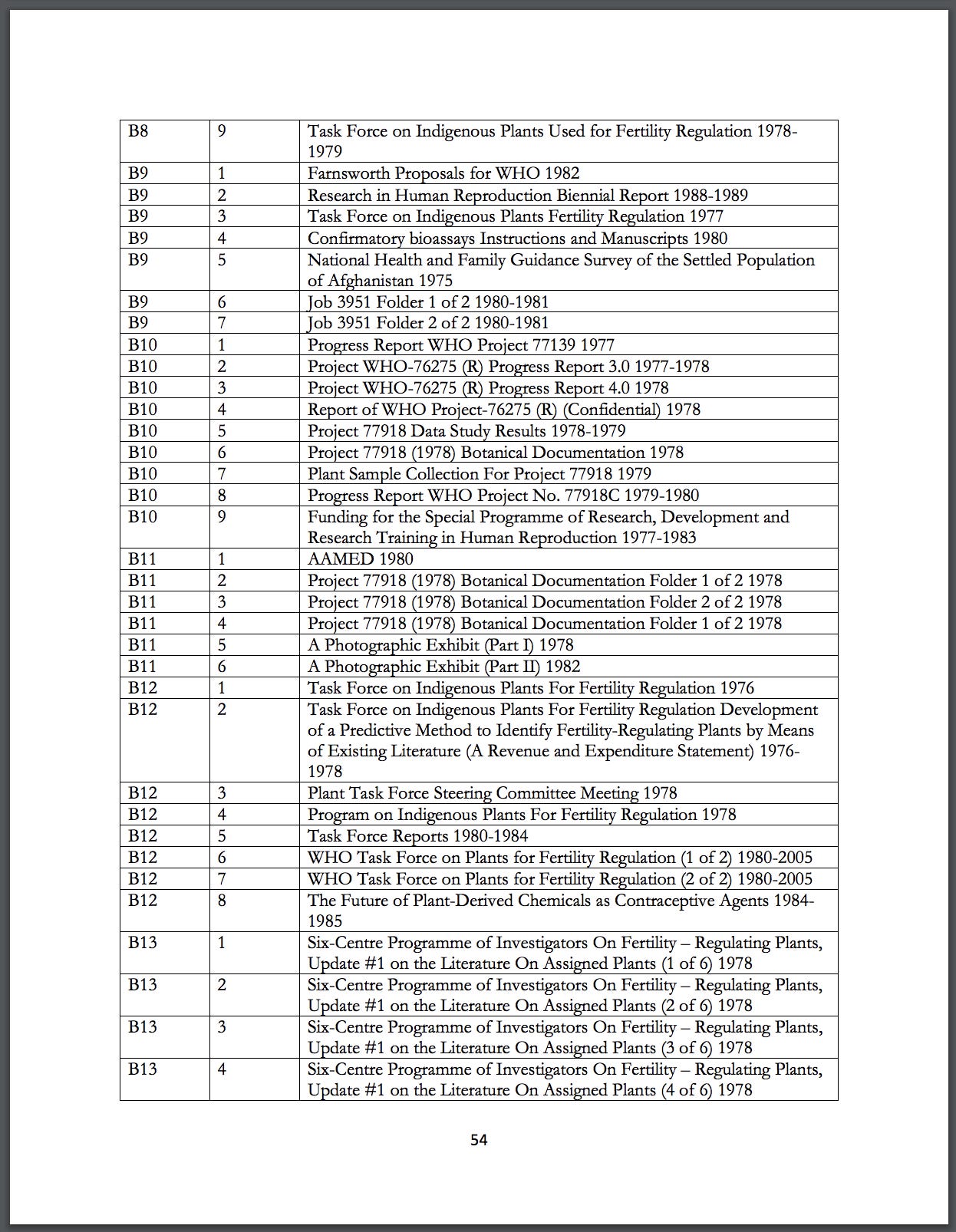
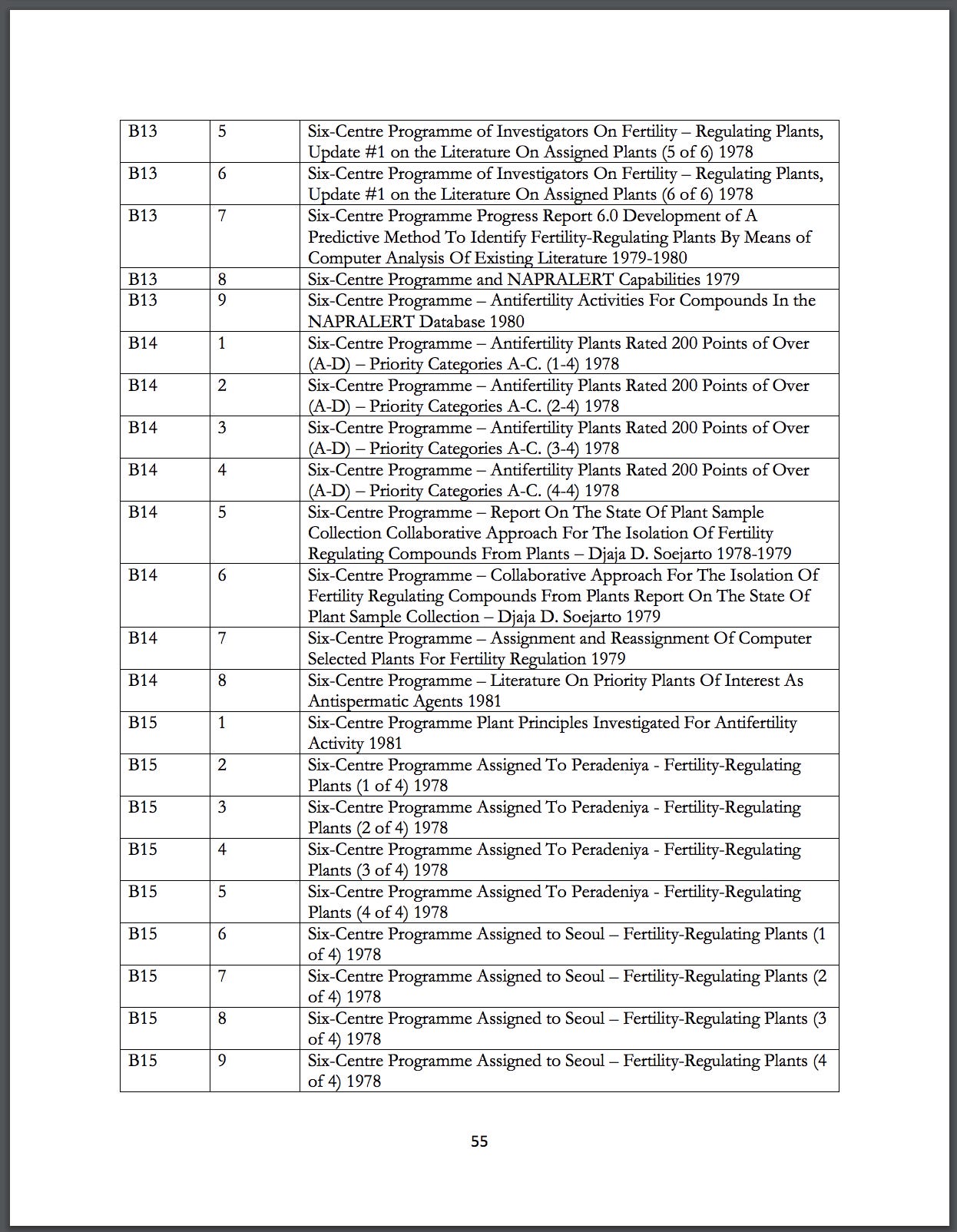
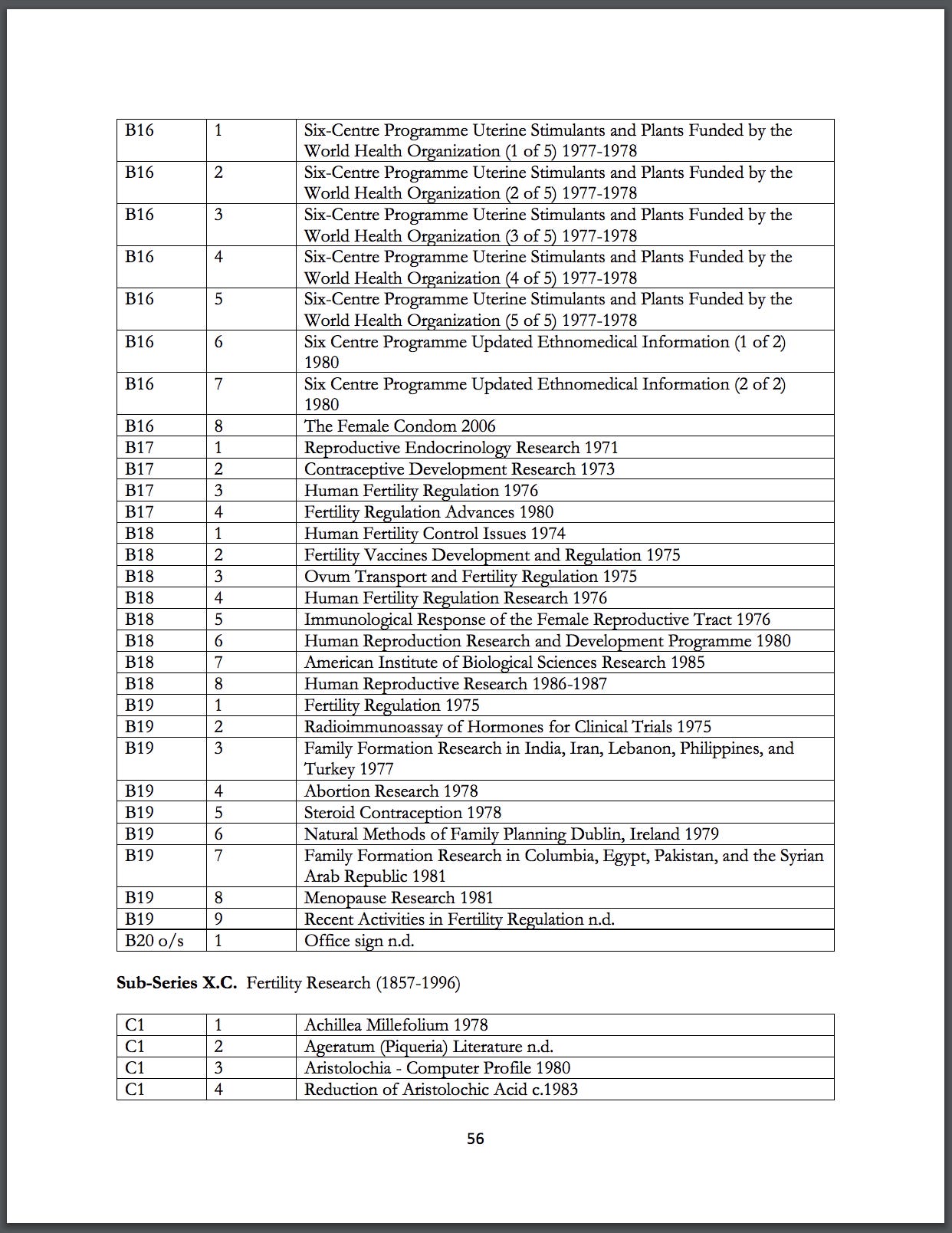
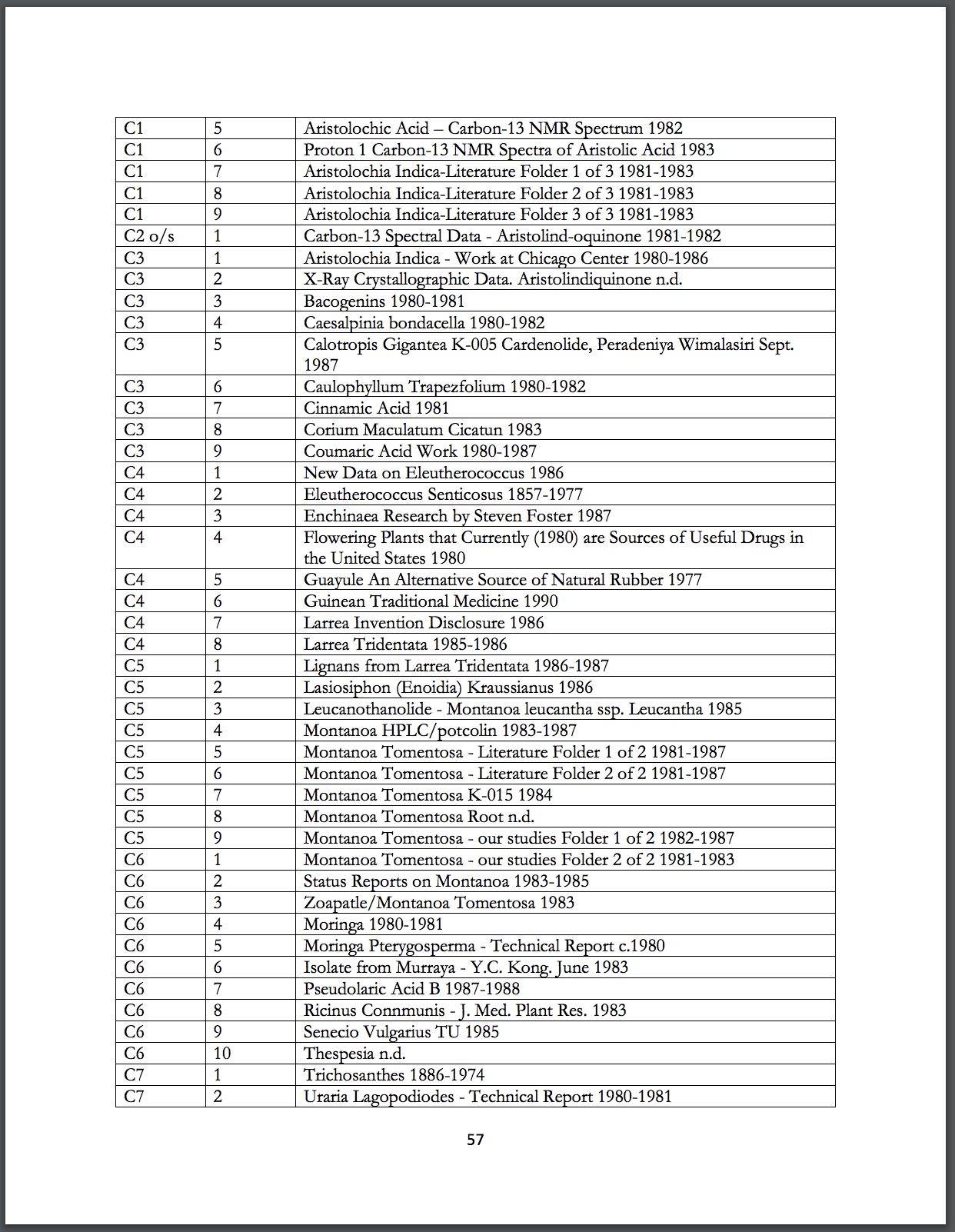
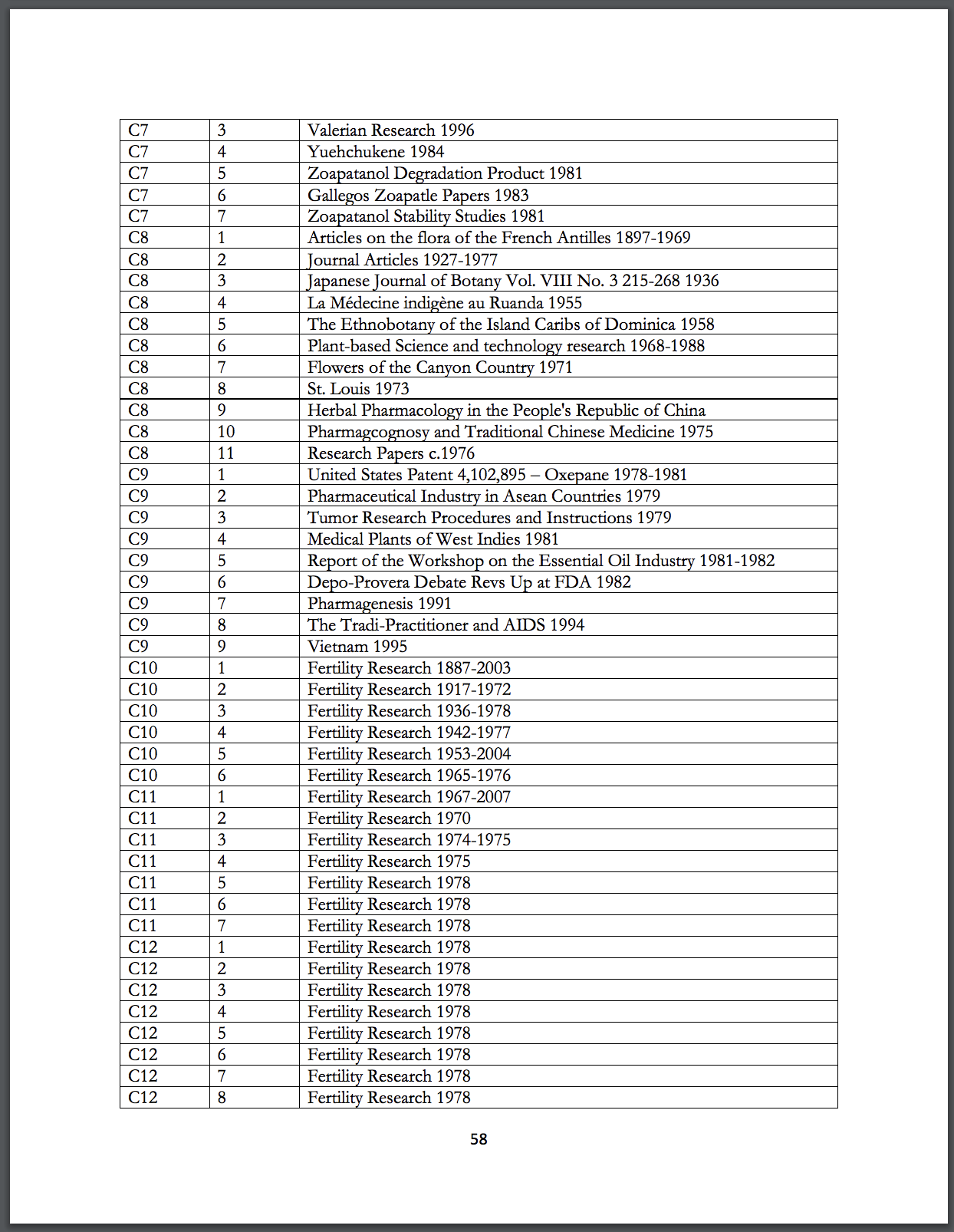
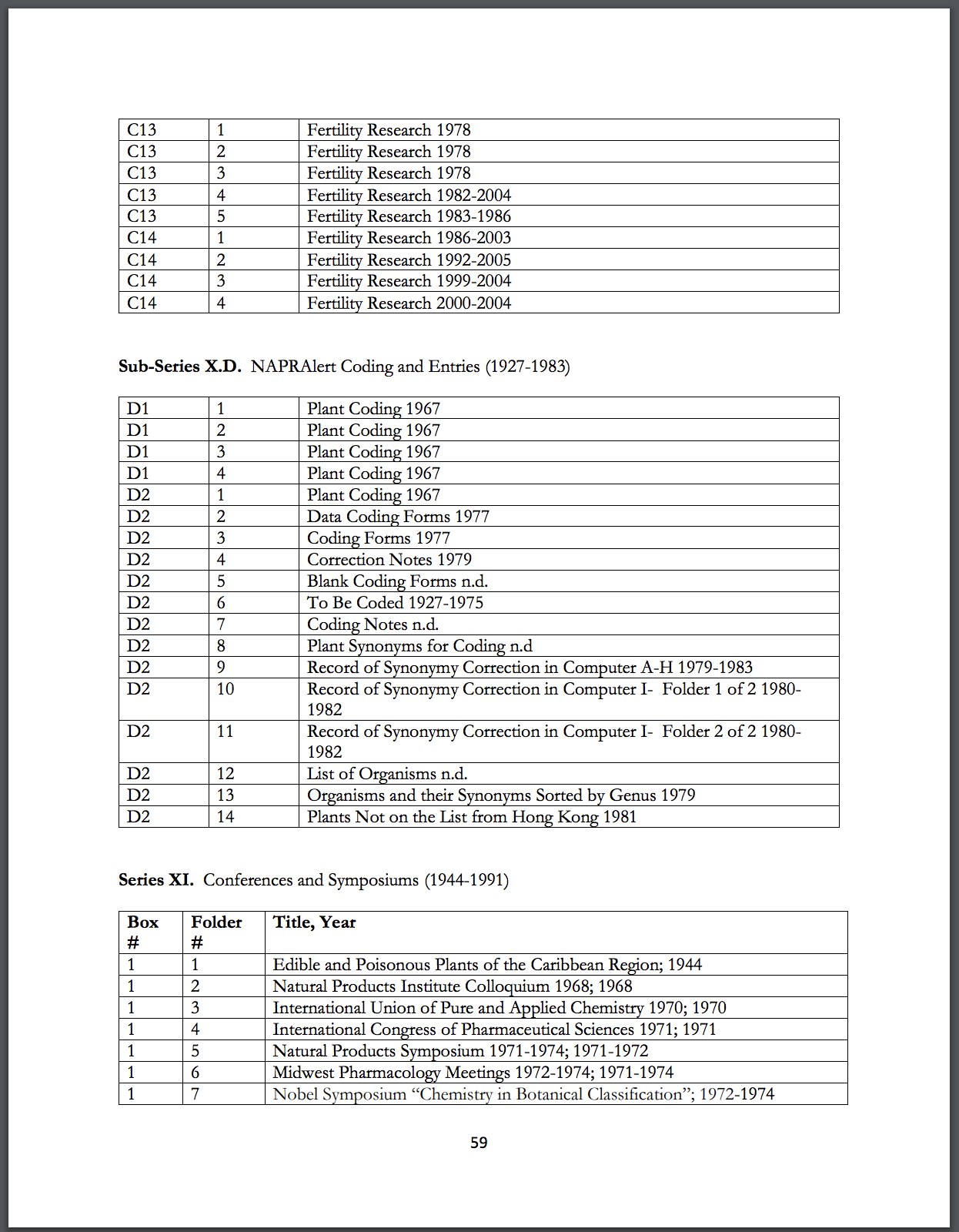
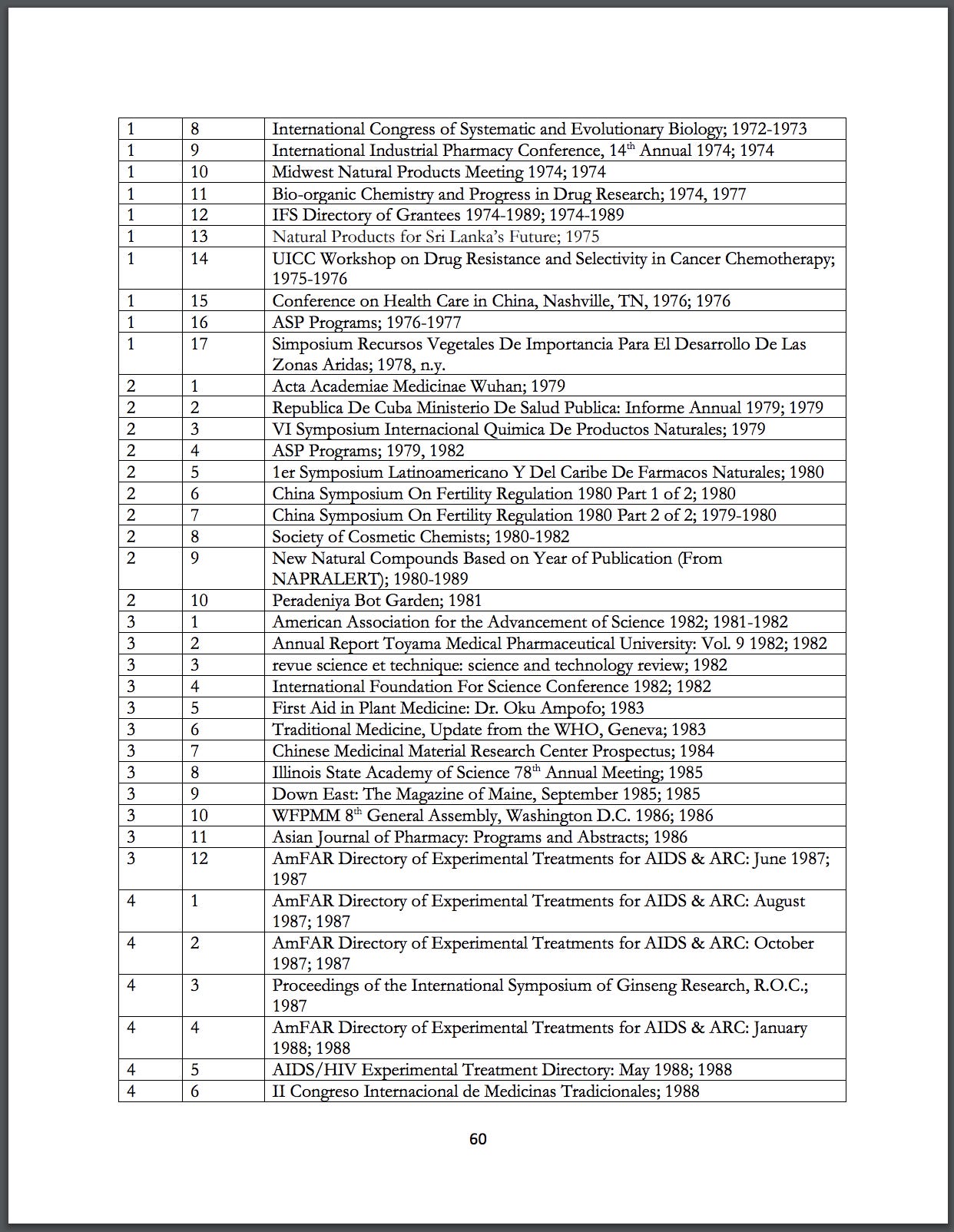
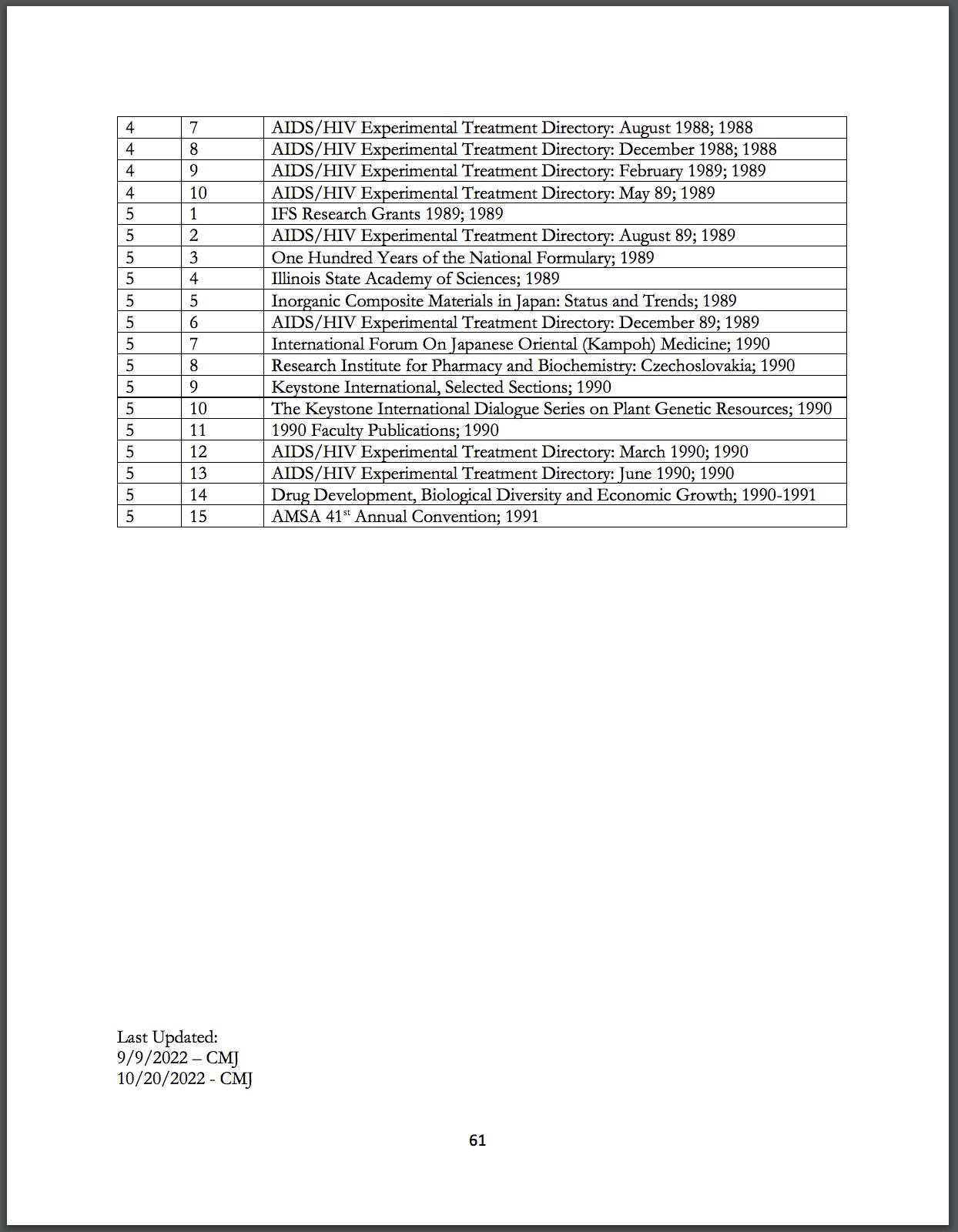
Charles Wright
Source
************

••••
The Liberty Beacon Project is now expanding at a near exponential rate, and for this we are grateful and excited! But we must also be practical. For 7 years we have not asked for any donations, and have built this project with our own funds as we grew. We are now experiencing ever increasing growing pains due to the large number of websites and projects we represent. So we have just installed donation buttons on our websites and ask that you consider this when you visit them. Nothing is too small. We thank you for all your support and your considerations … (TLB)
••••
Comment Policy: As a privately owned web site, we reserve the right to remove comments that contain spam, advertising, vulgarity, threats of violence, racism, or personal/abusive attacks on other users. This also applies to trolling, the use of more than one alias, or just intentional mischief. Enforcement of this policy is at the discretion of this websites administrators. Repeat offenders may be blocked or permanently banned without prior warning.
••••
Disclaimer: TLB websites contain copyrighted material the use of which has not always been specifically authorized by the copyright owner. We are making such material available to our readers under the provisions of “fair use” in an effort to advance a better understanding of political, health, economic and social issues. The material on this site is distributed without profit to those who have expressed a prior interest in receiving it for research and educational purposes. If you wish to use copyrighted material for purposes other than “fair use” you must request permission from the copyright owner.
••••
Disclaimer: The information and opinions shared are for informational purposes only including, but not limited to, text, graphics, images and other material are not intended as medical advice or instruction. Nothing mentioned is intended to be a substitute for professional medical advice, diagnosis or treatment.



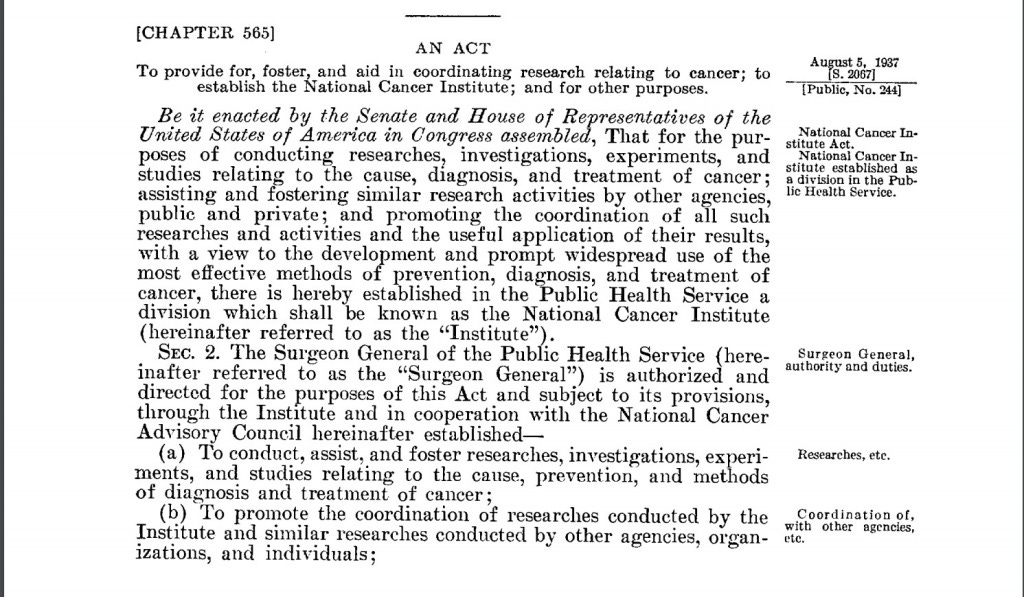
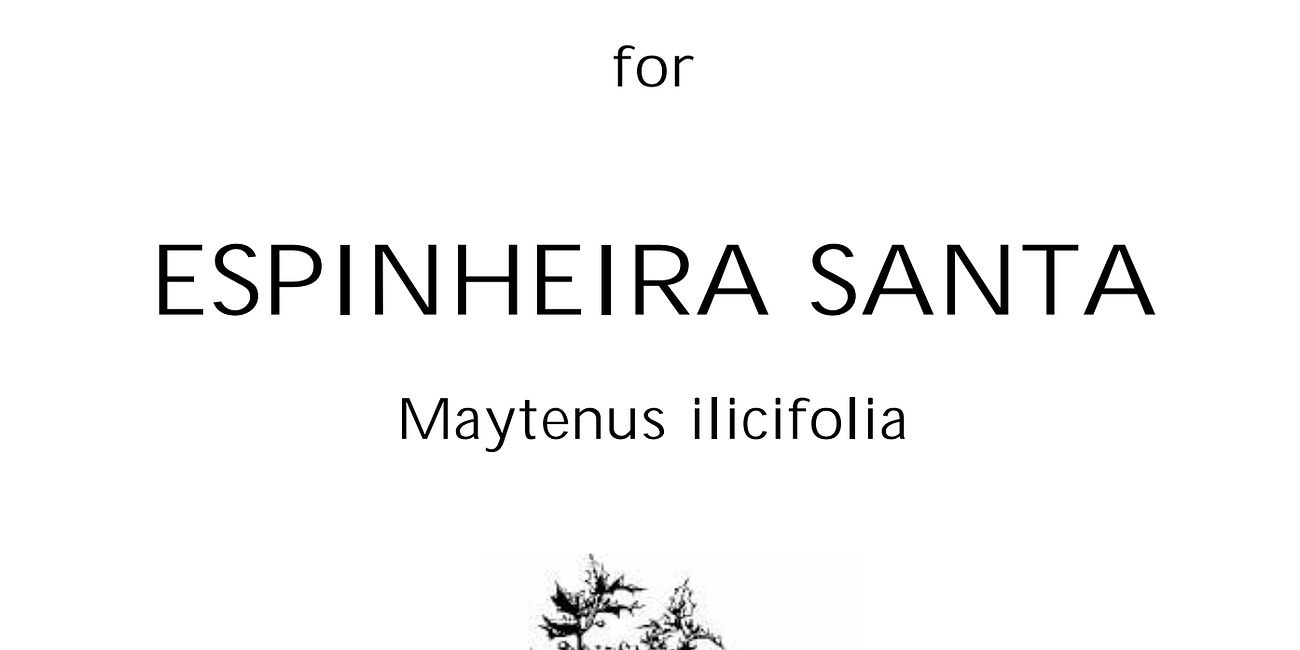

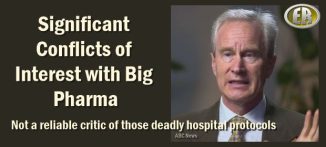
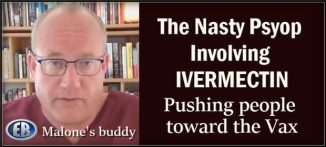
Leave a Reply